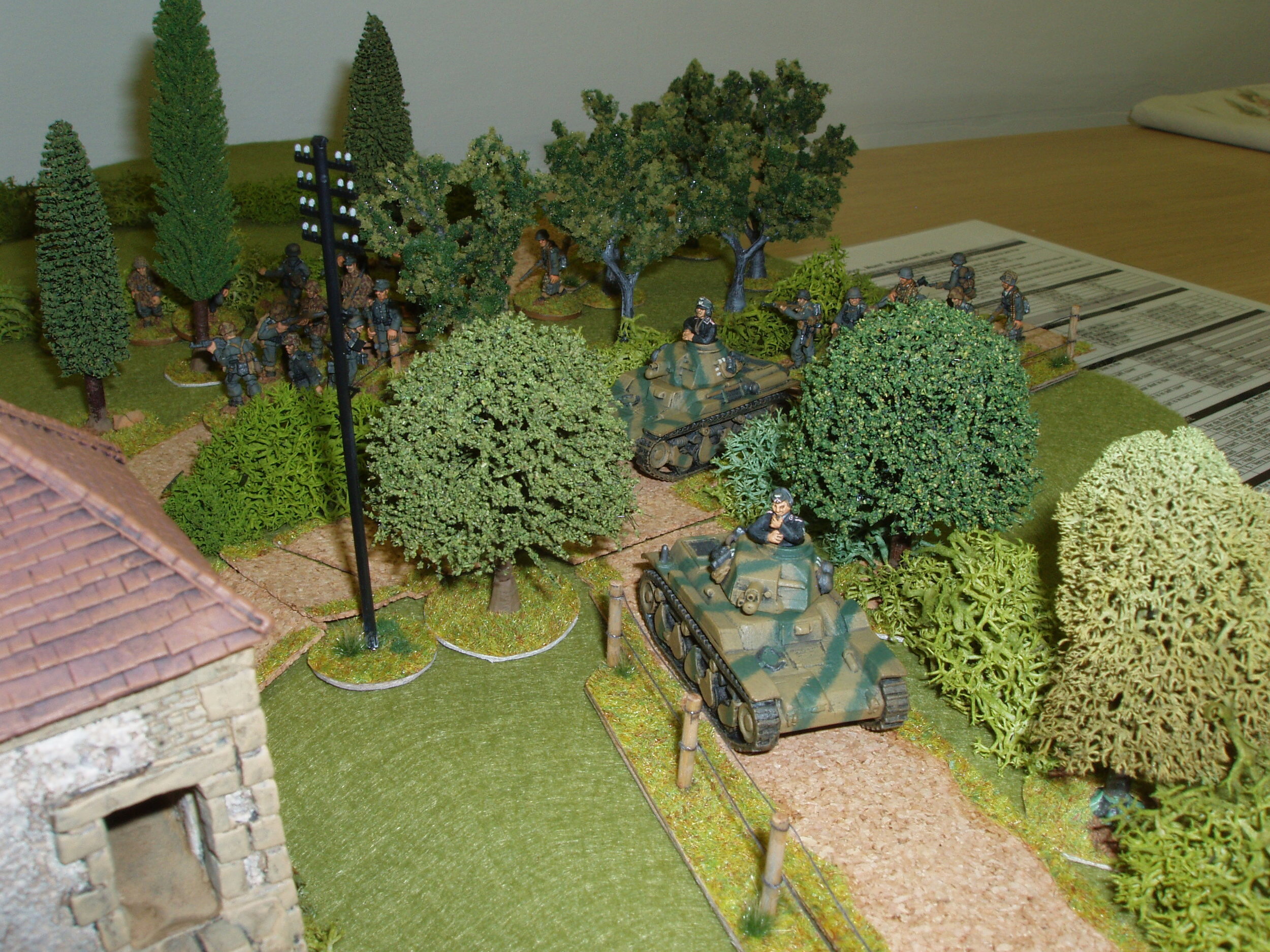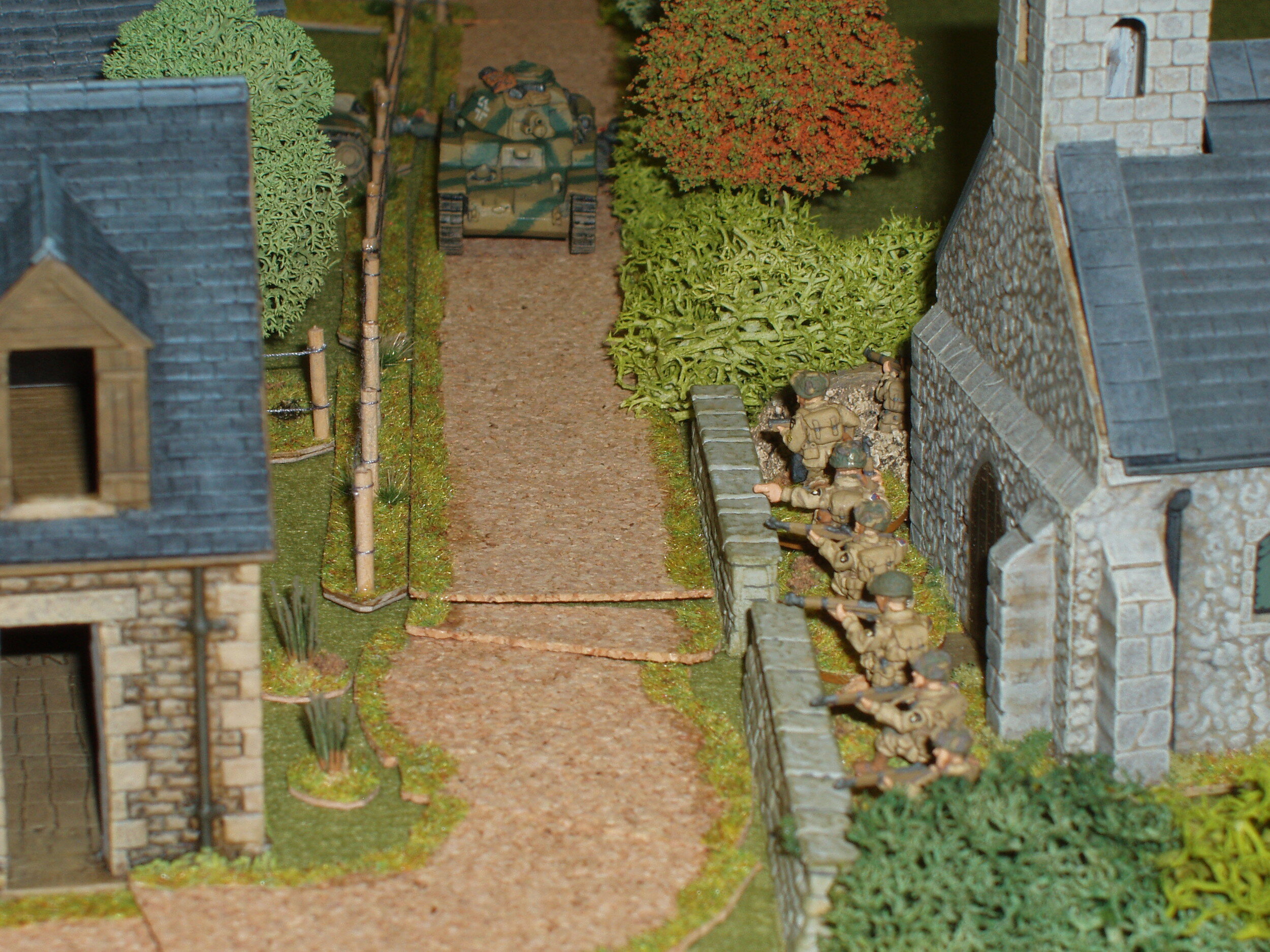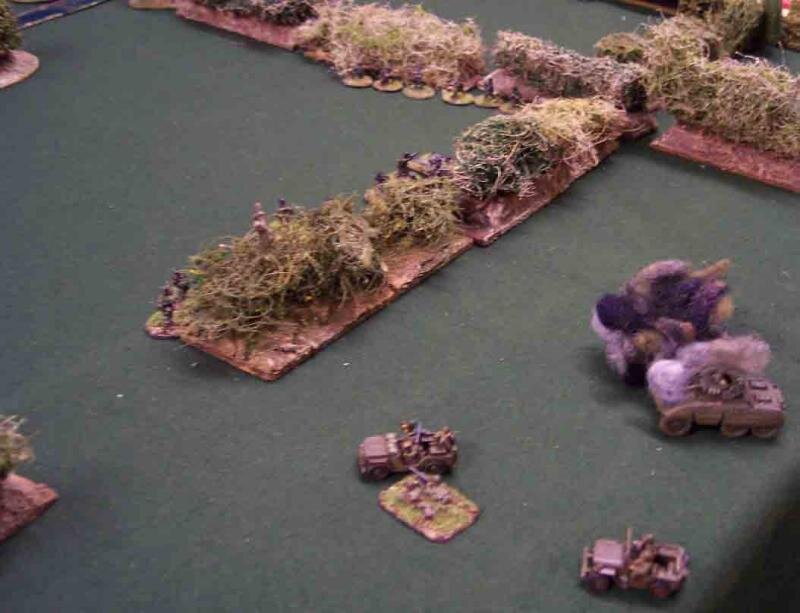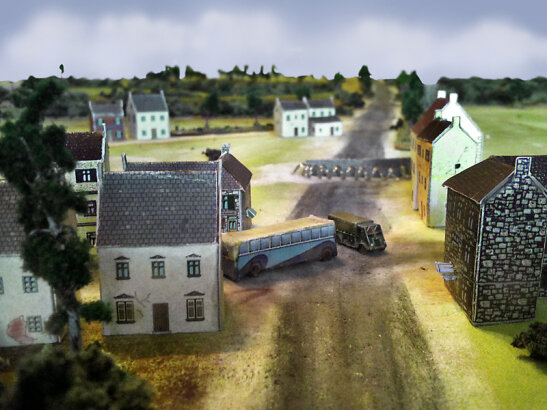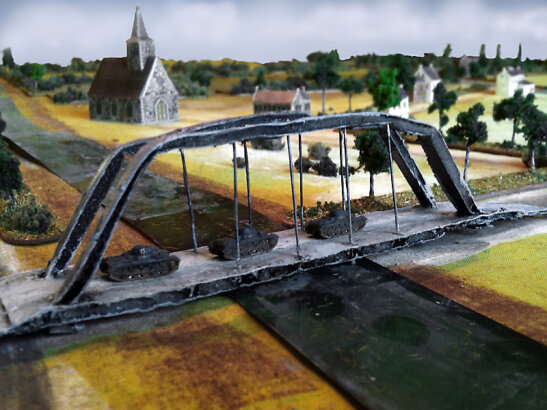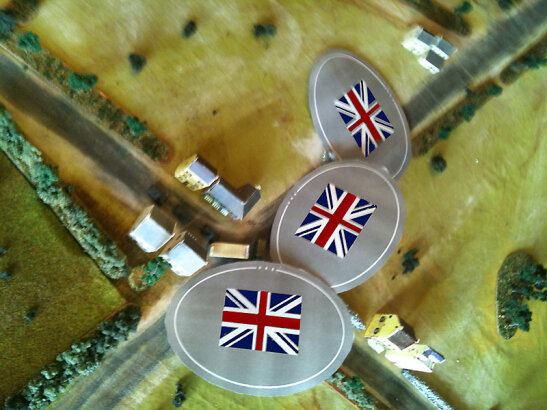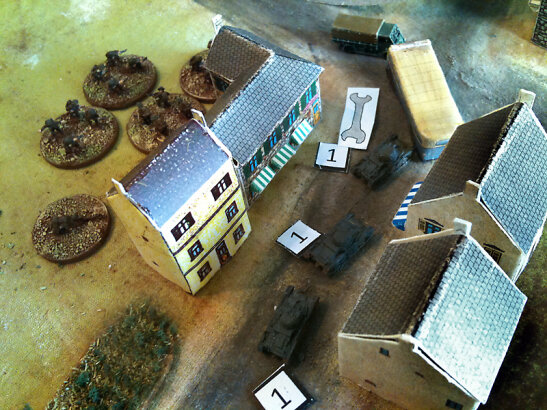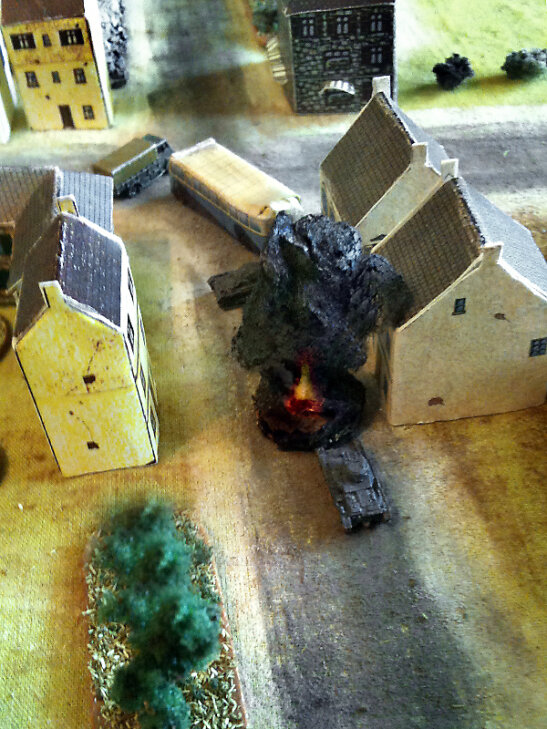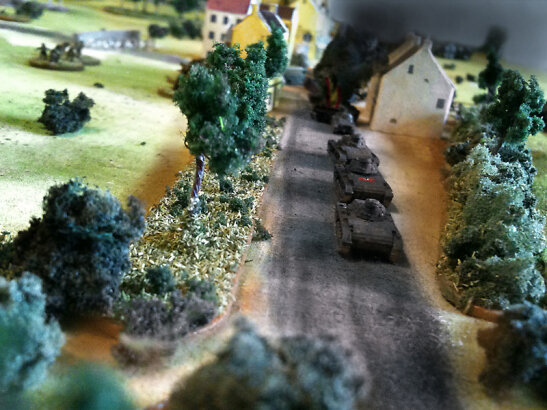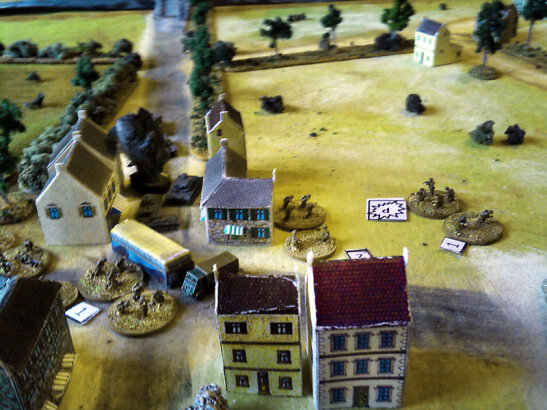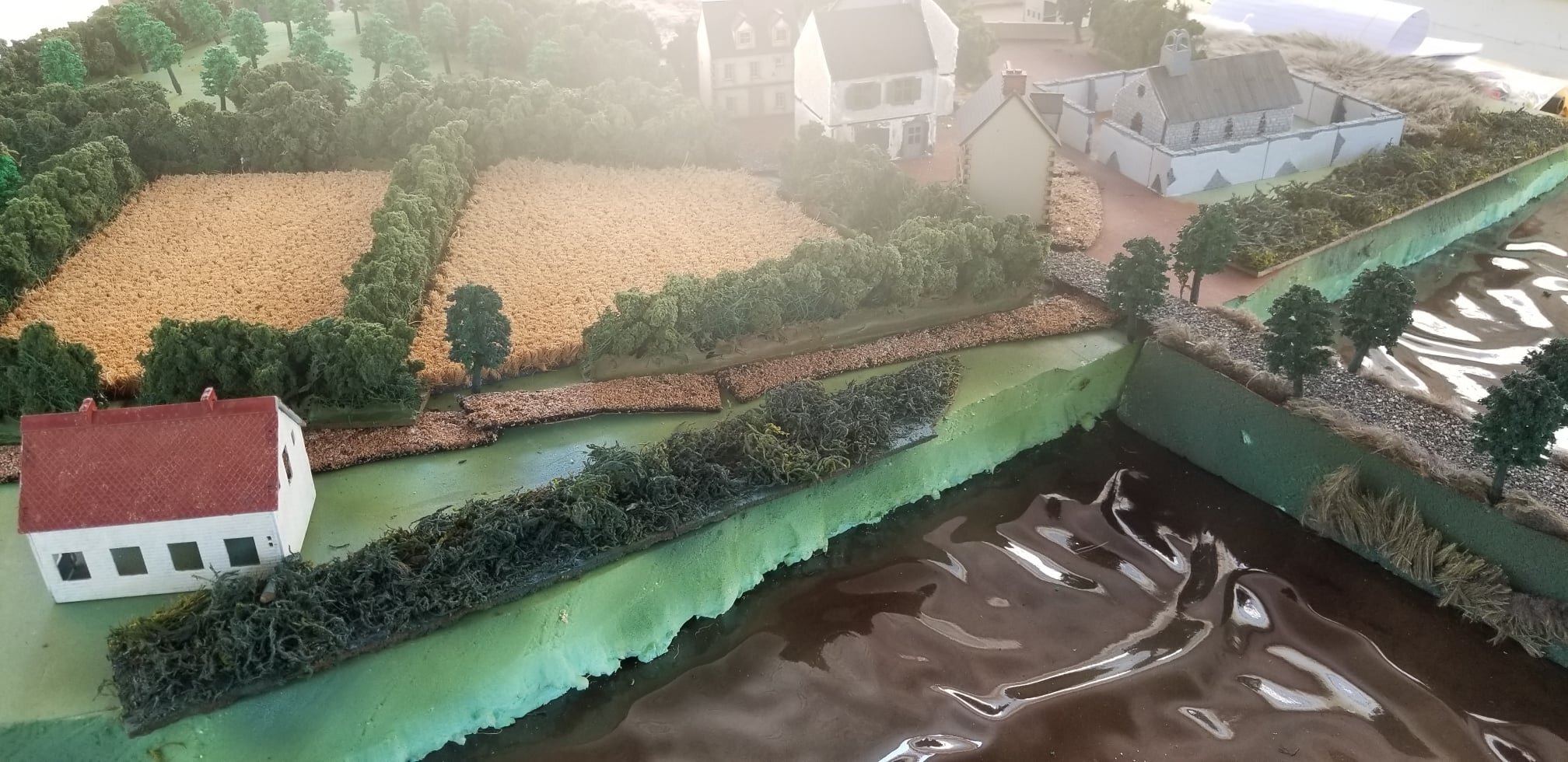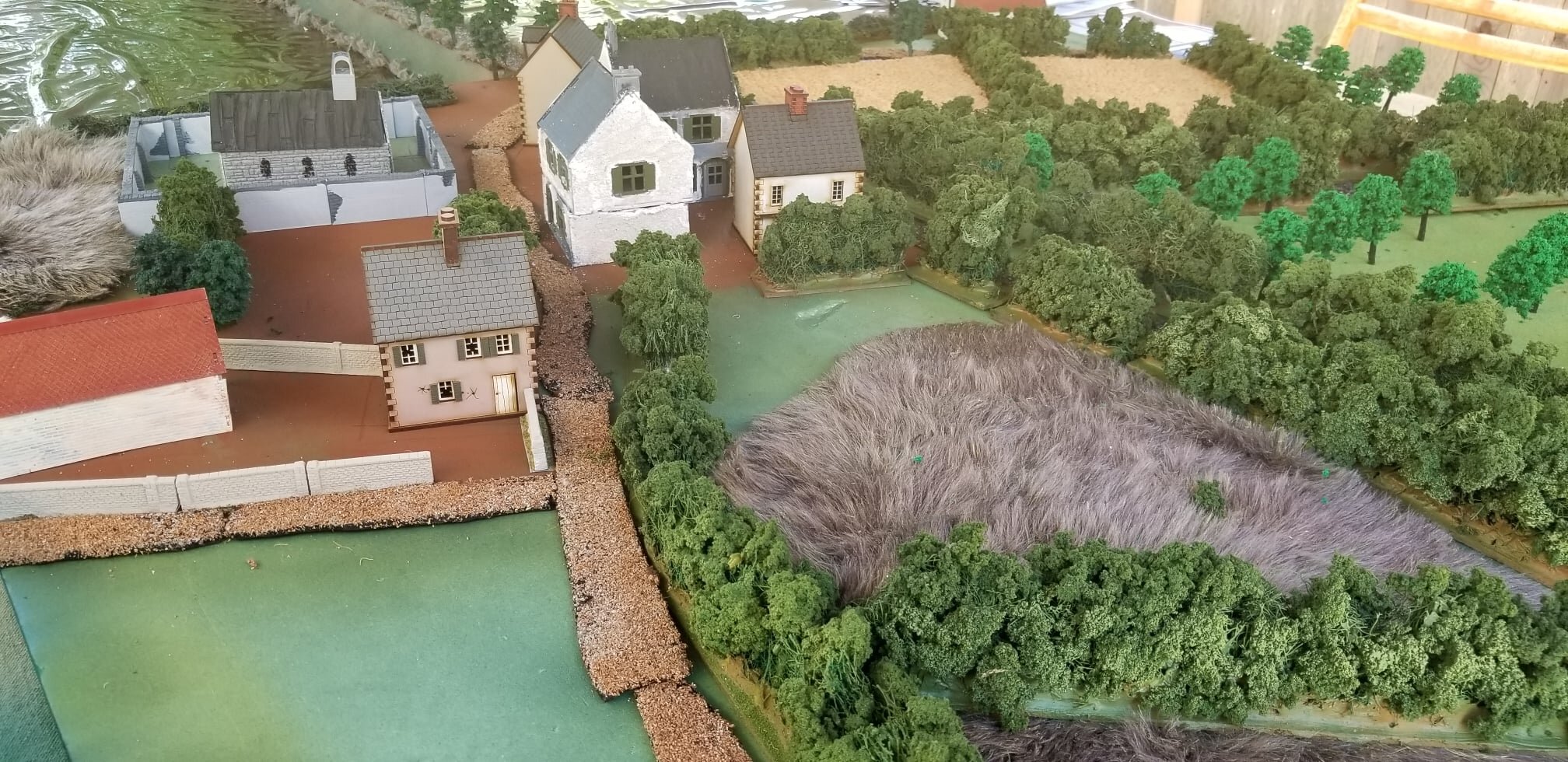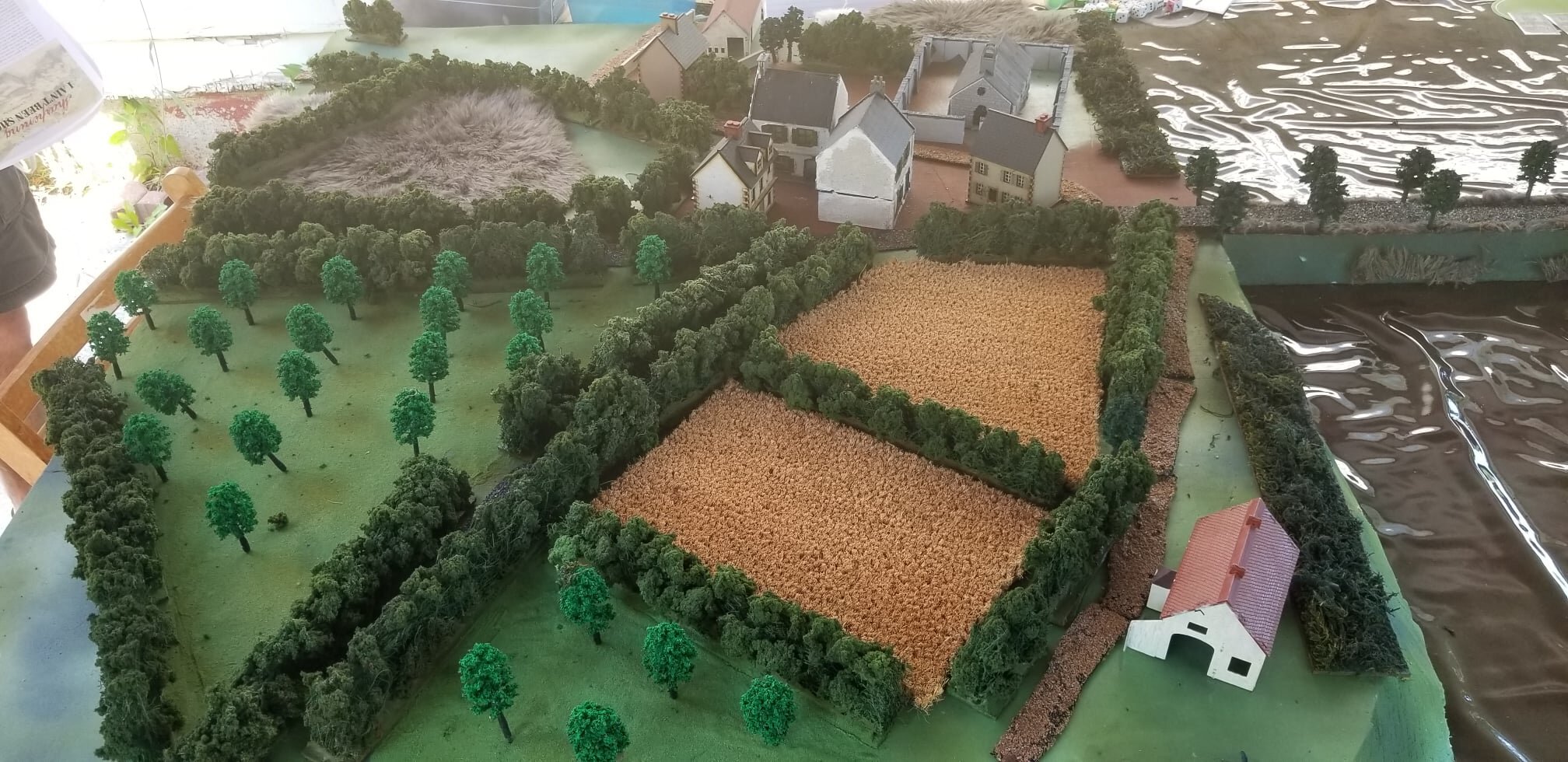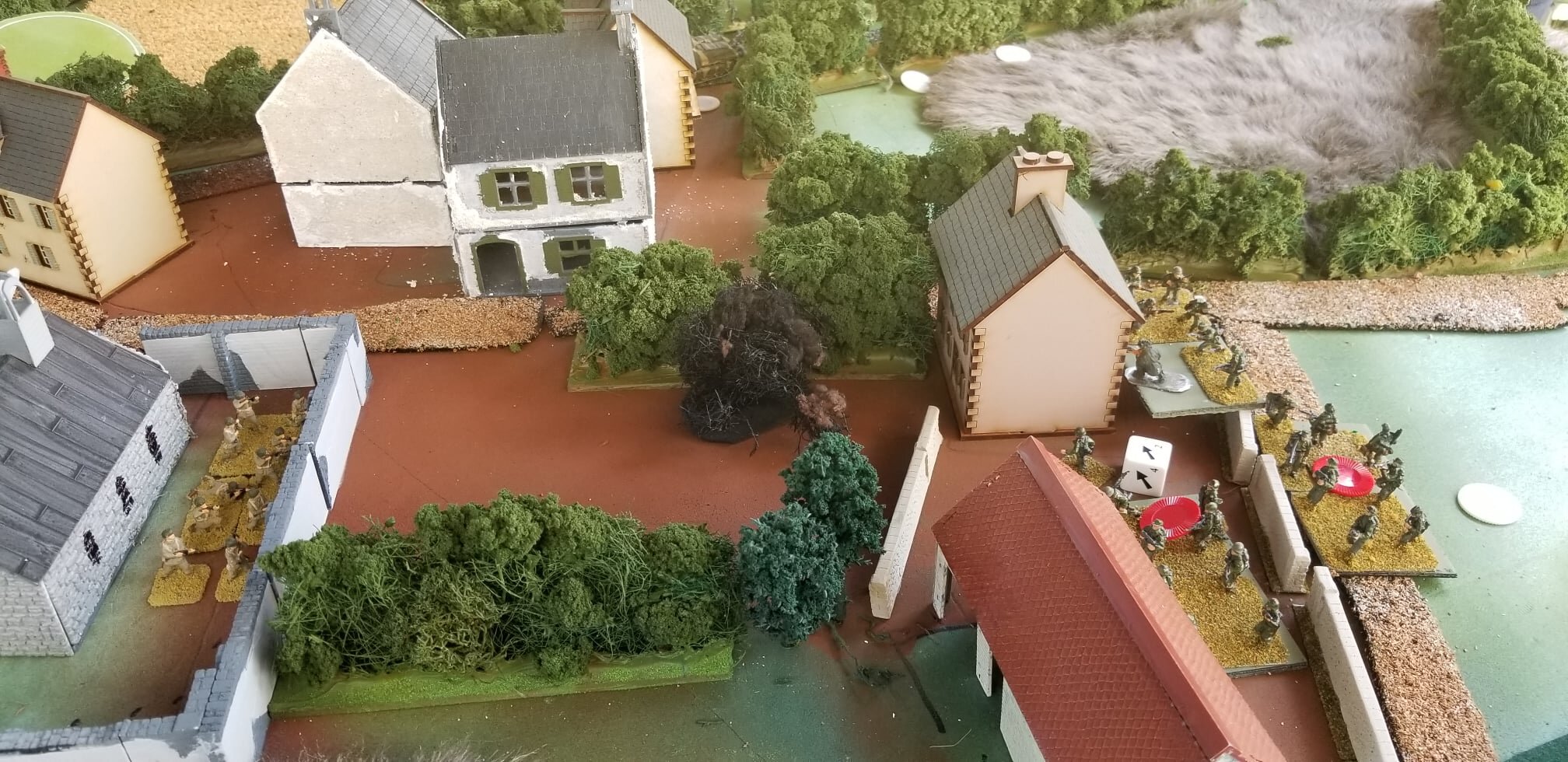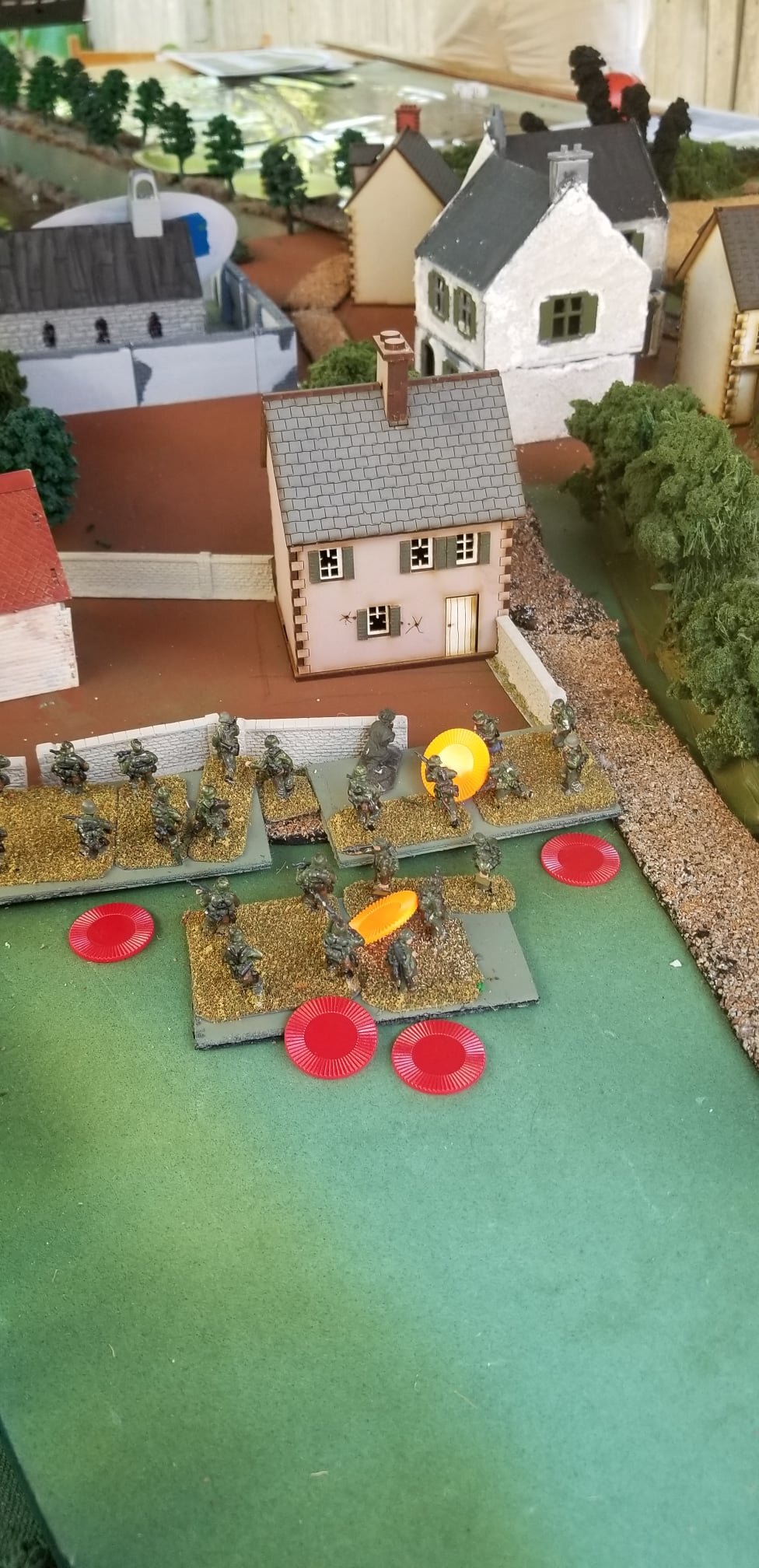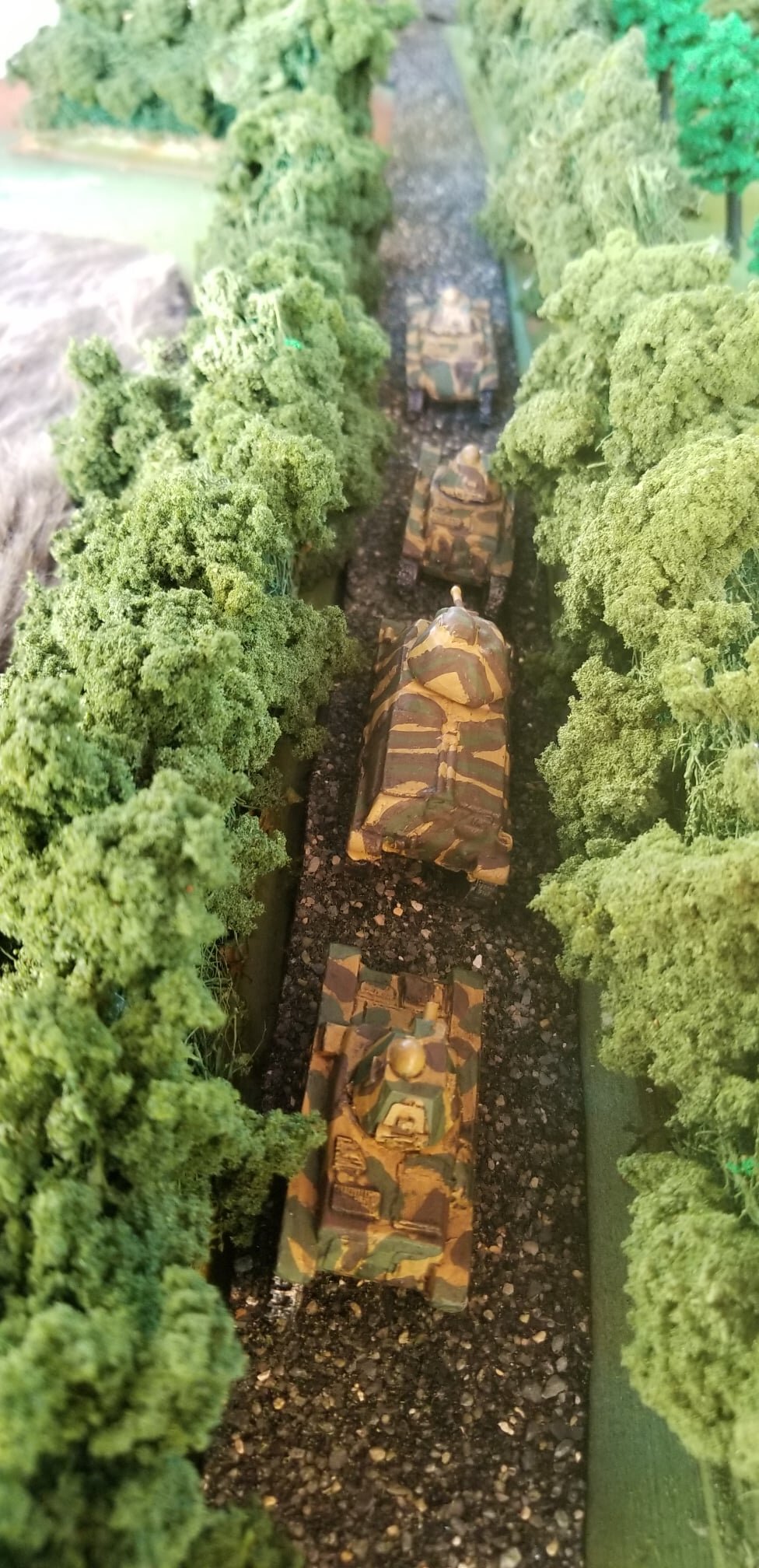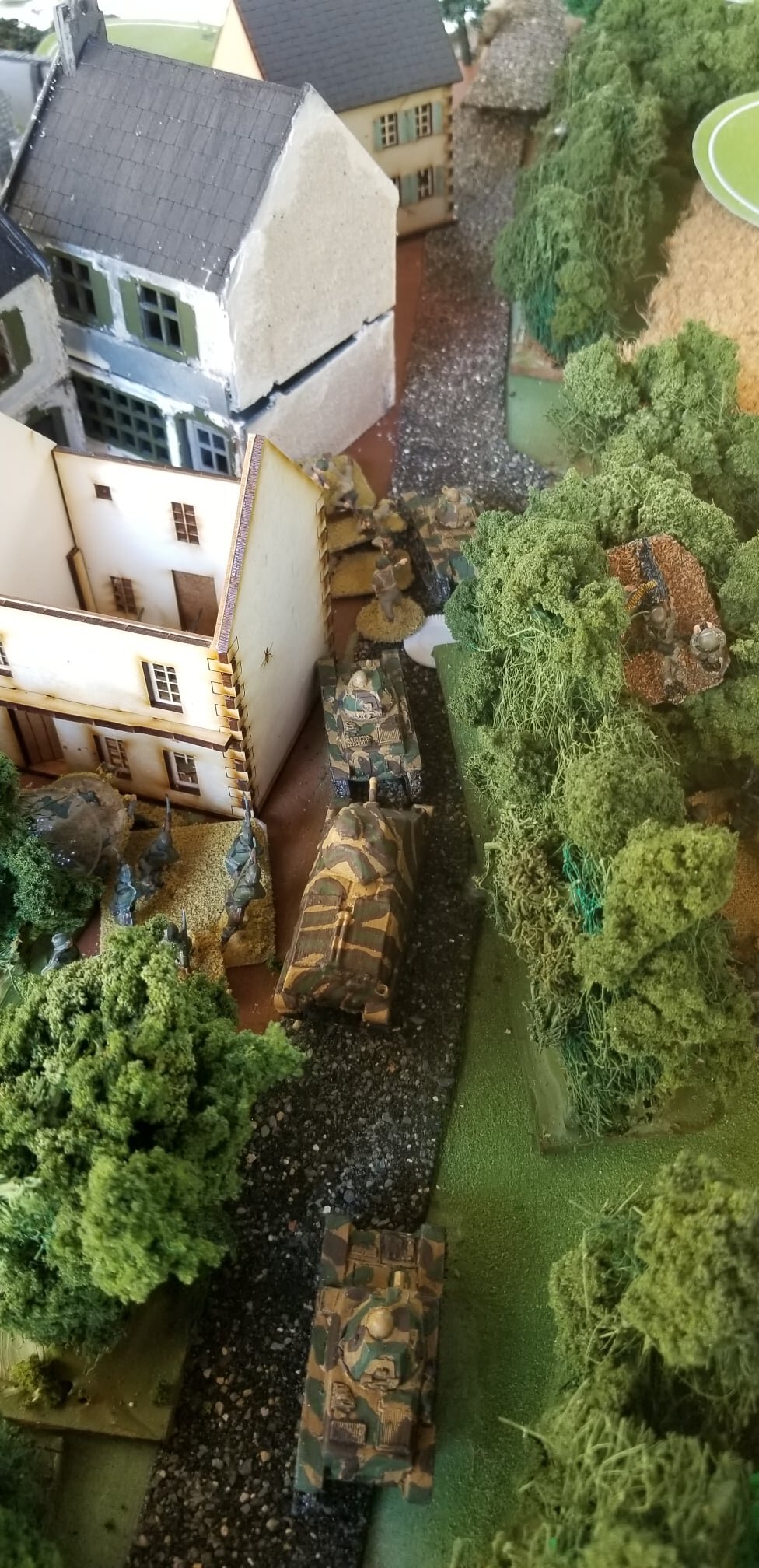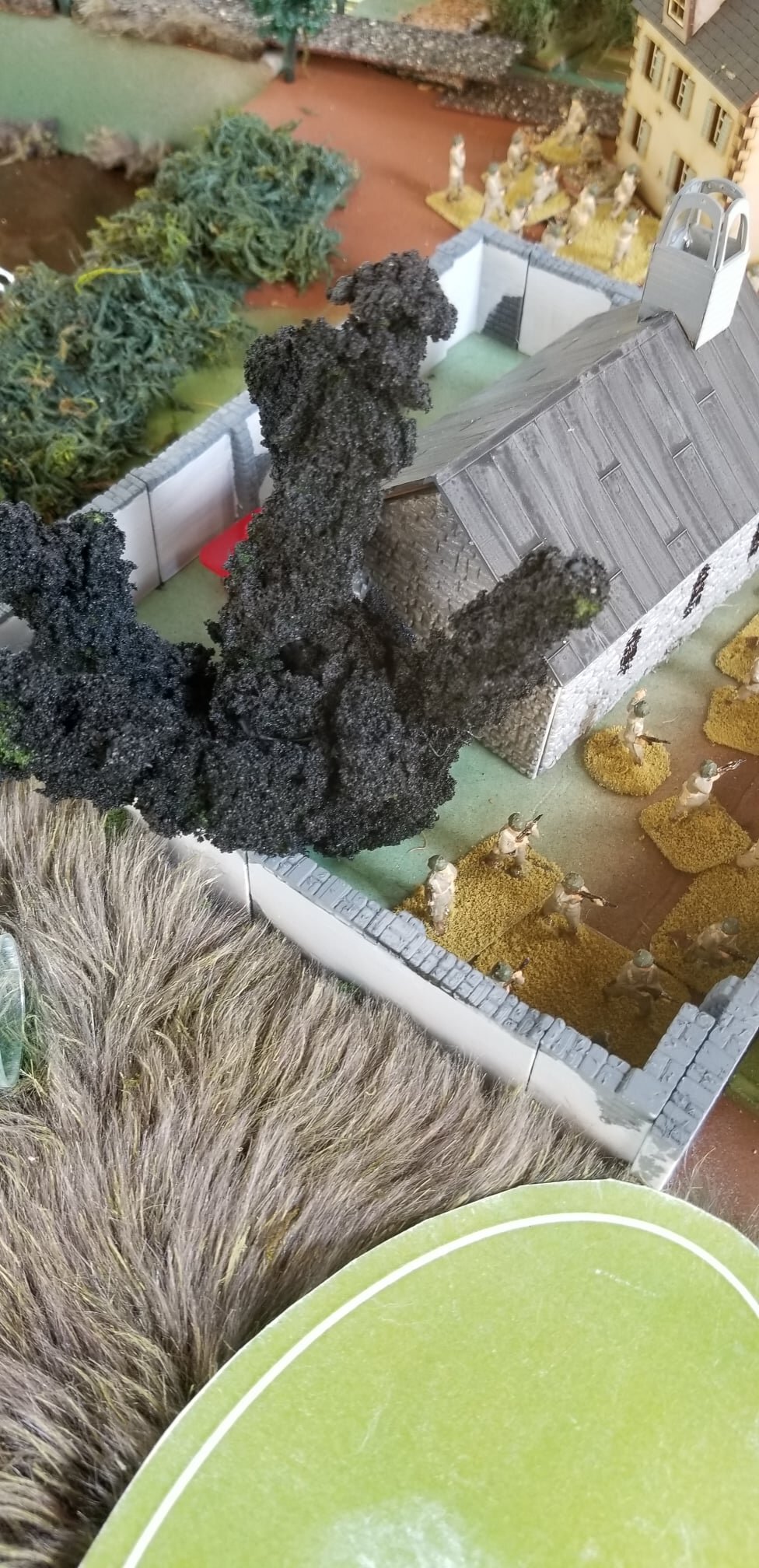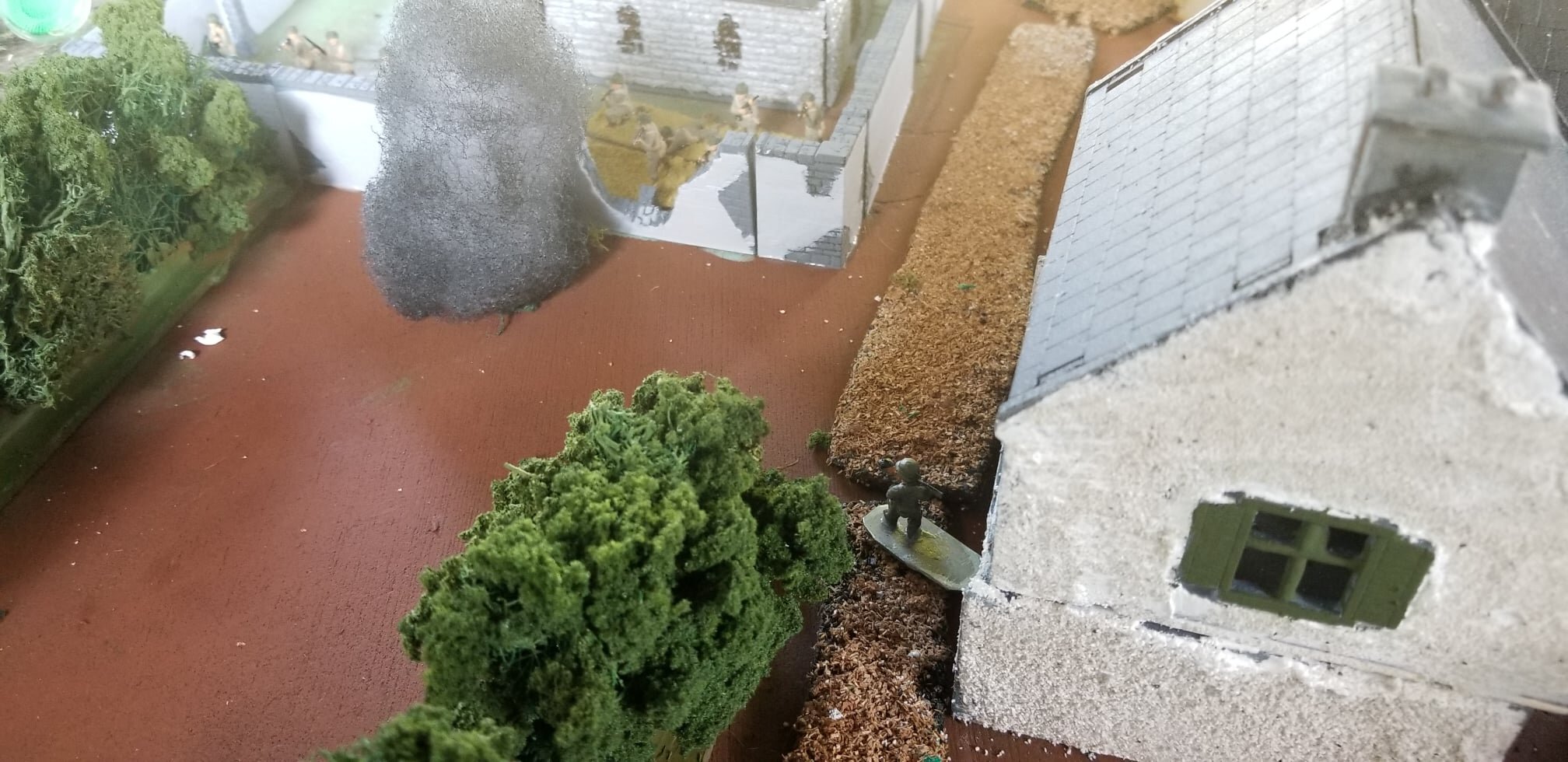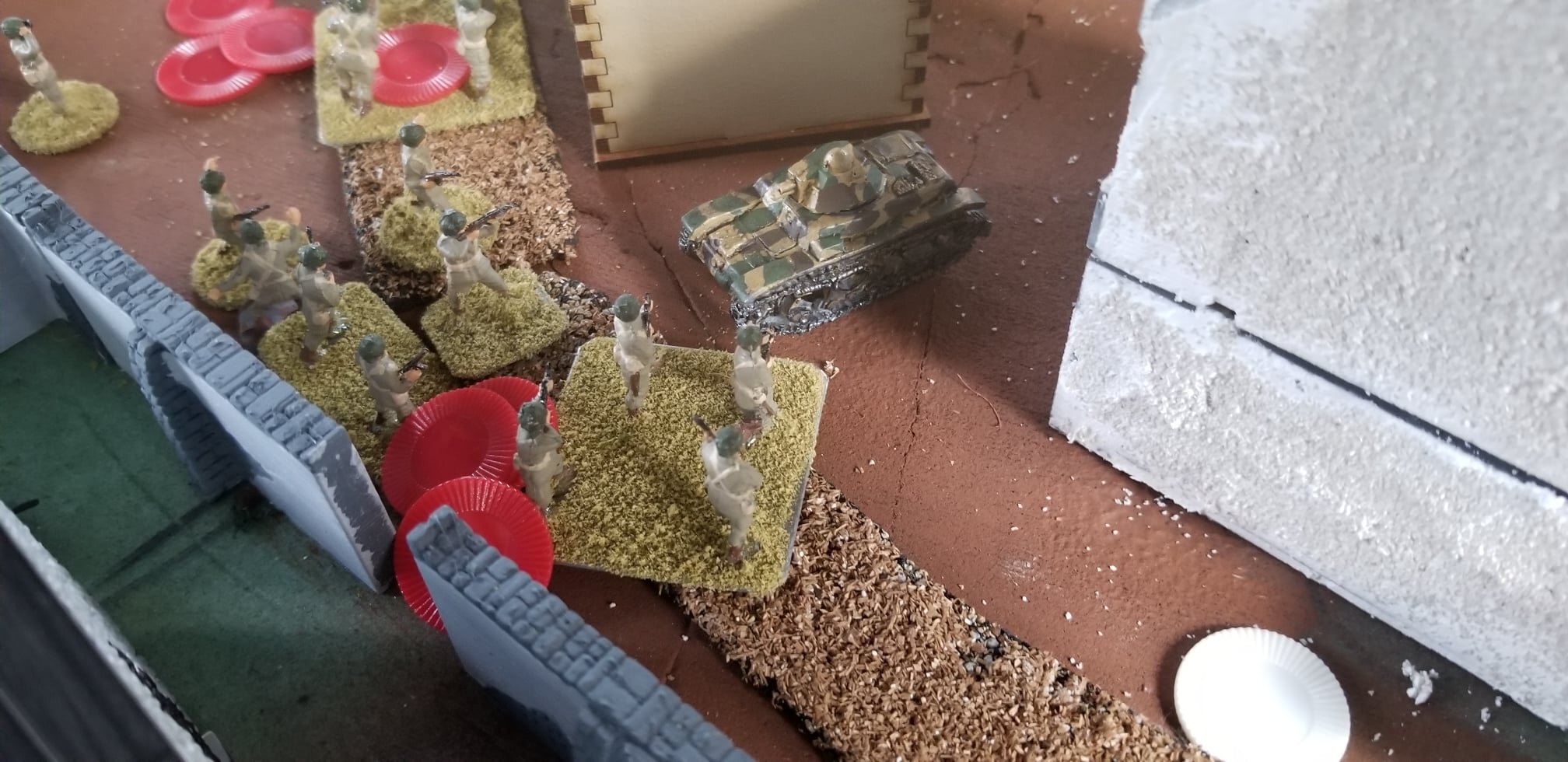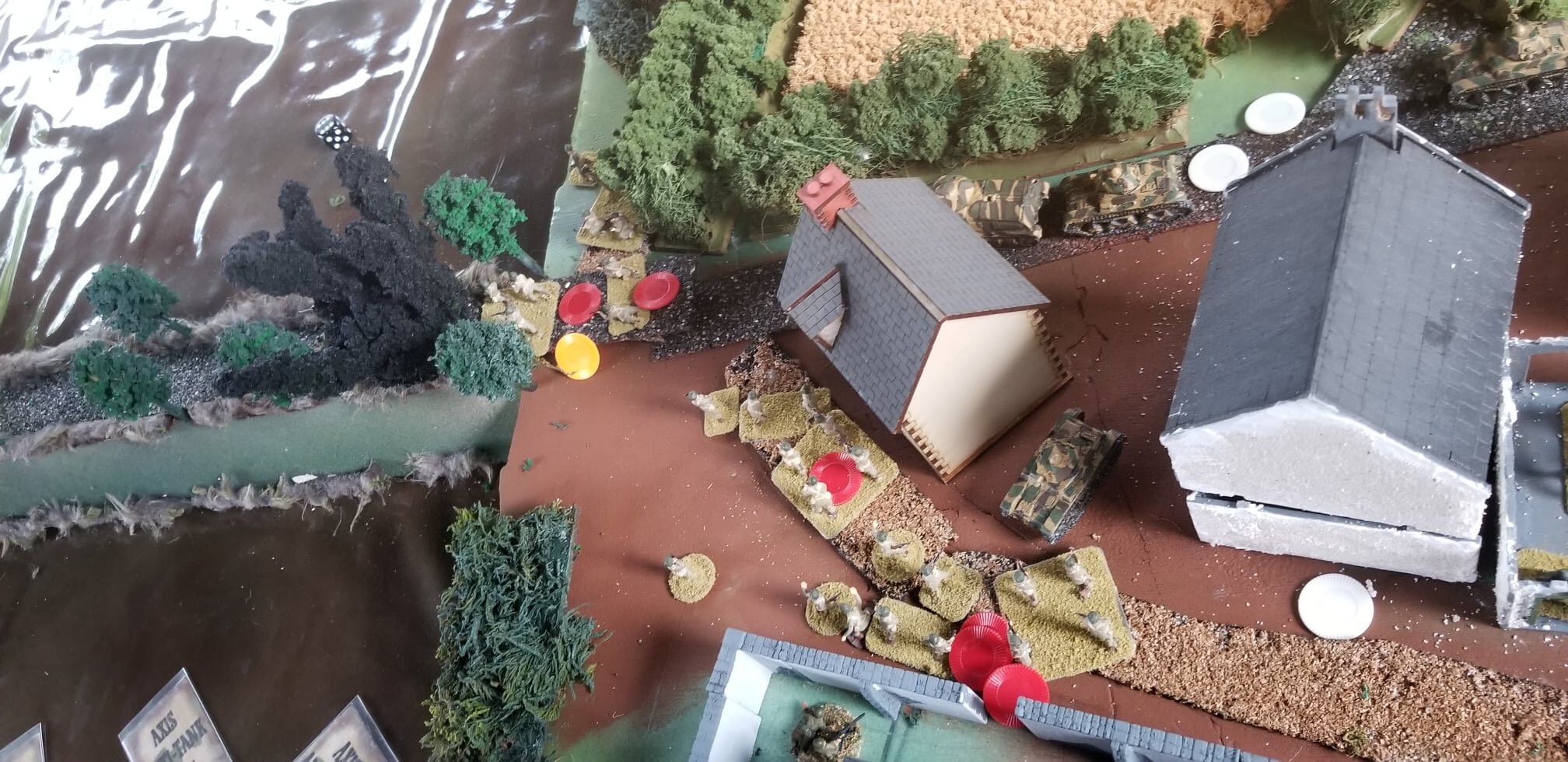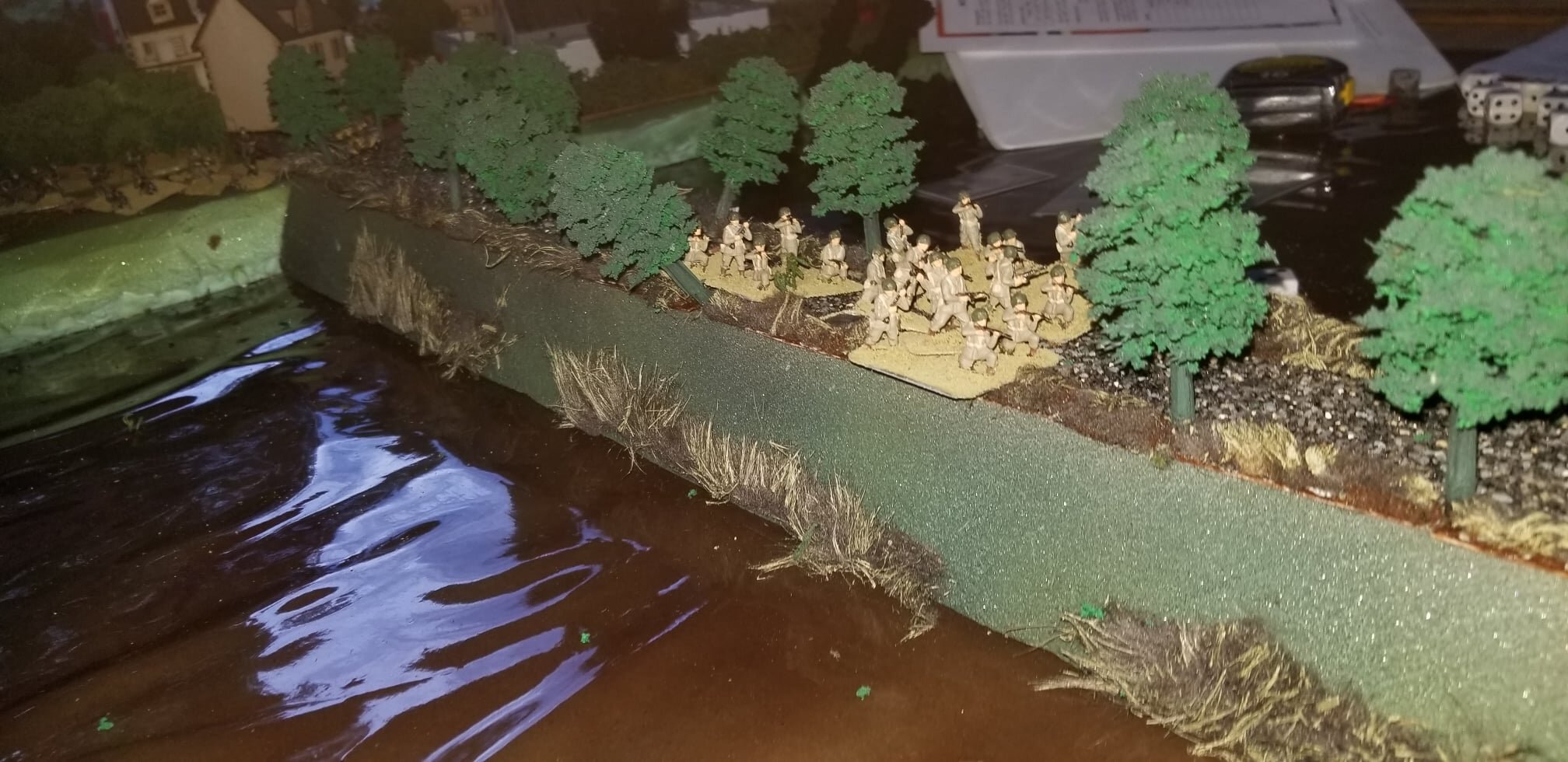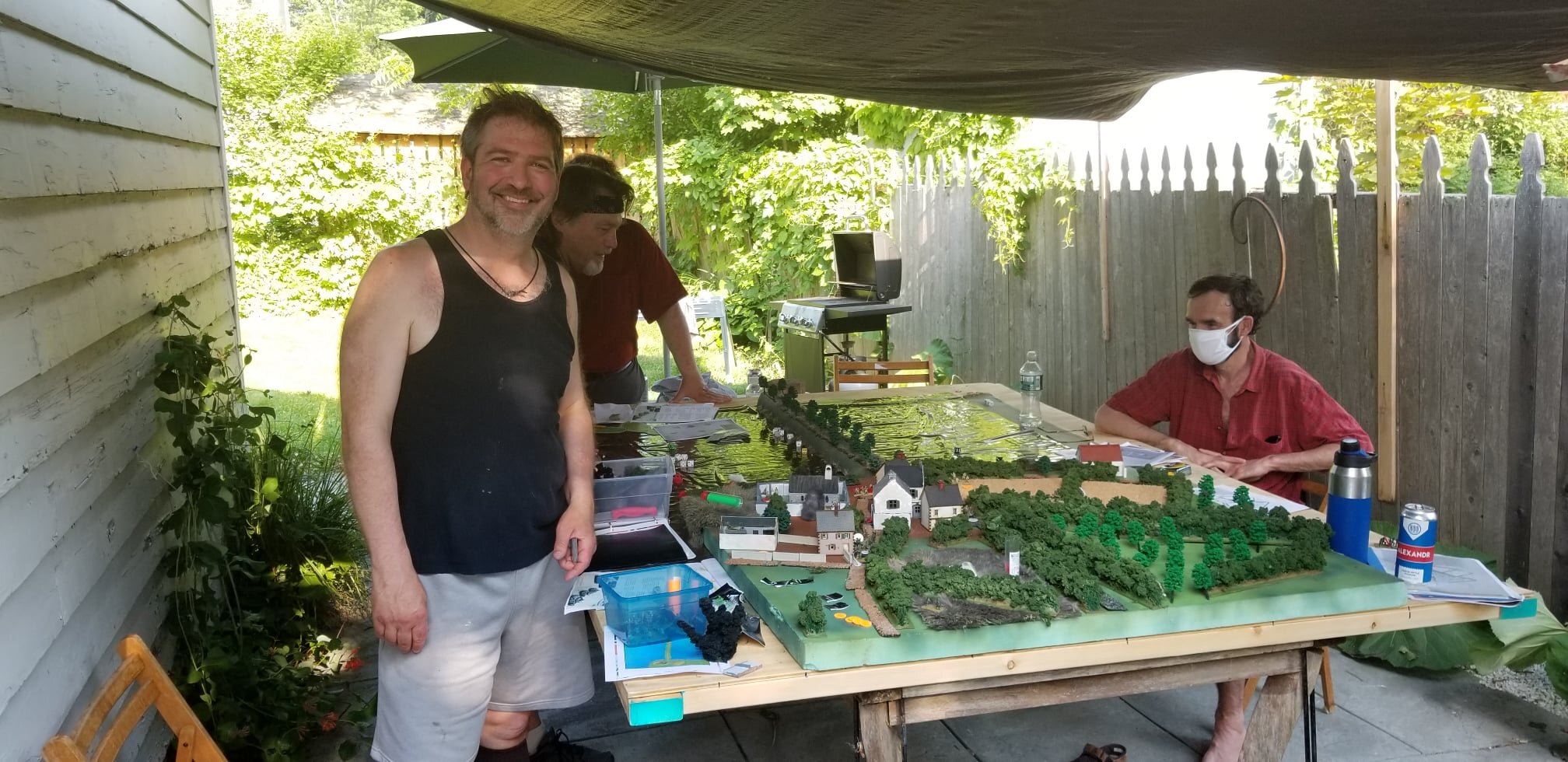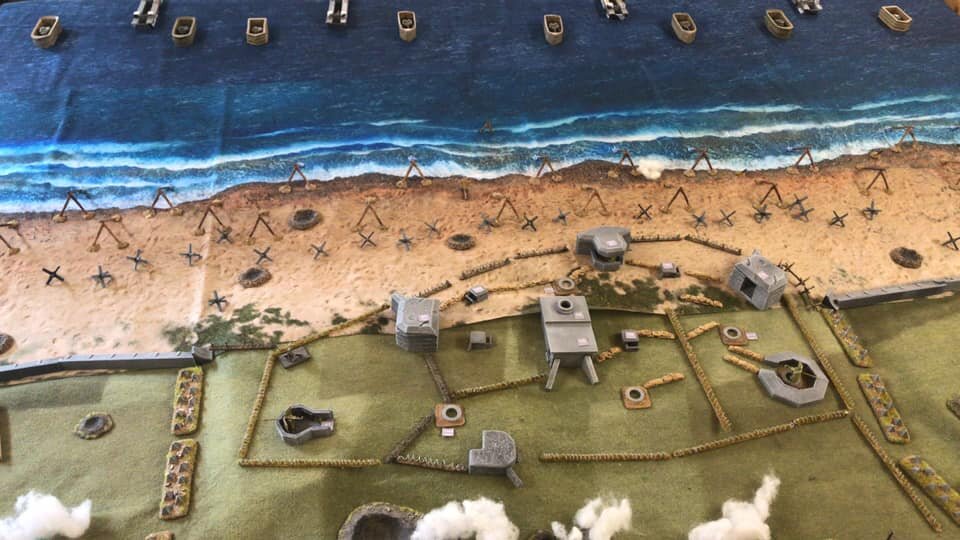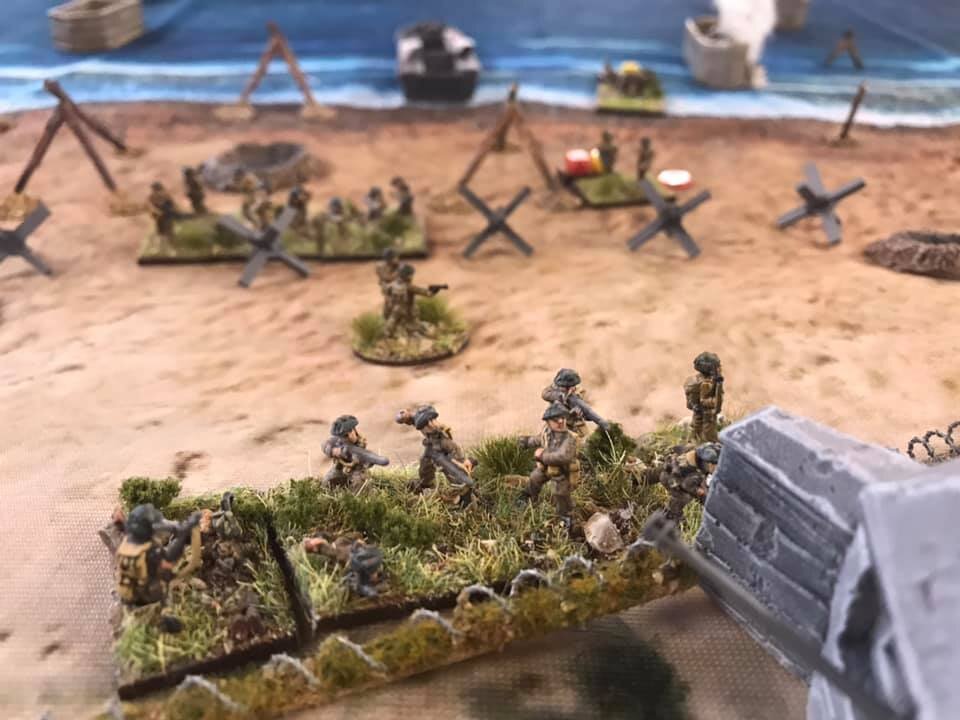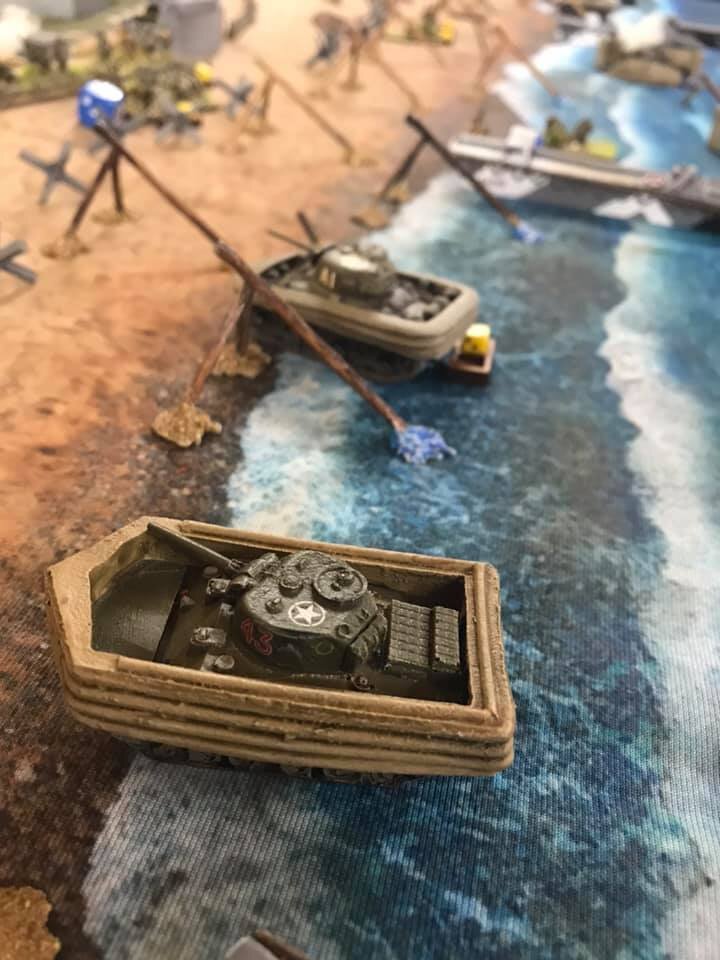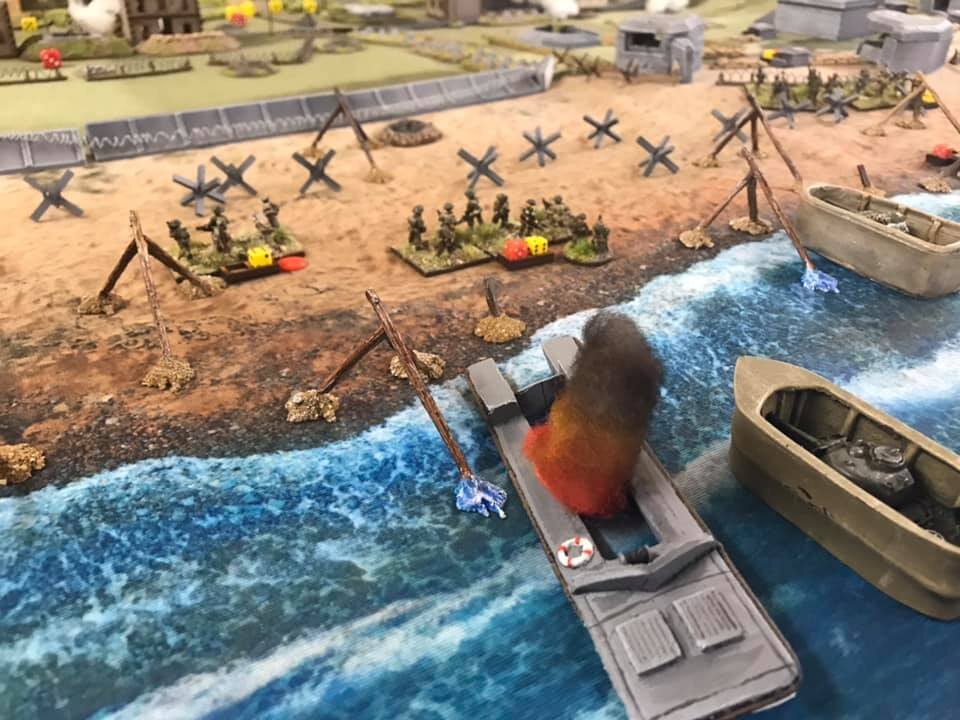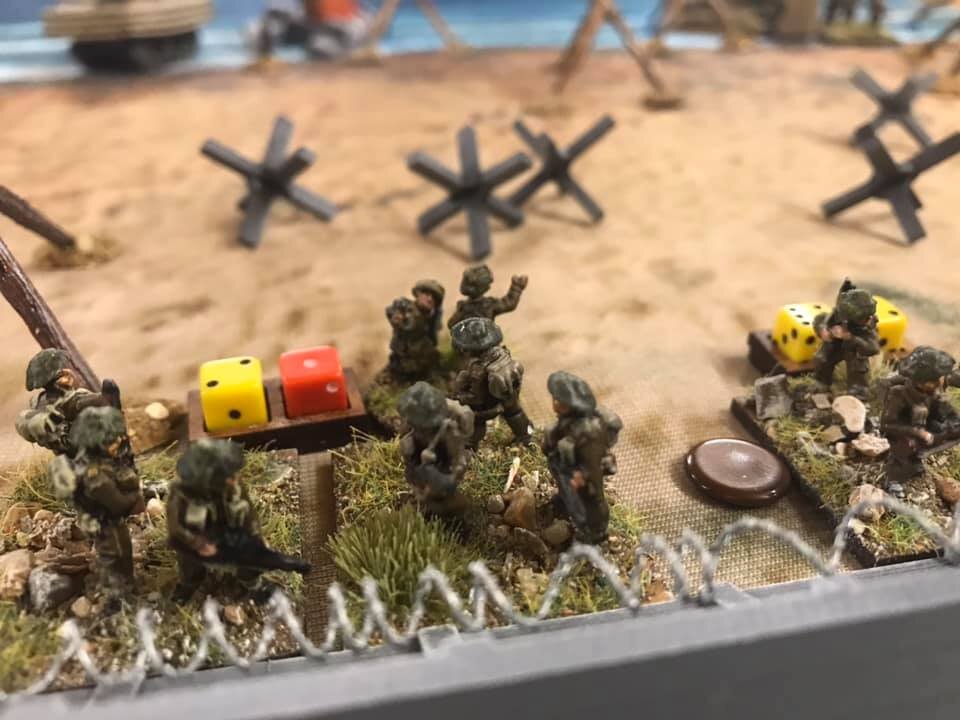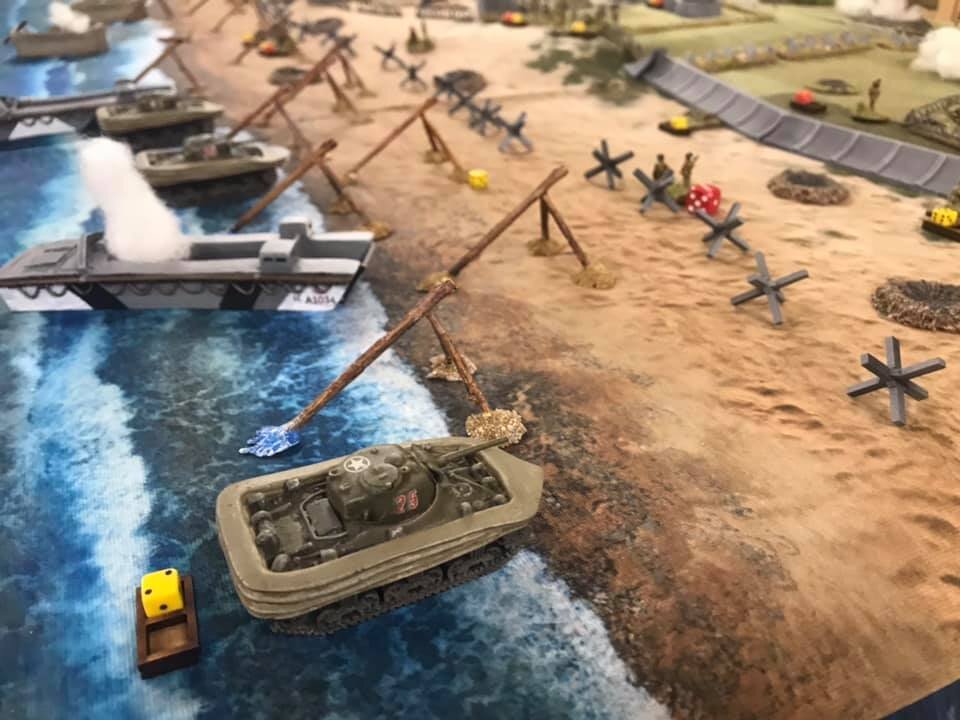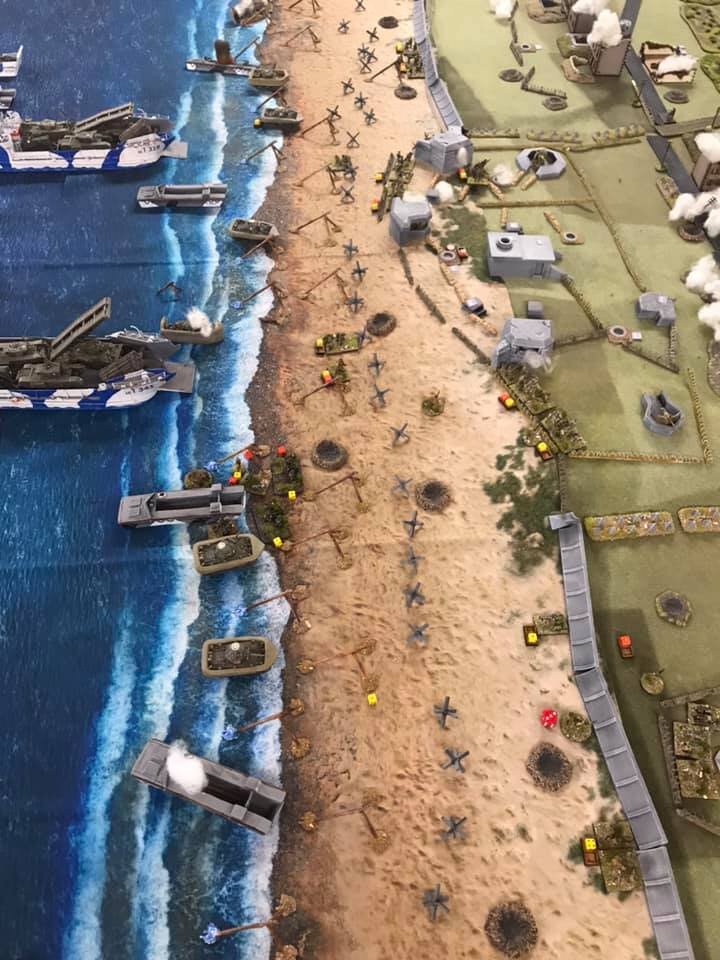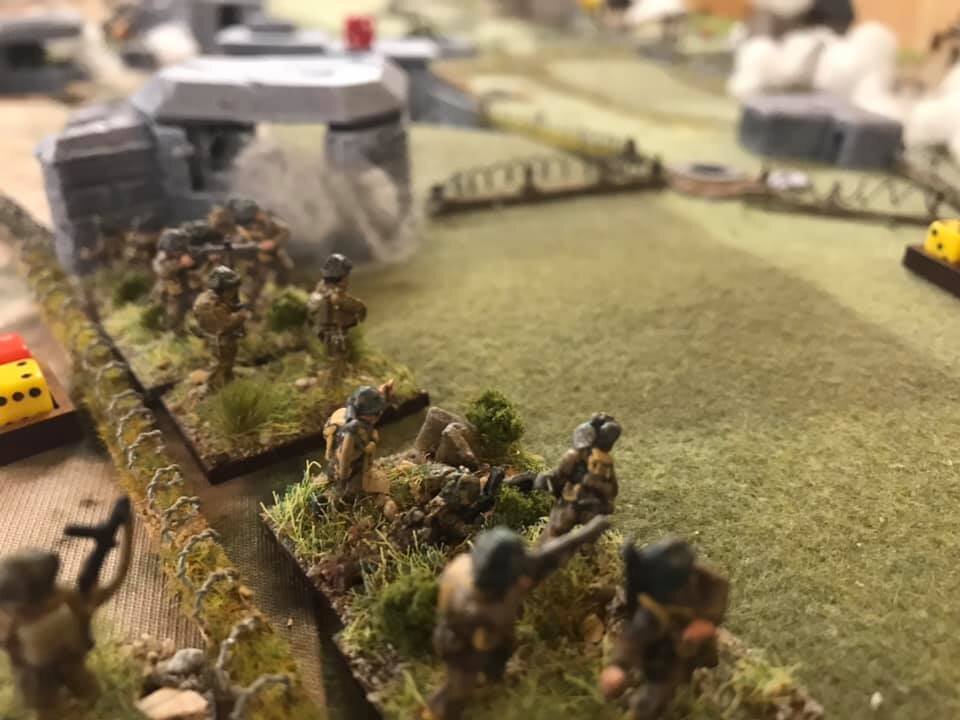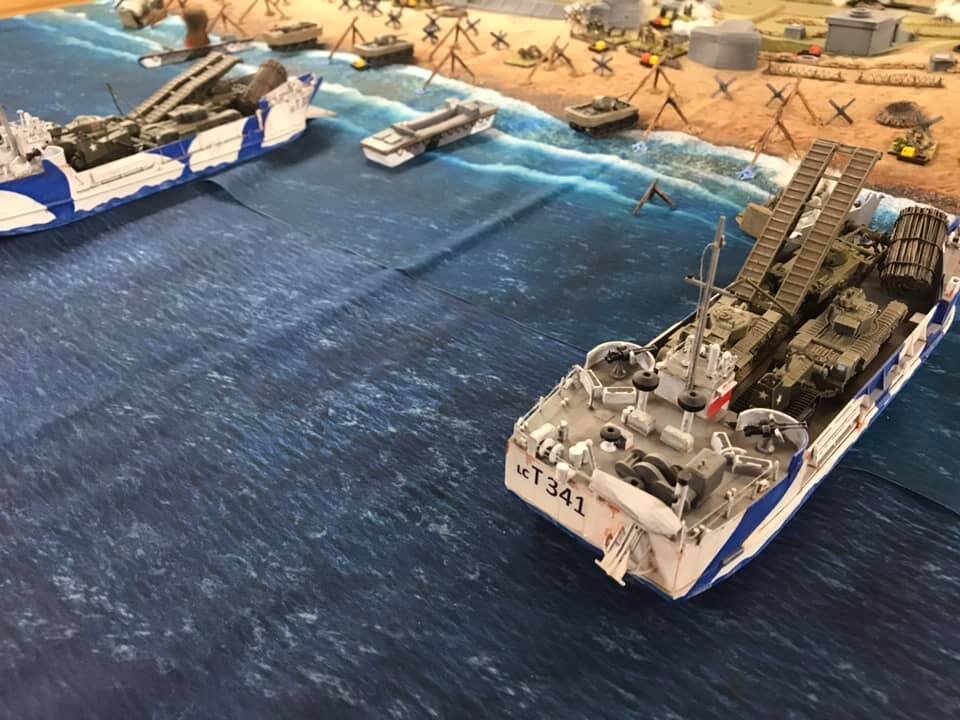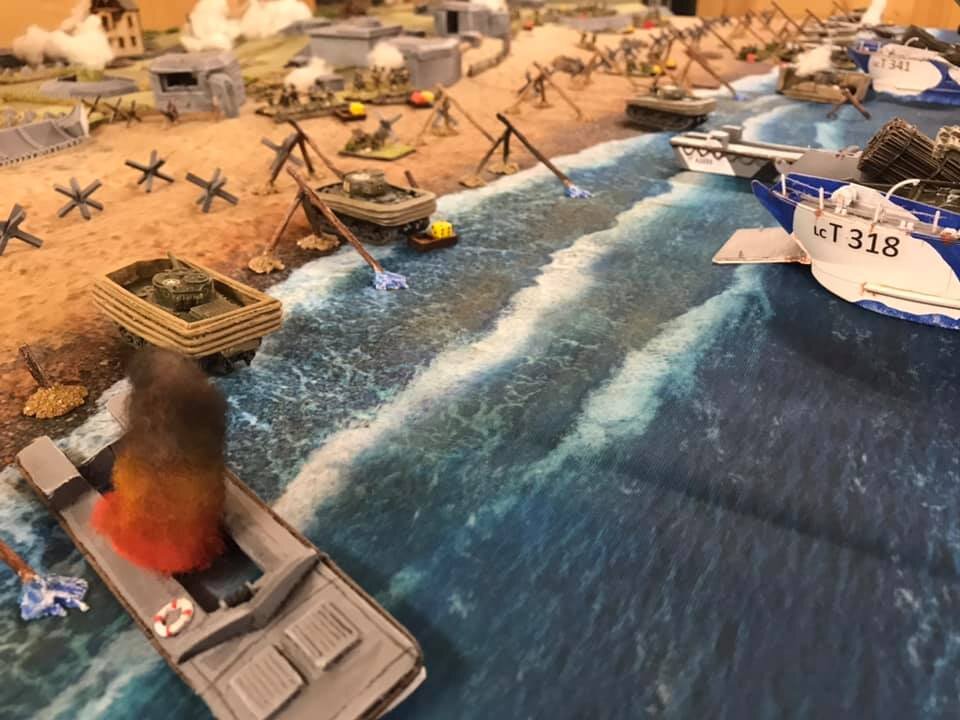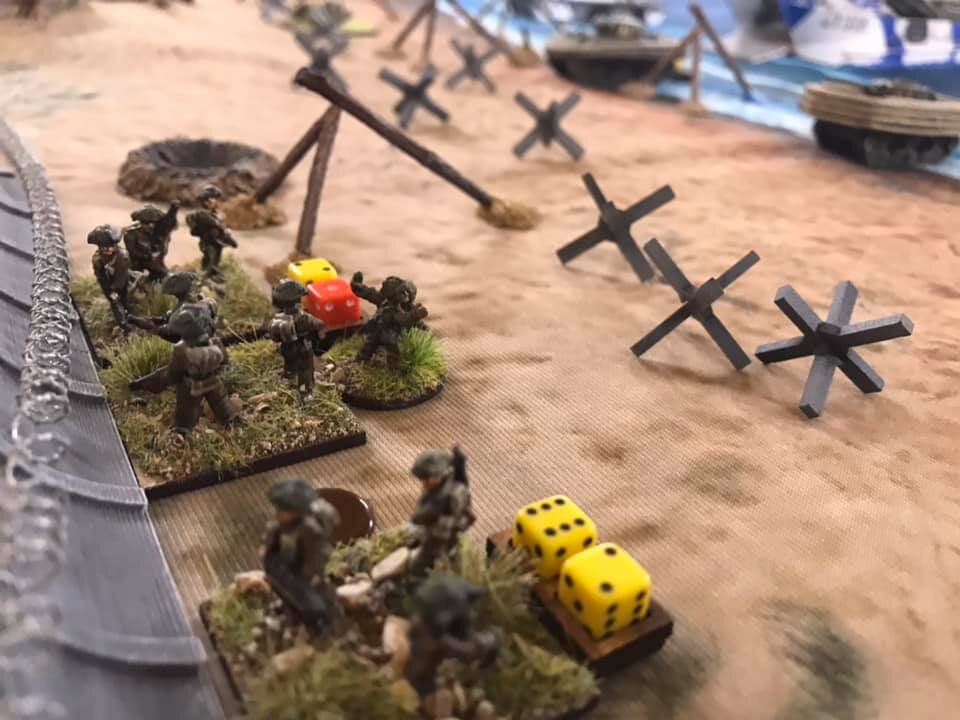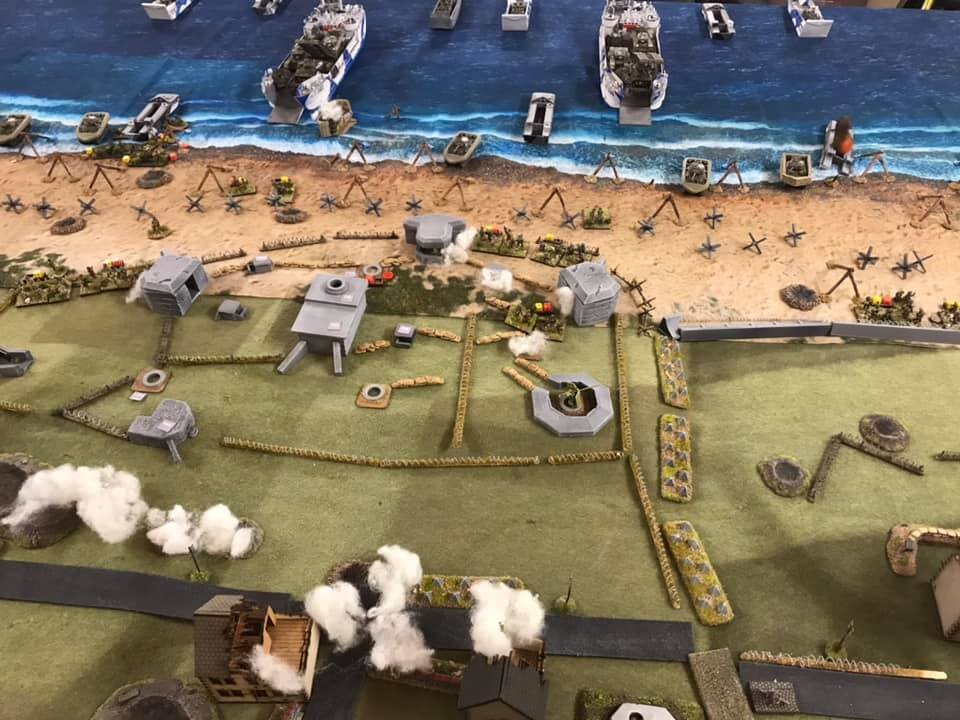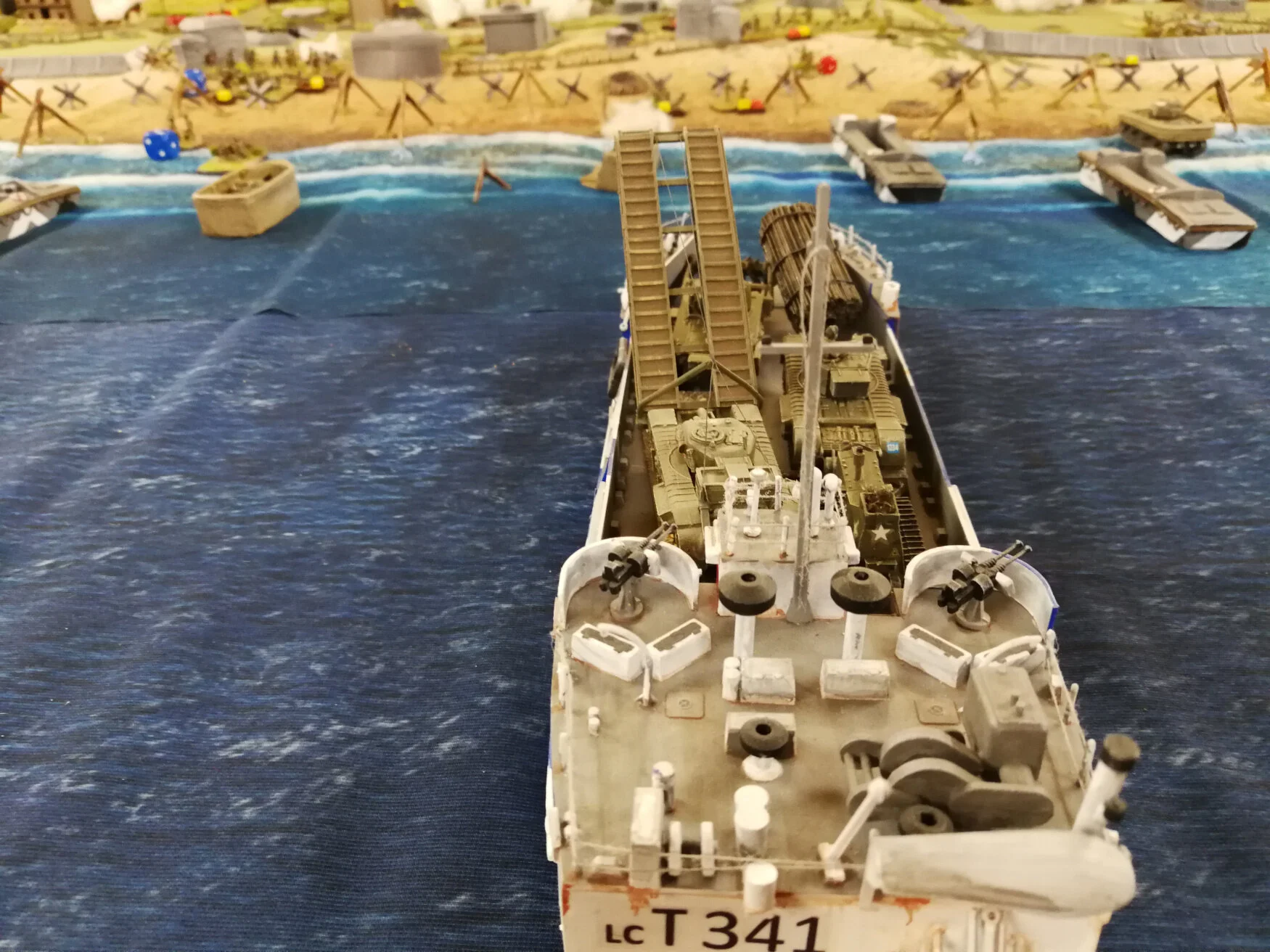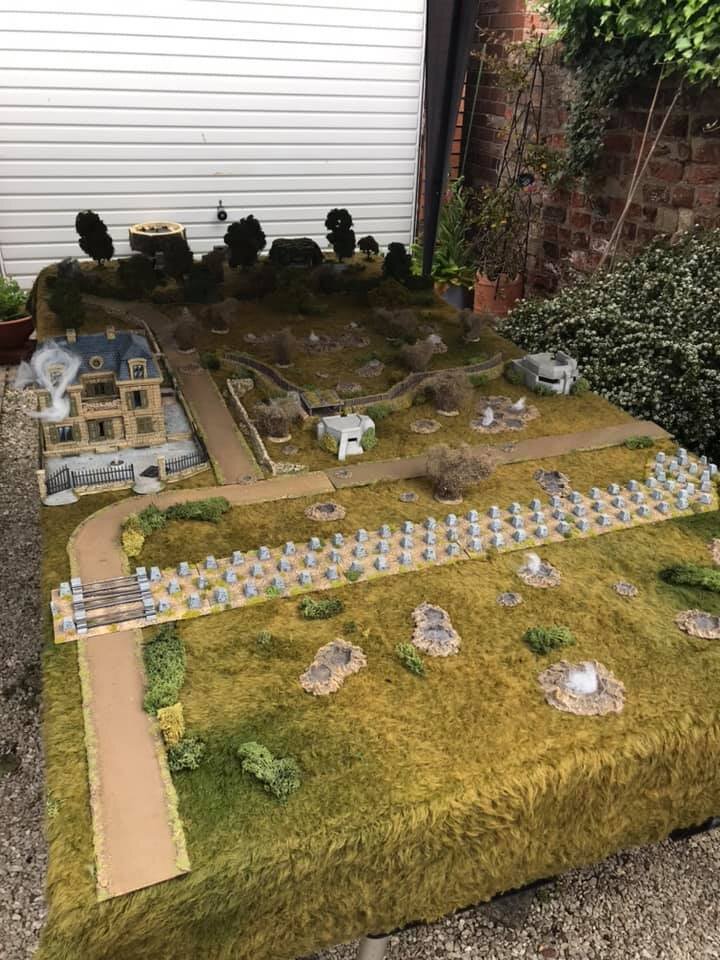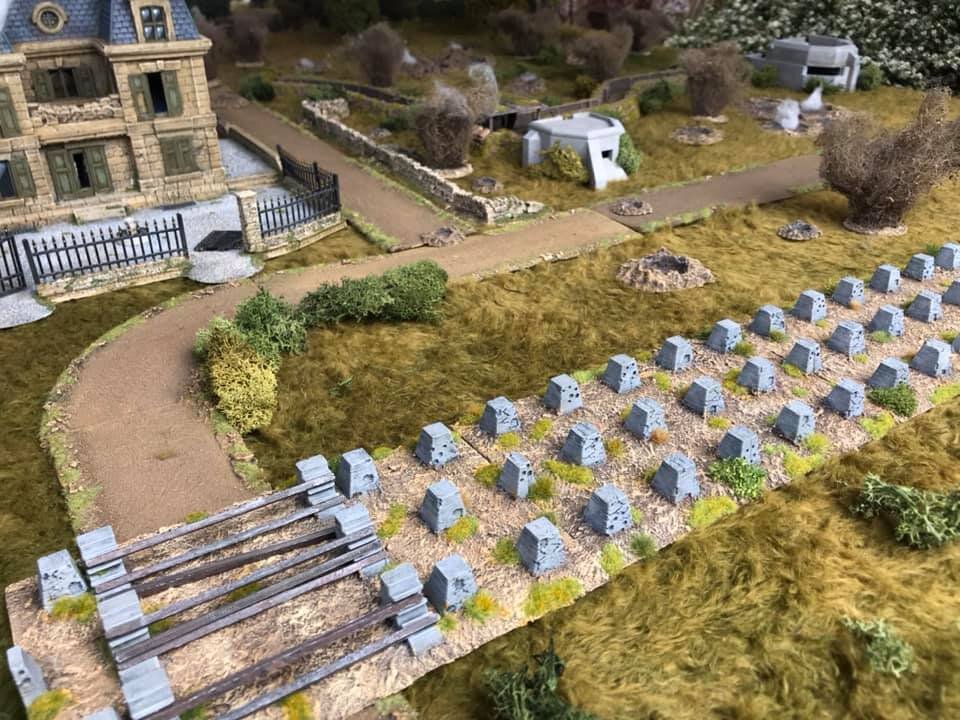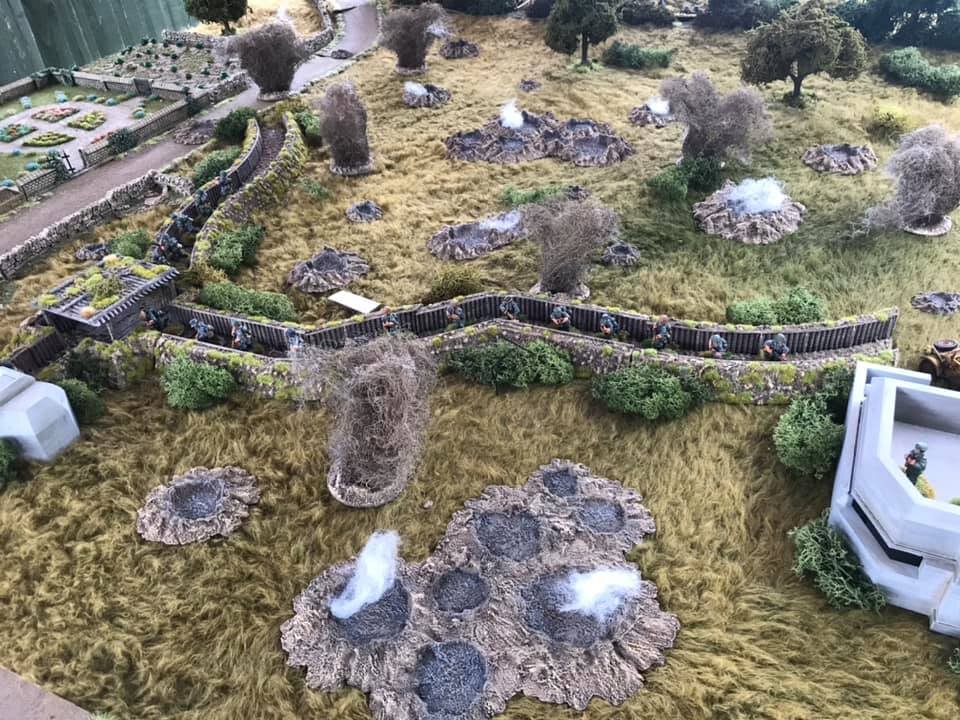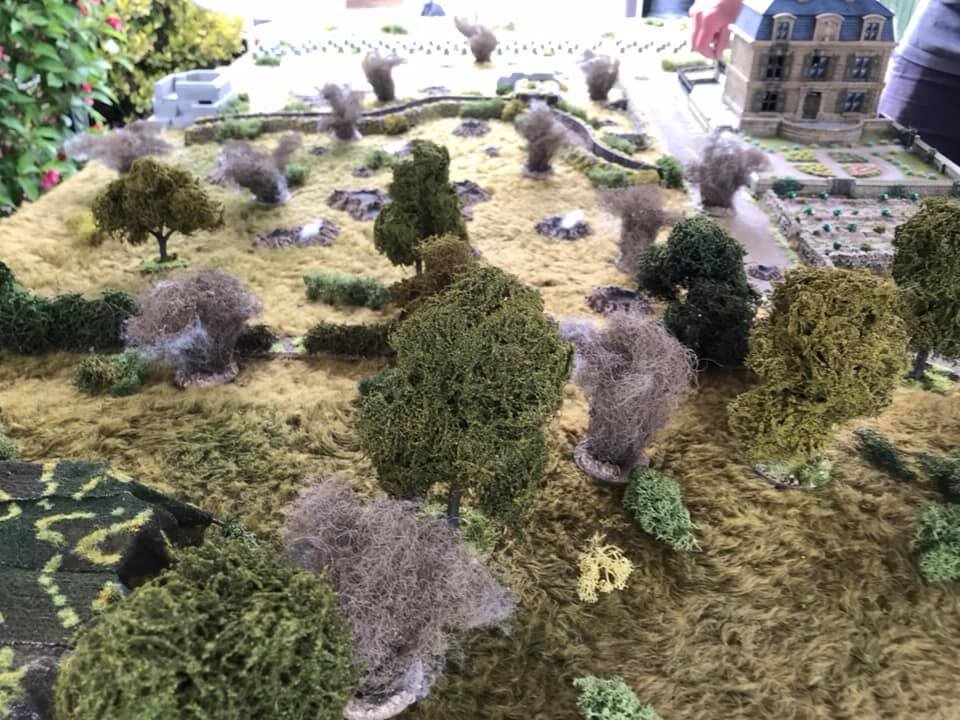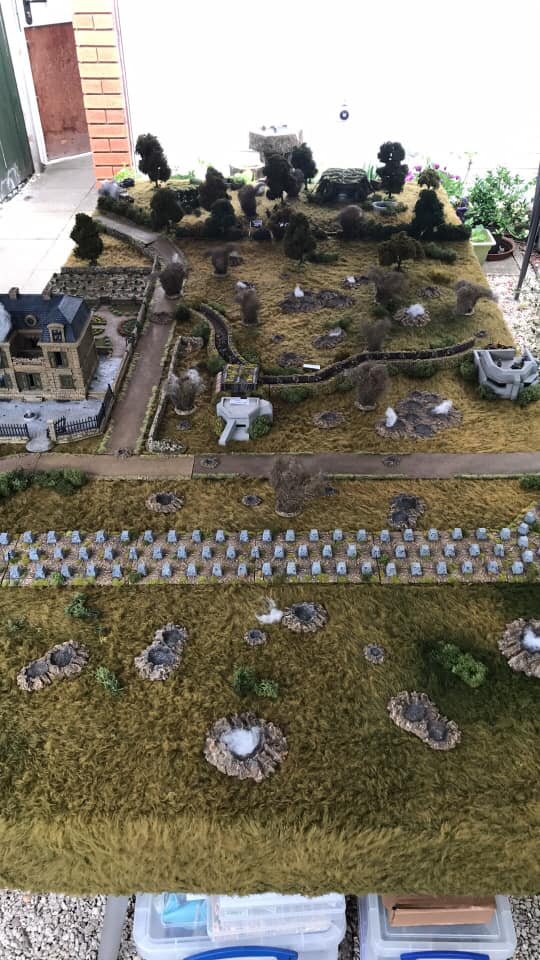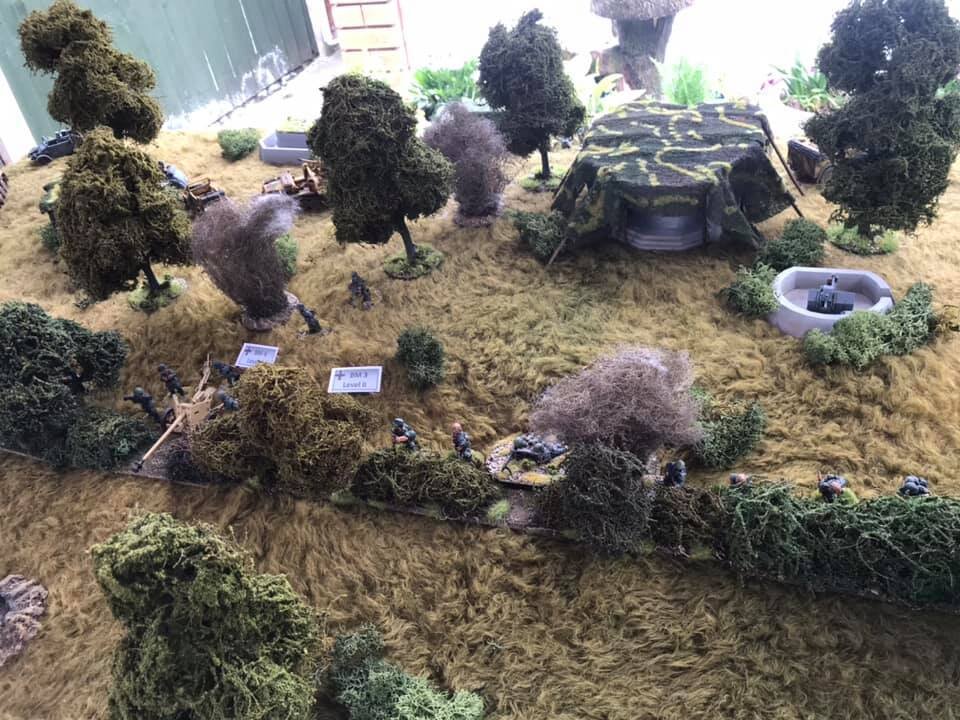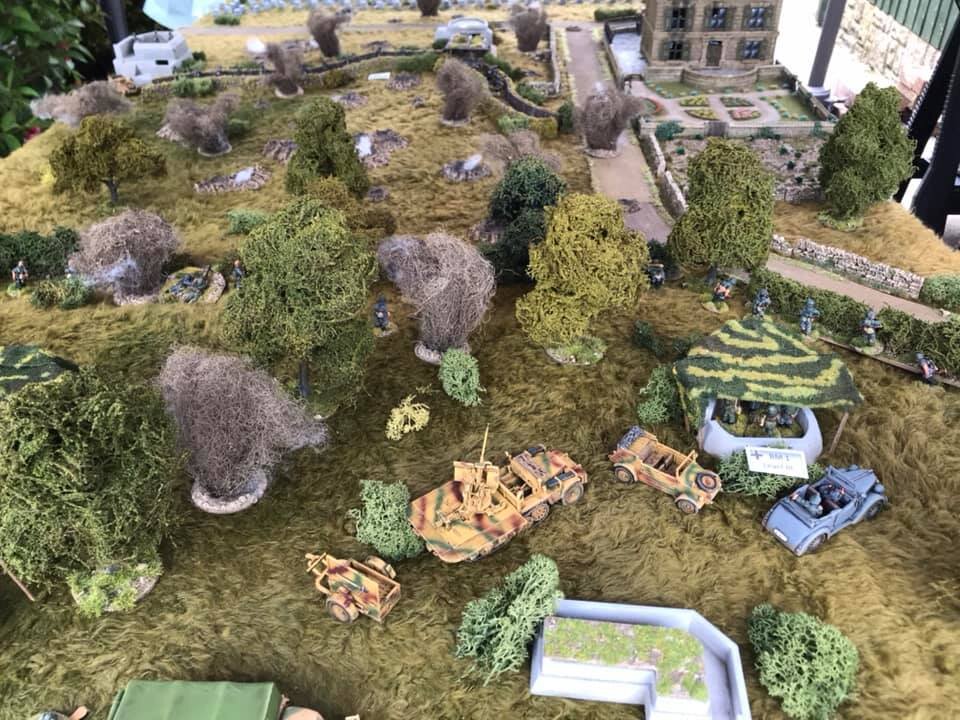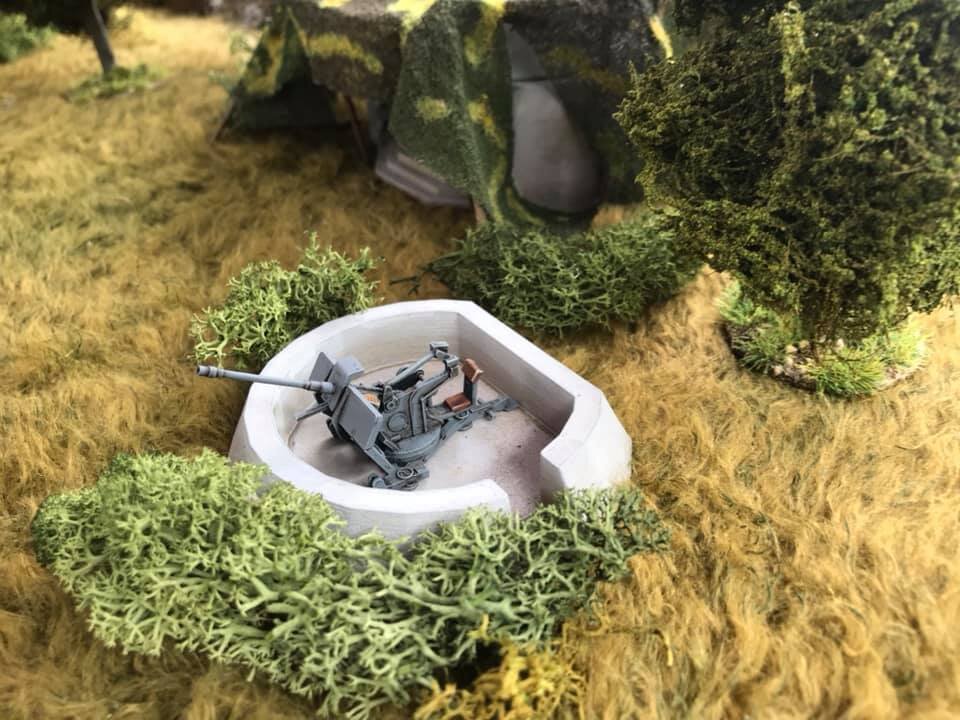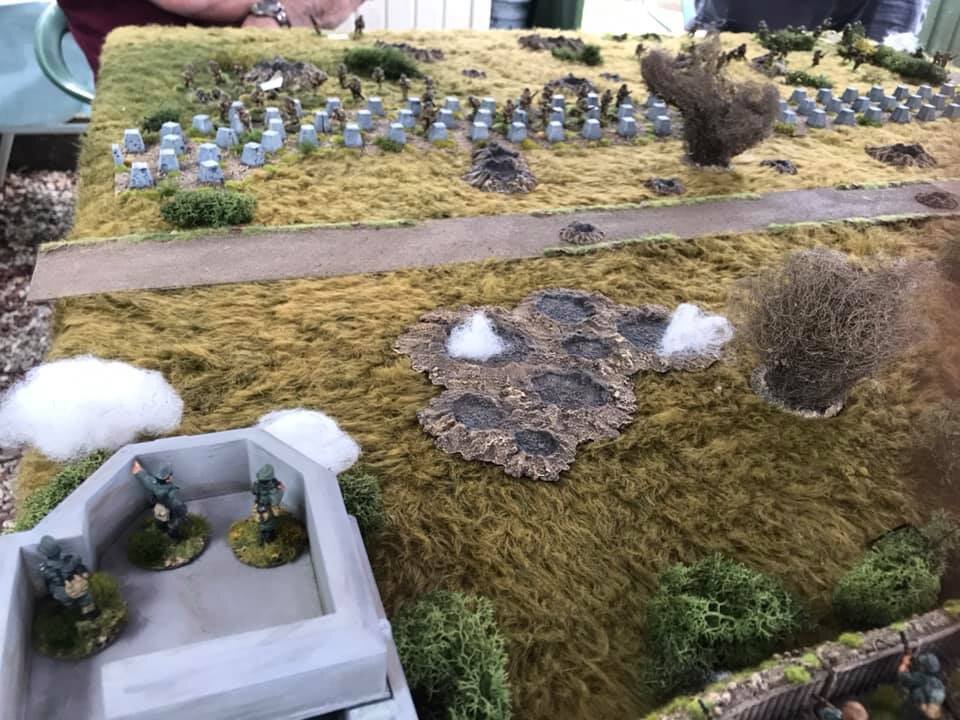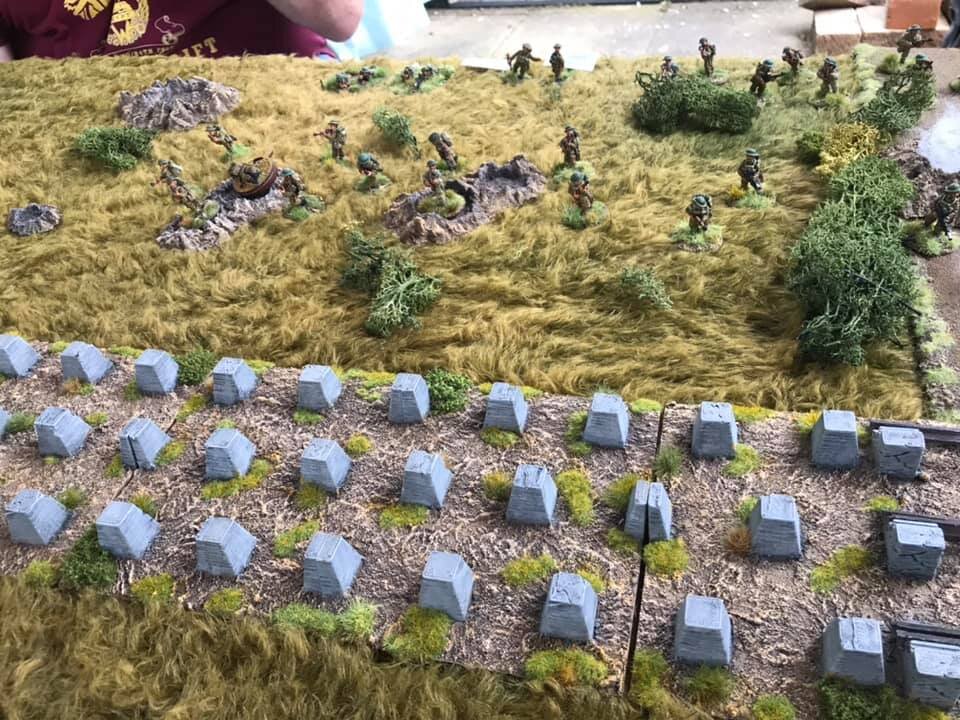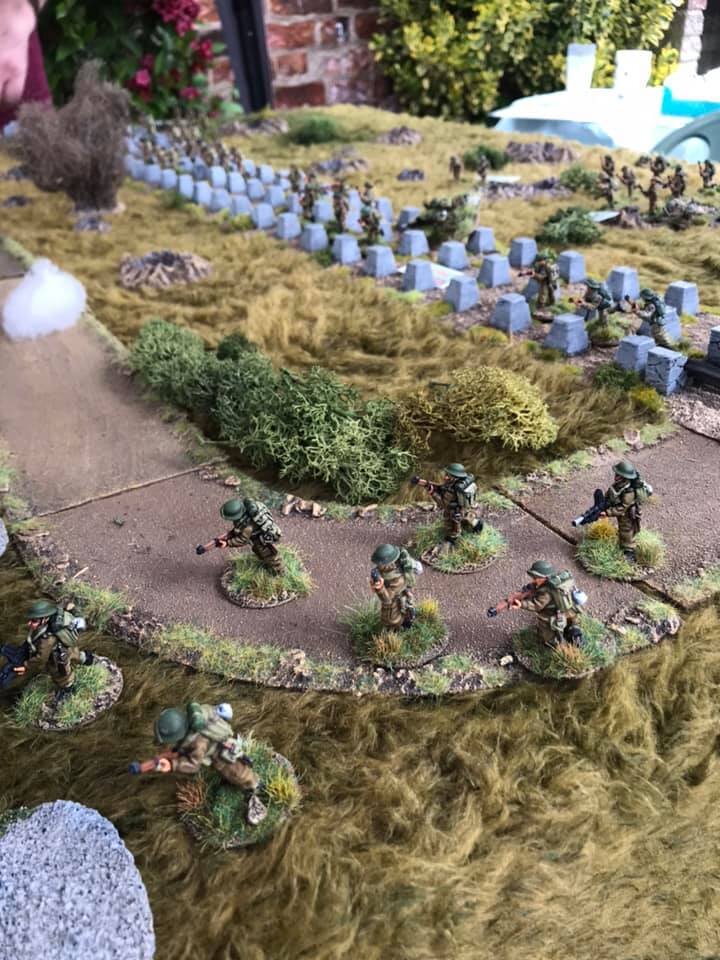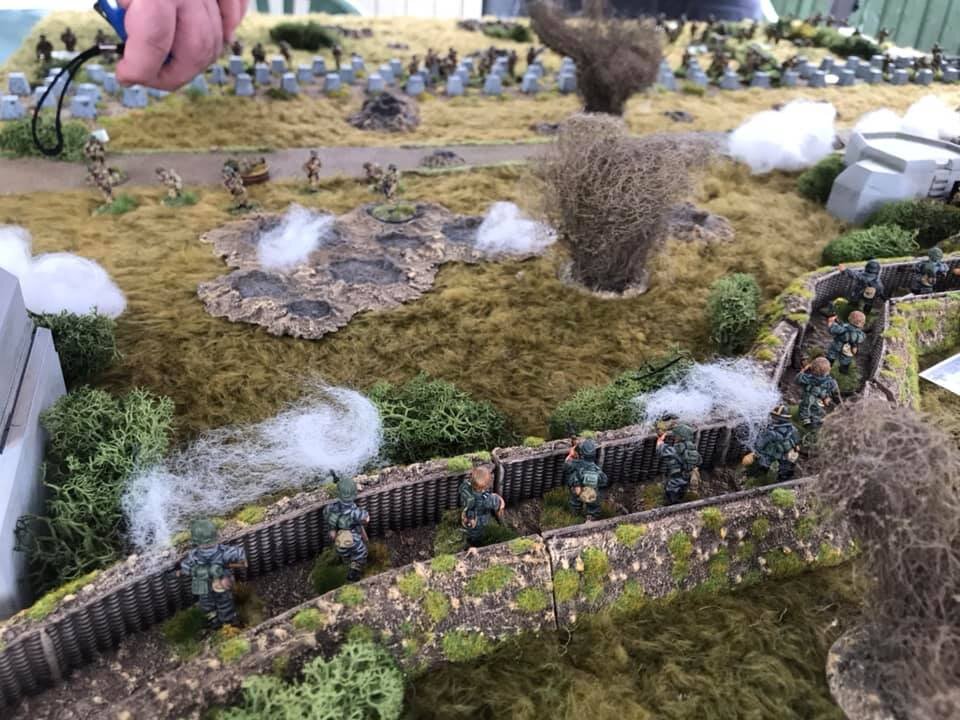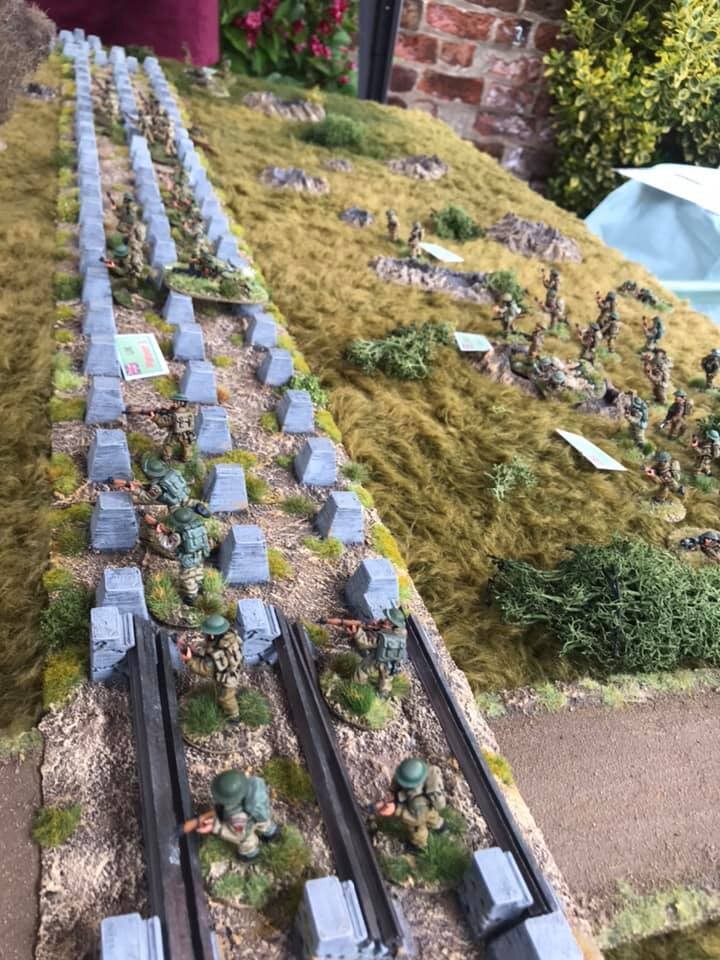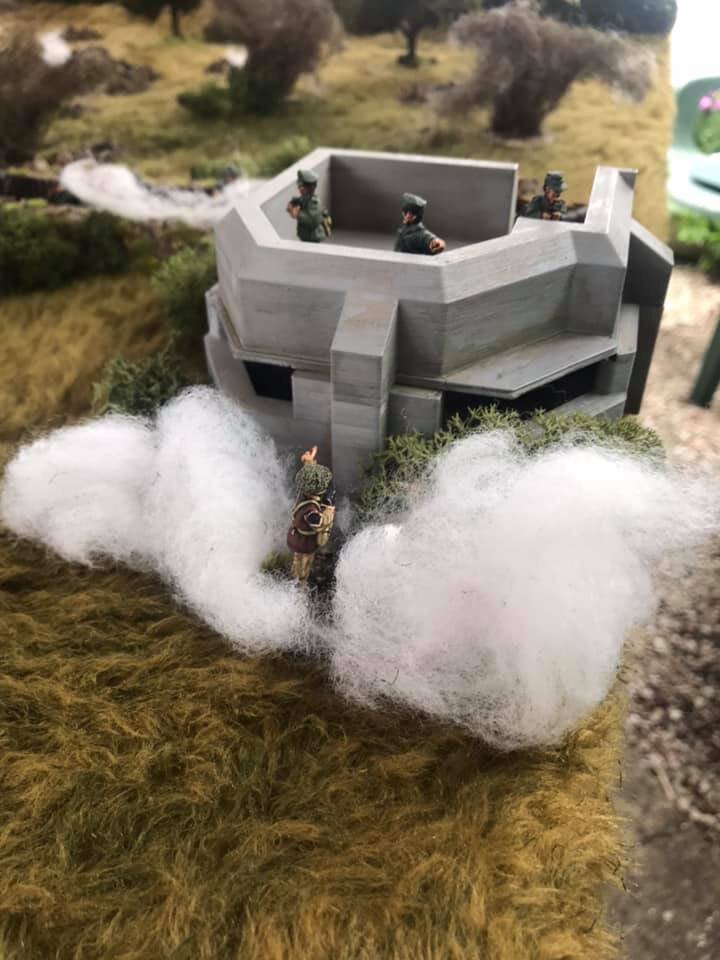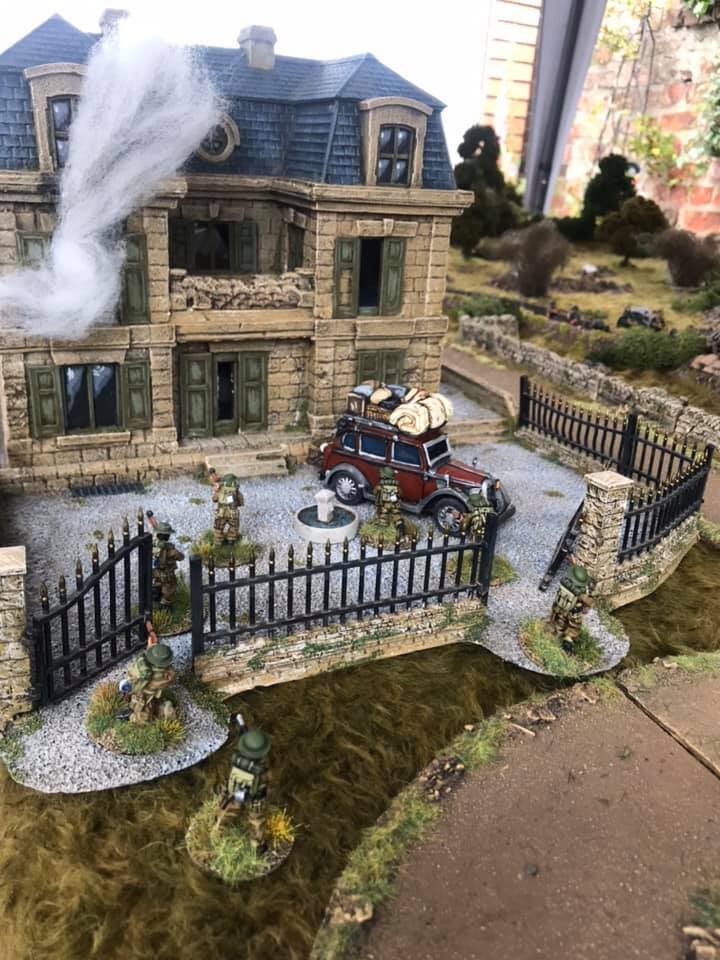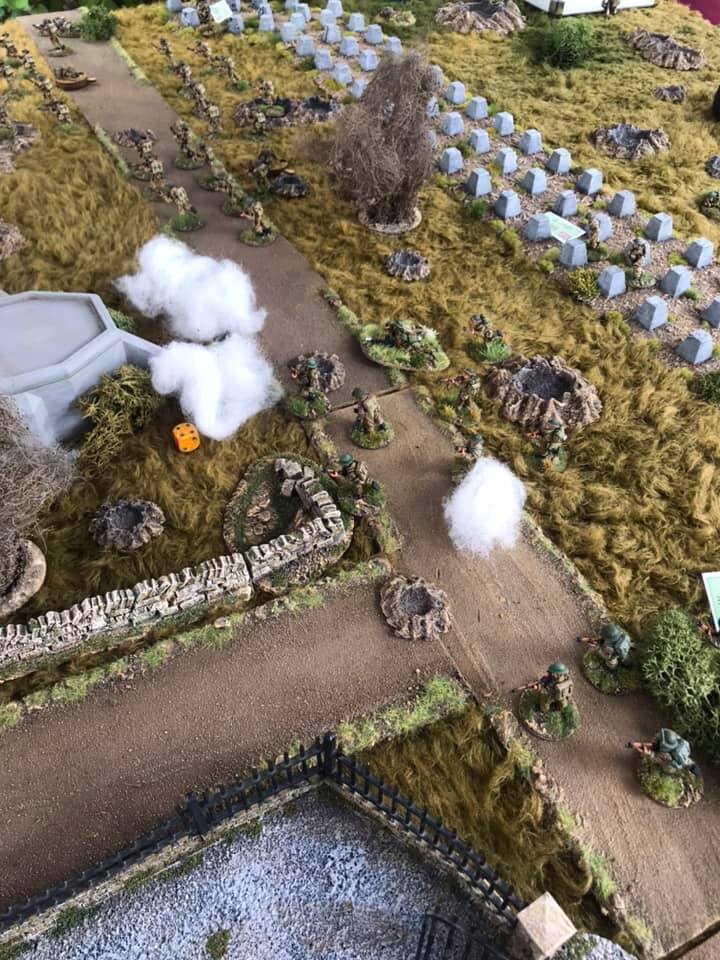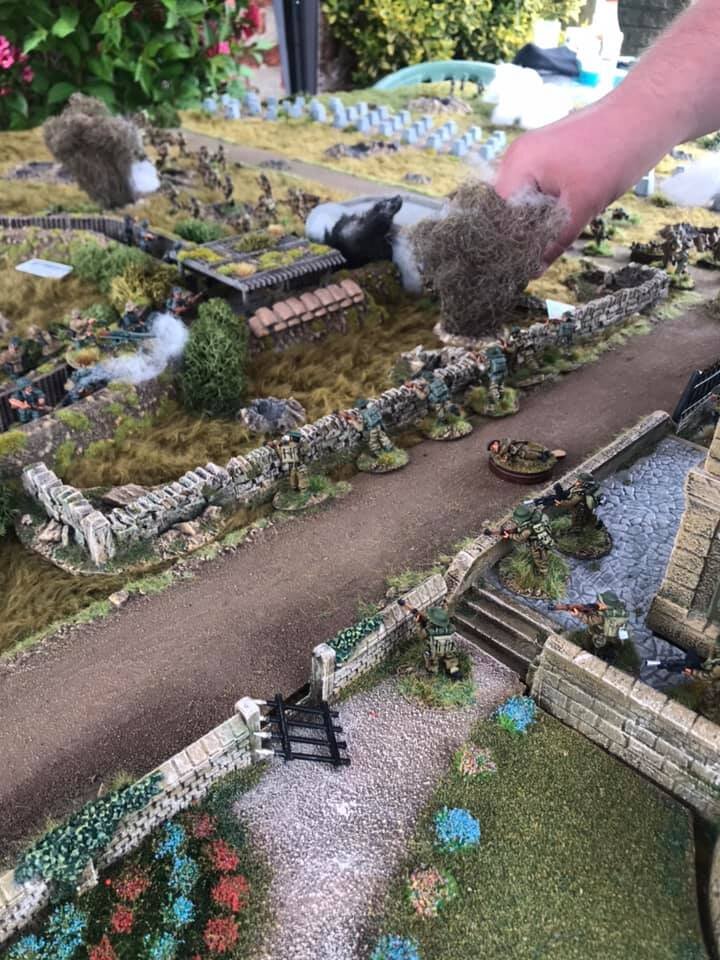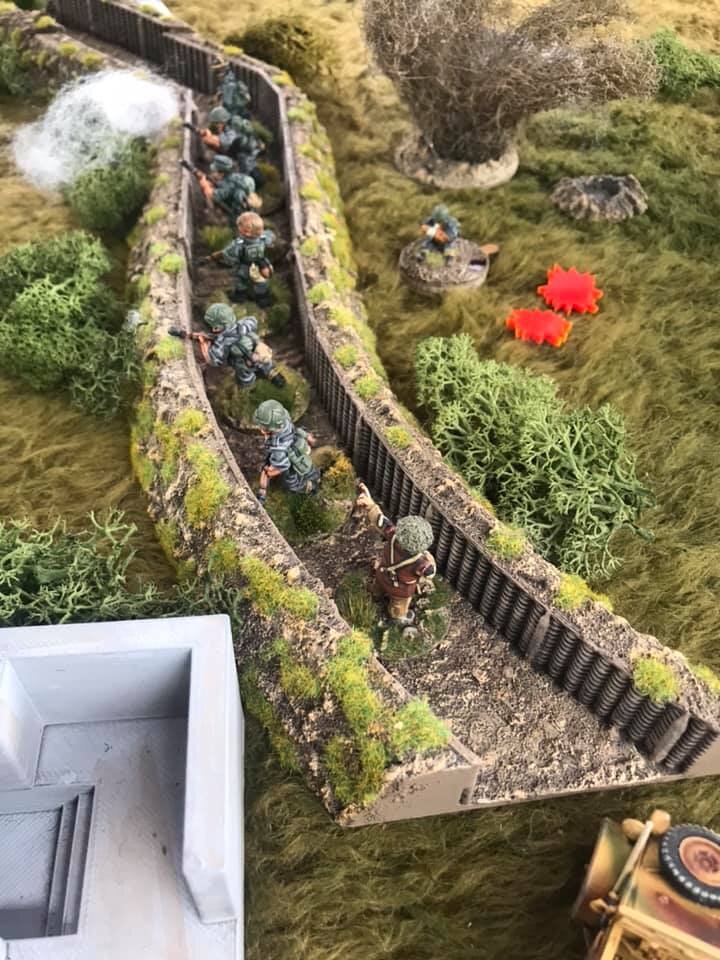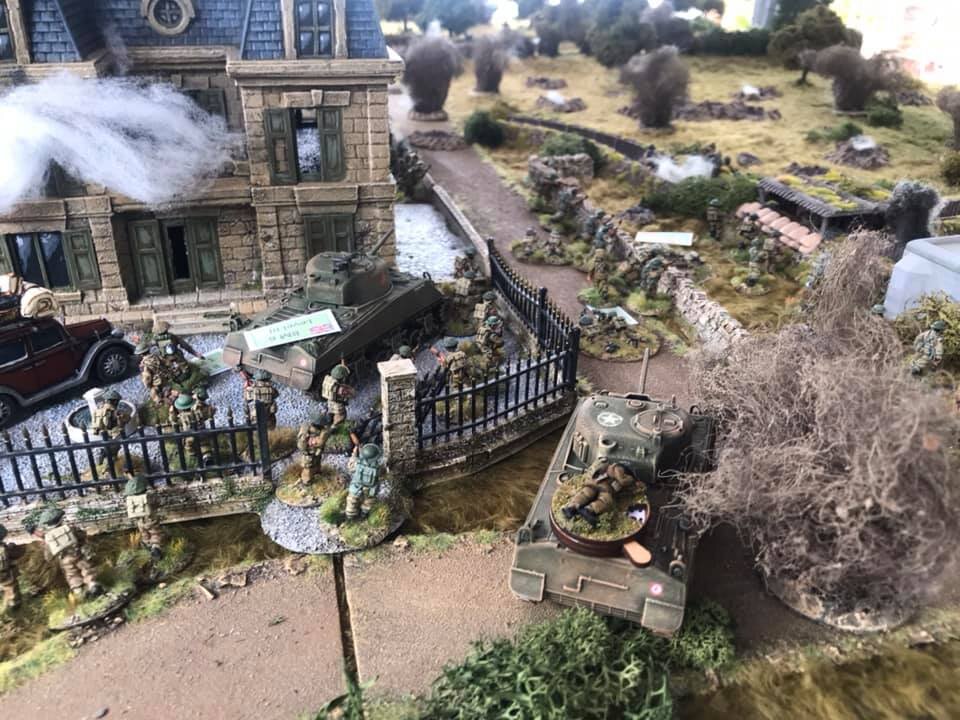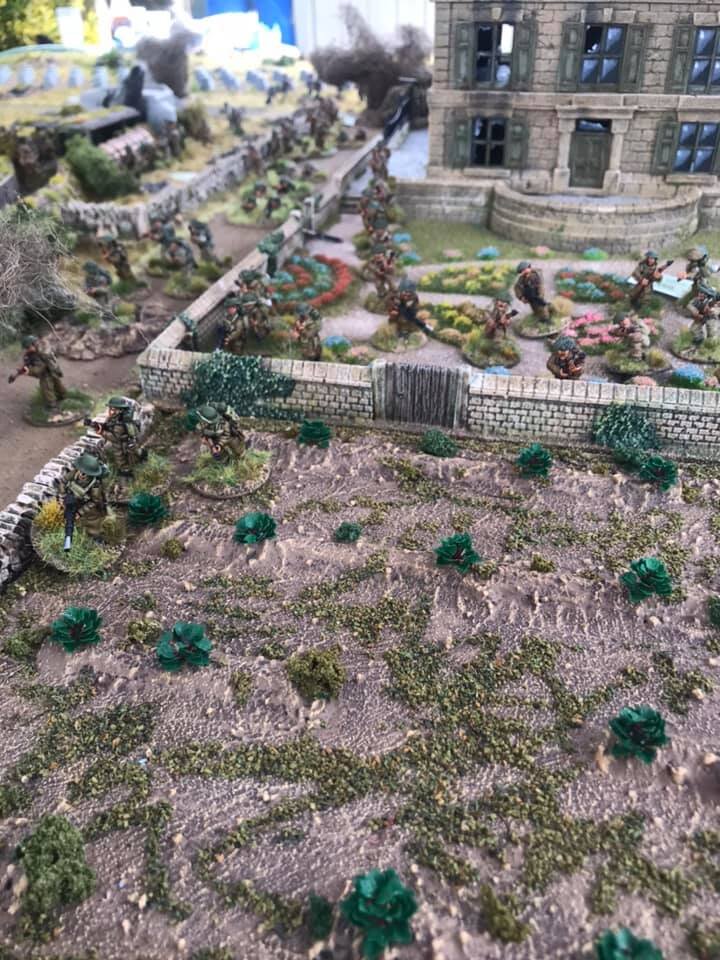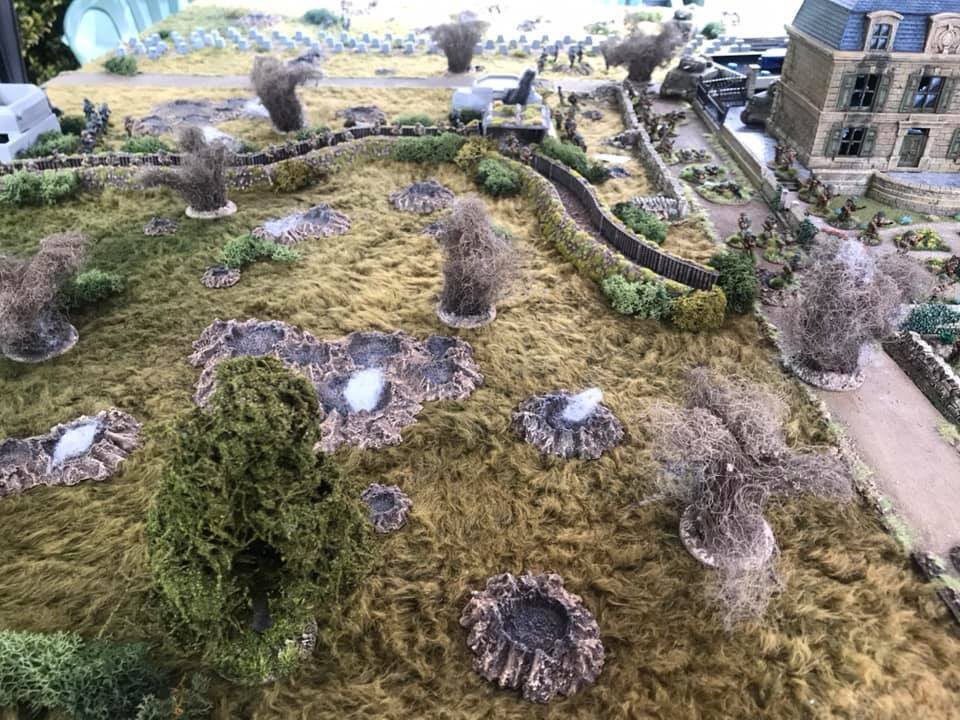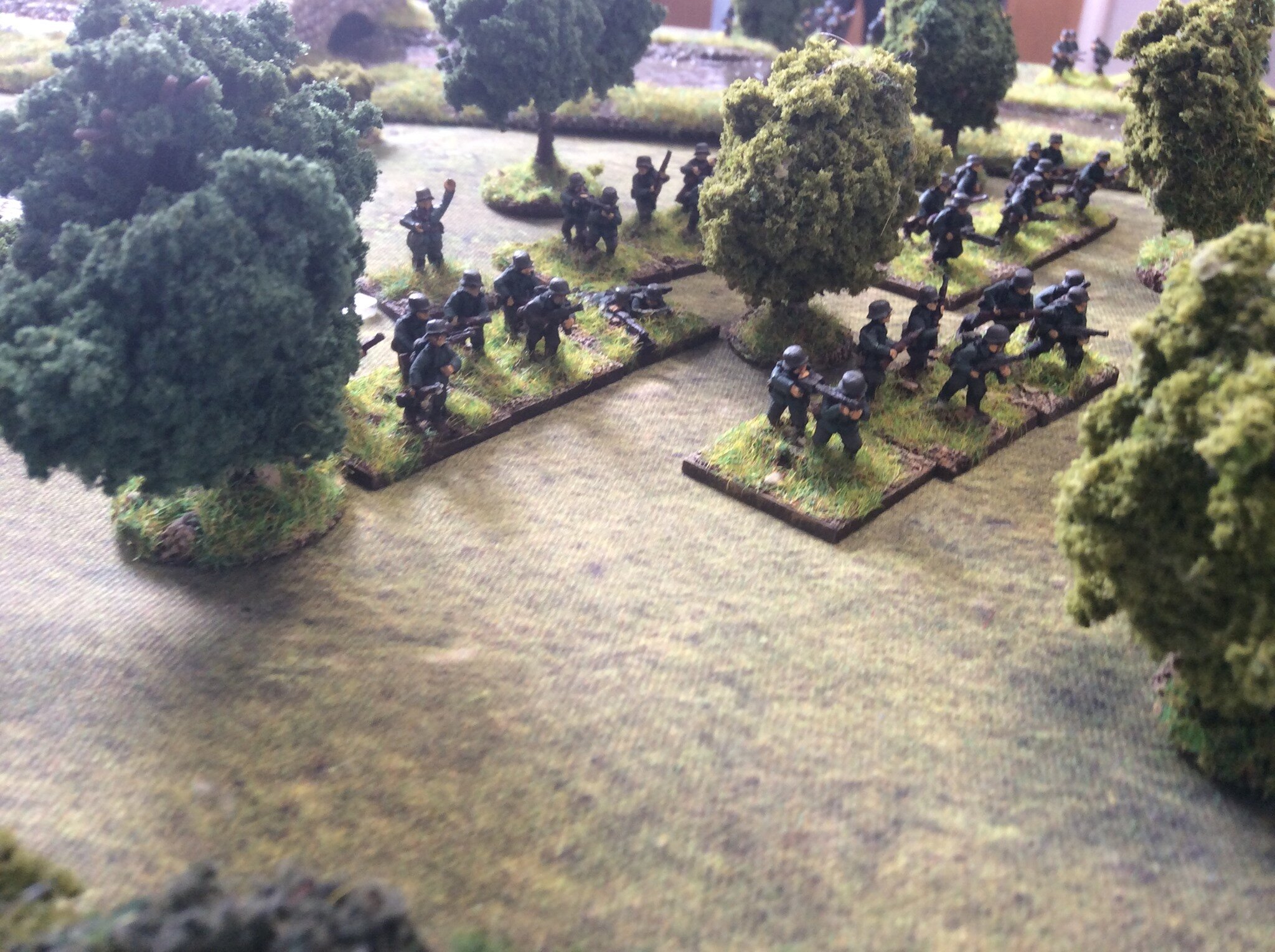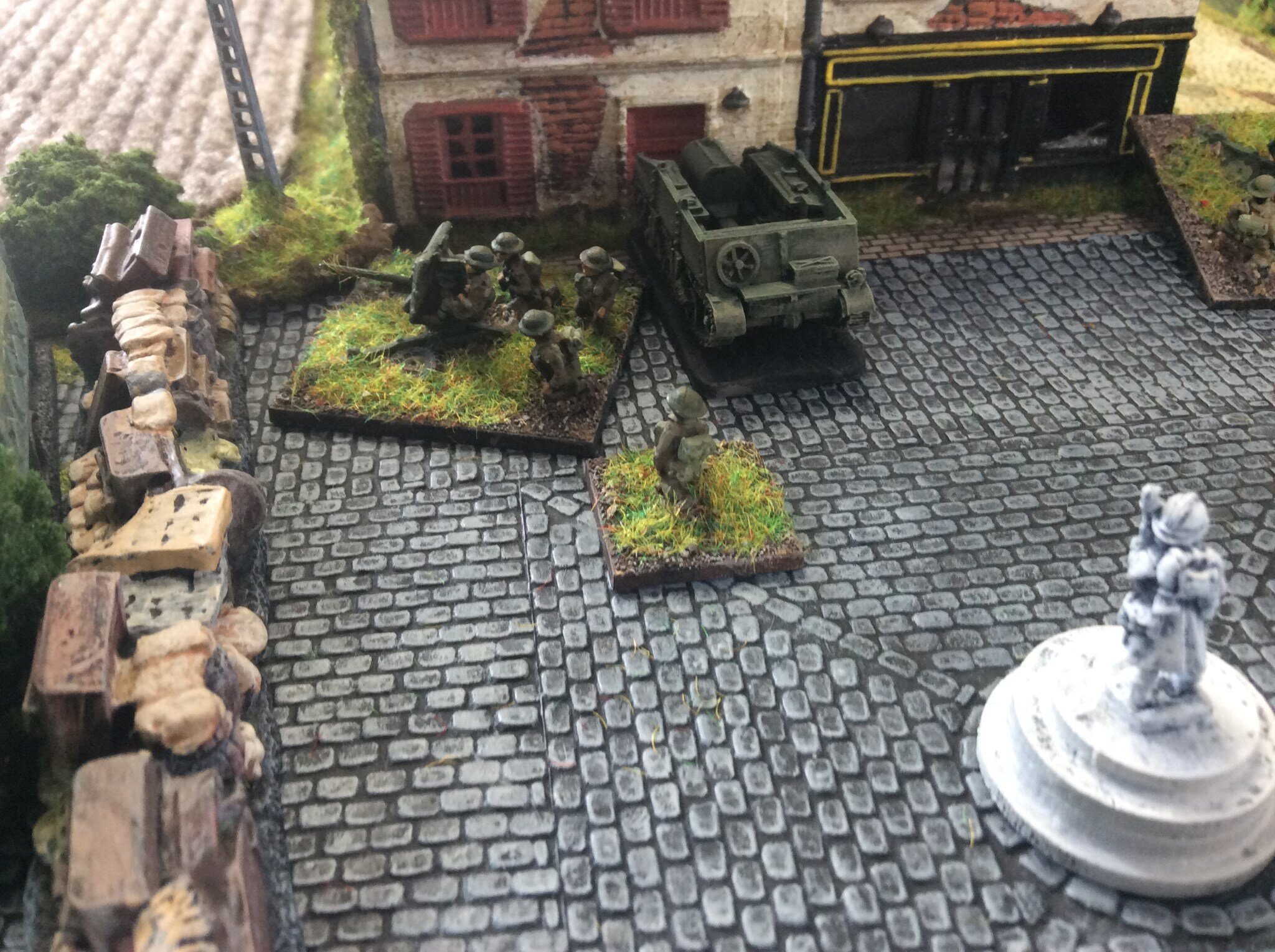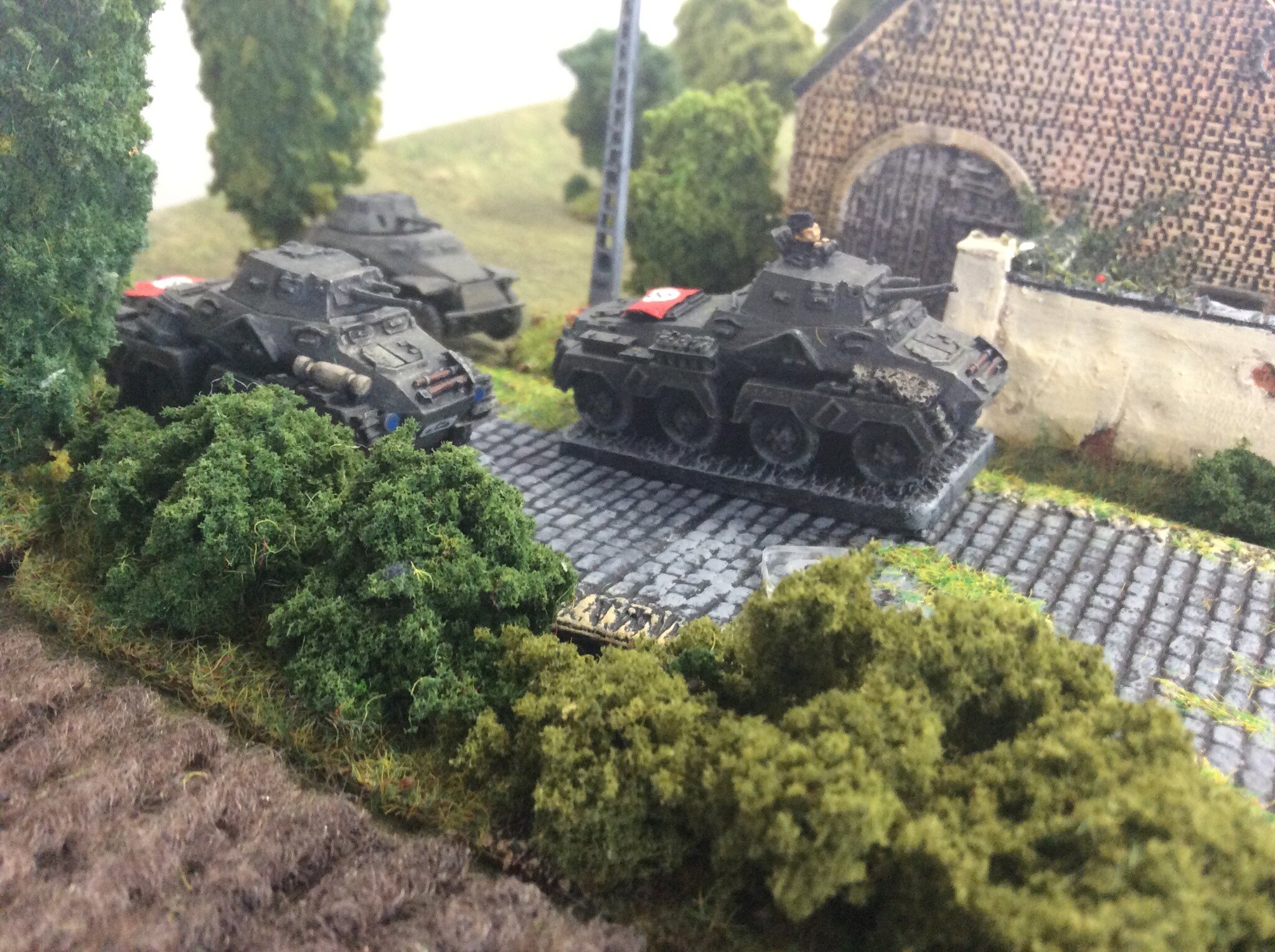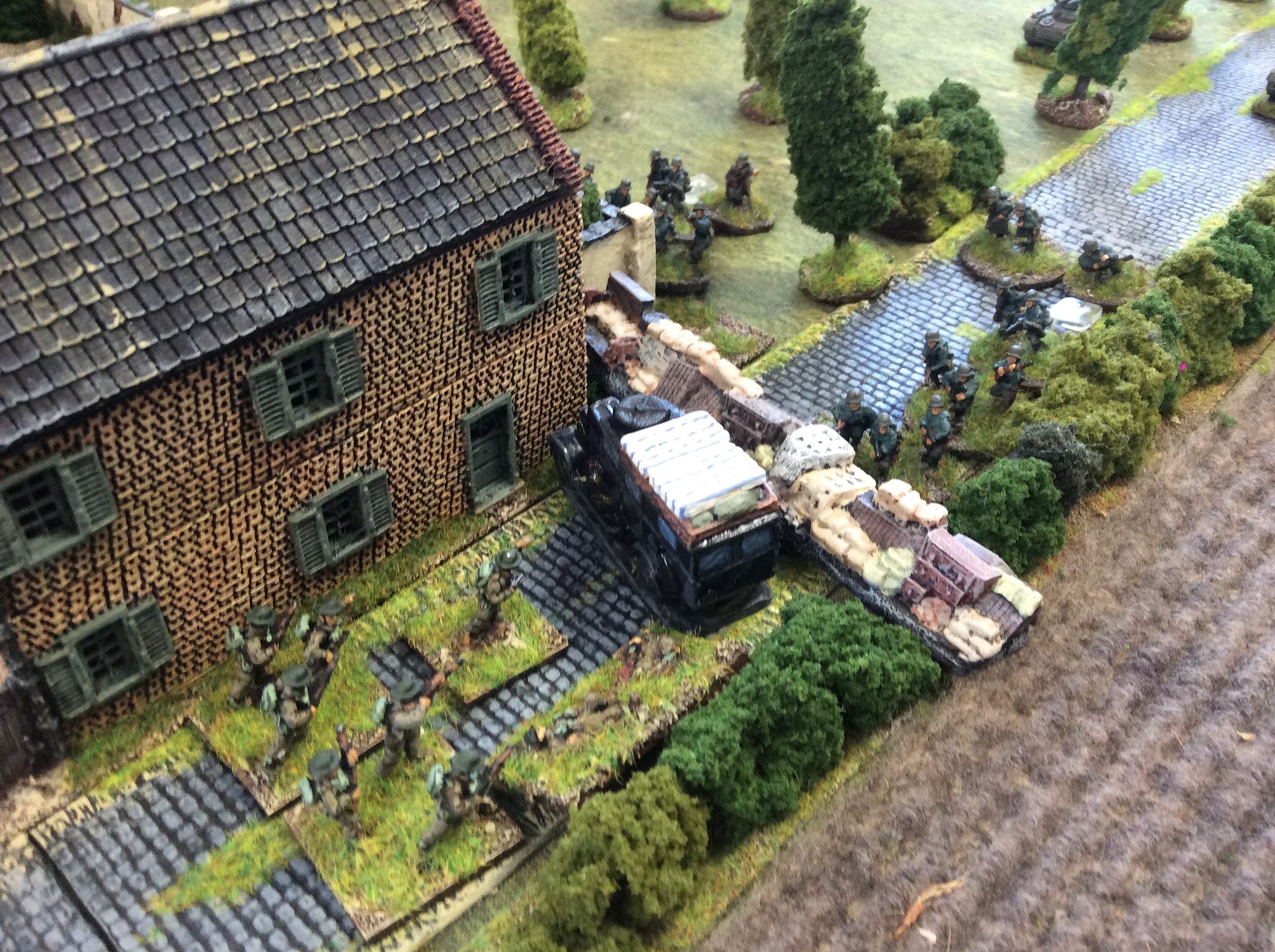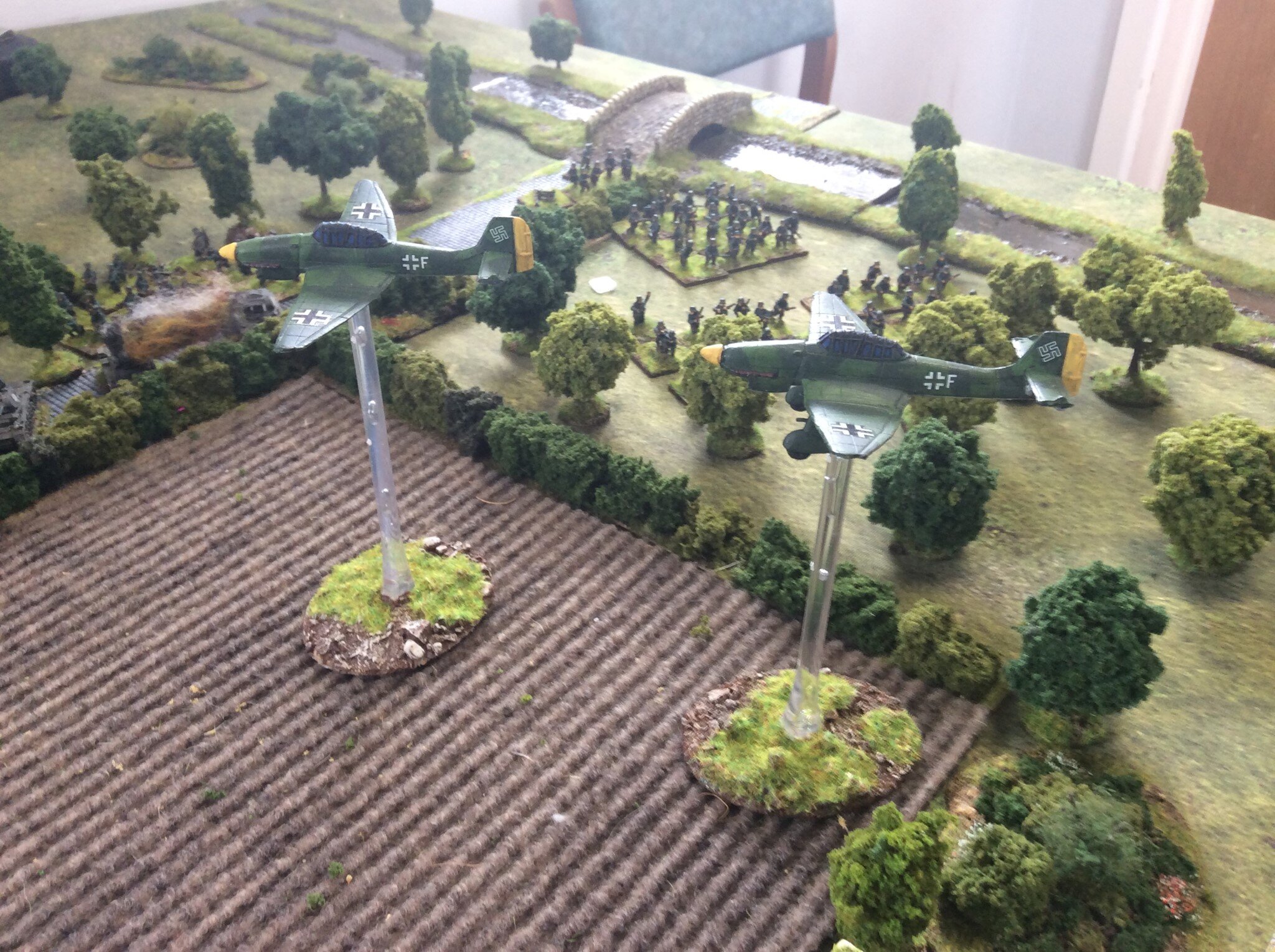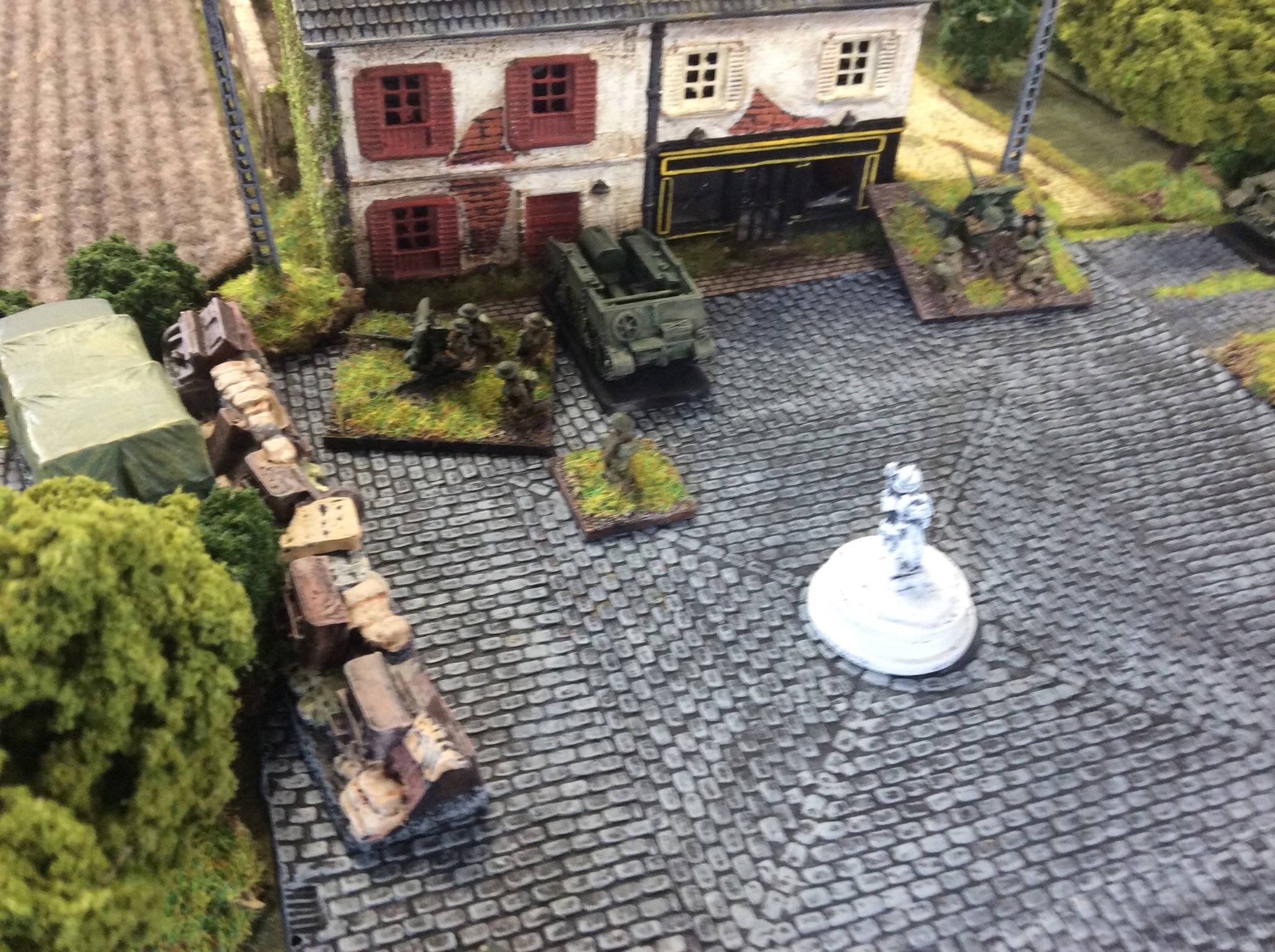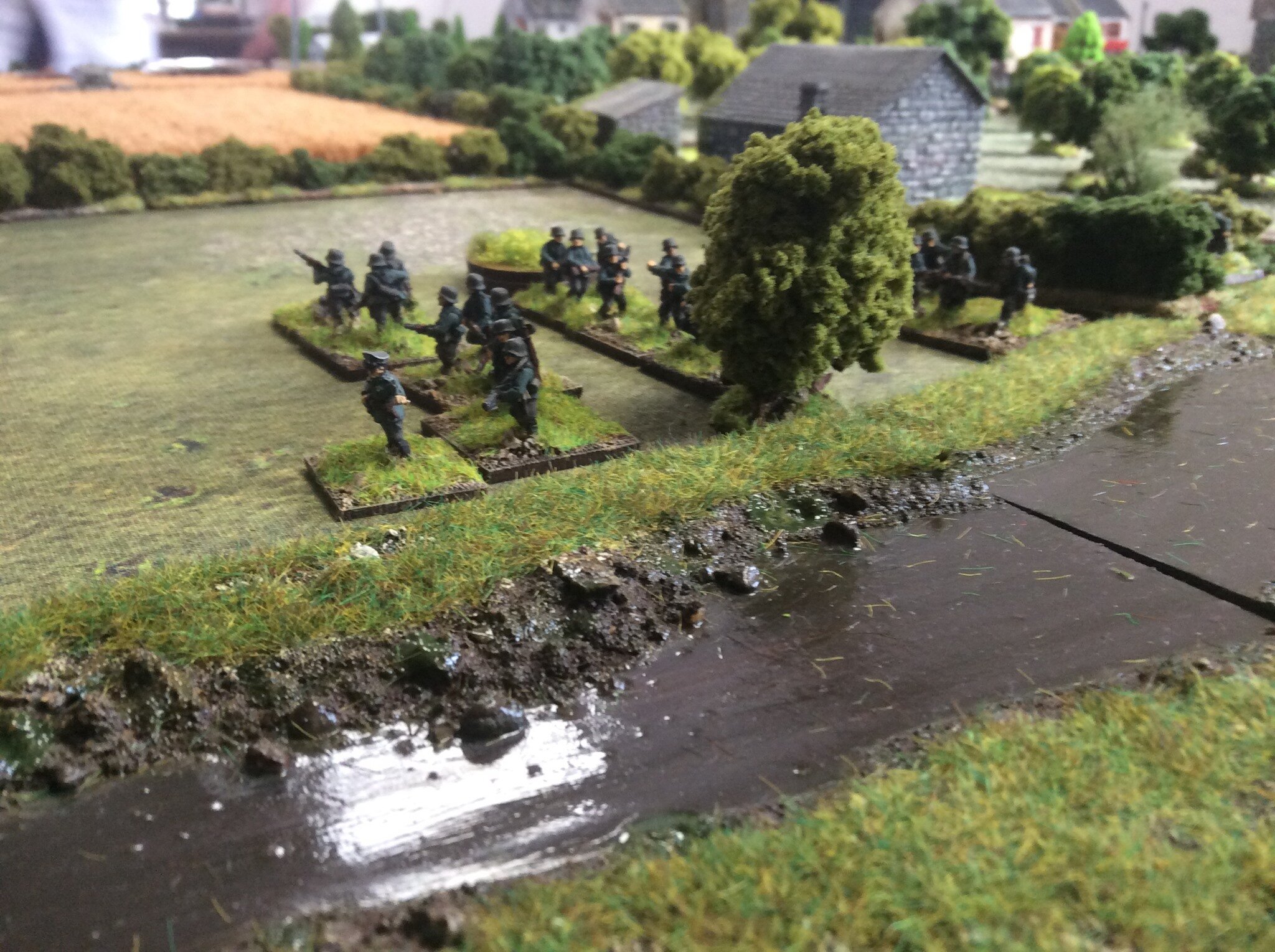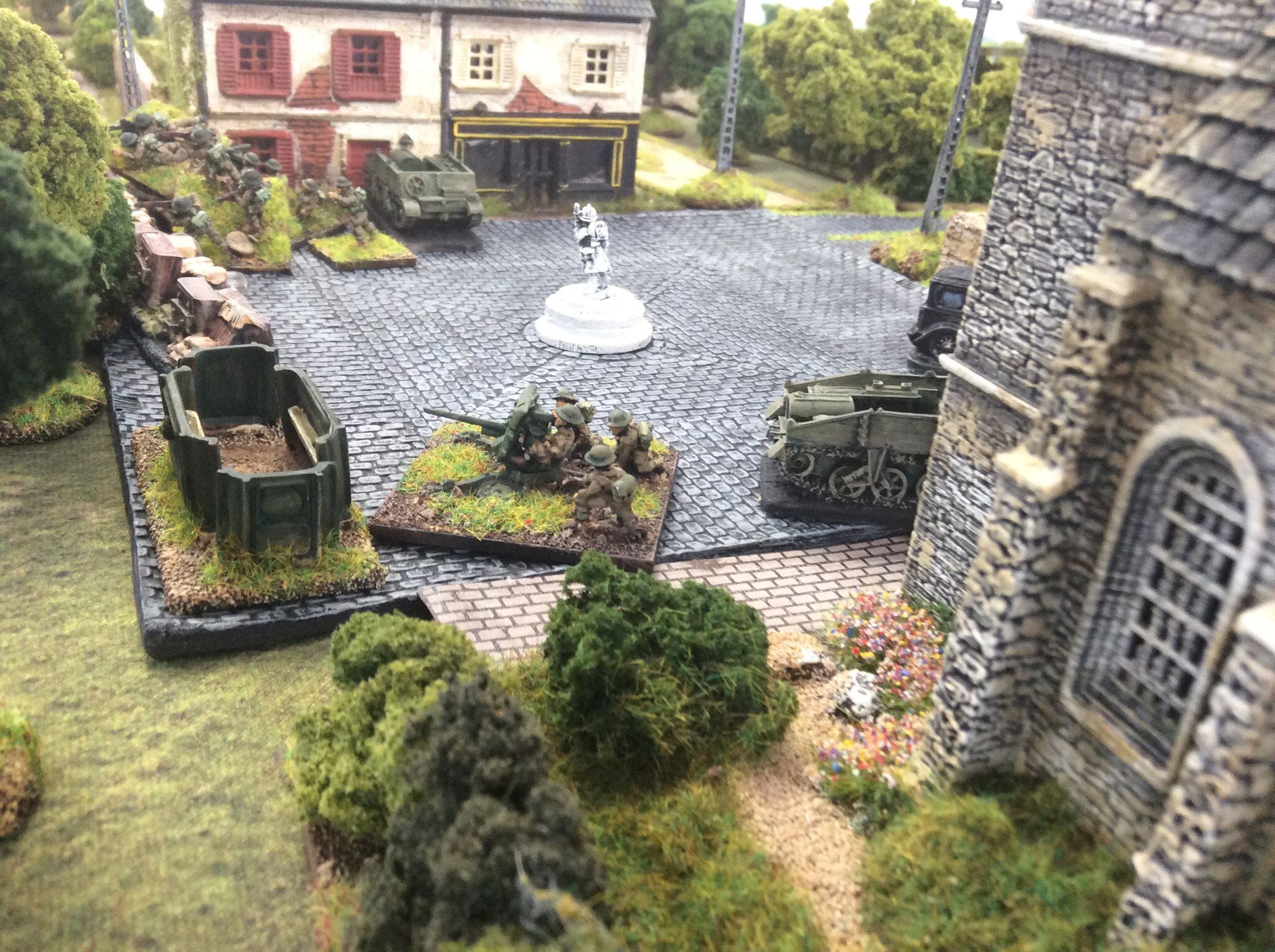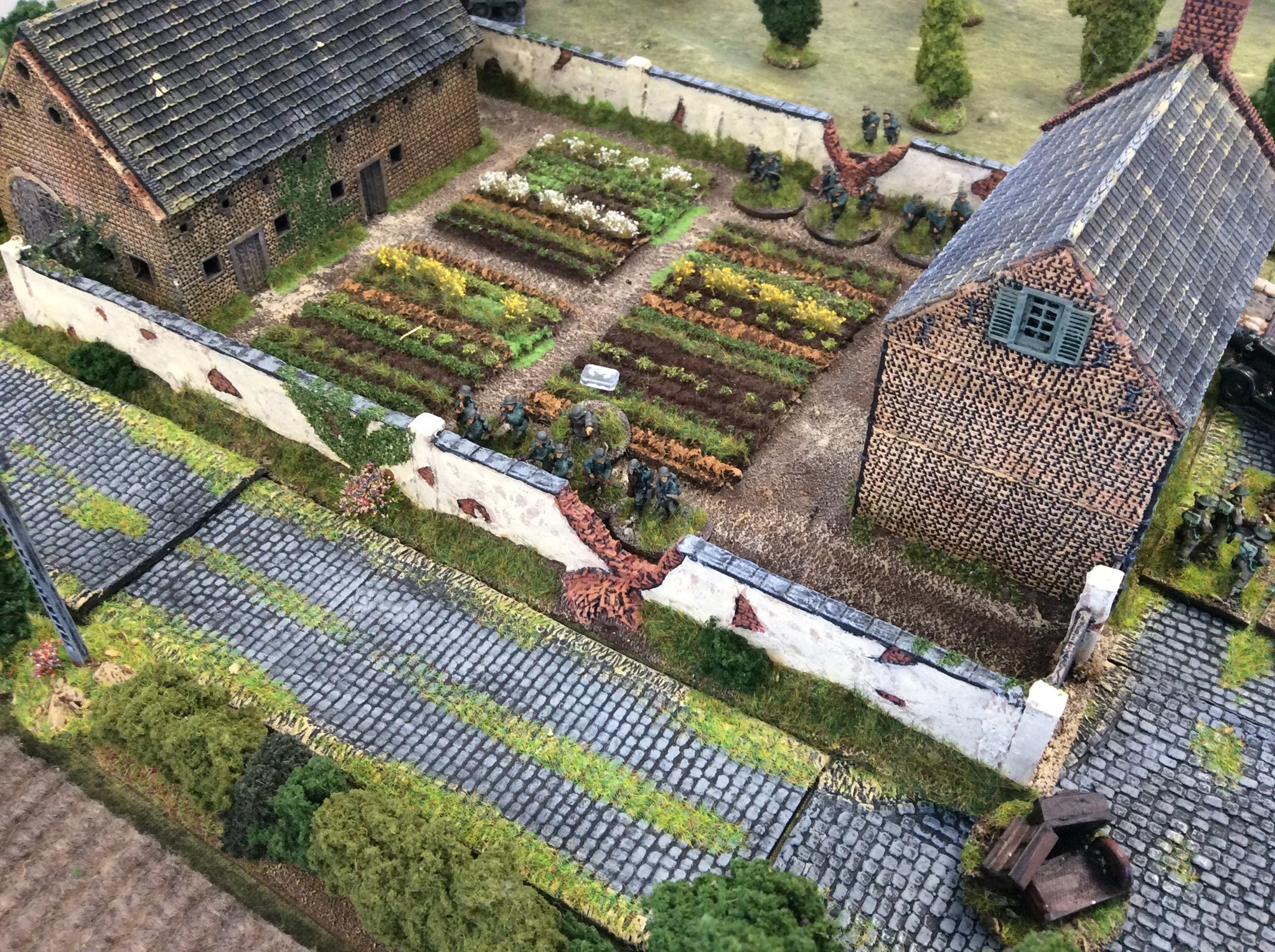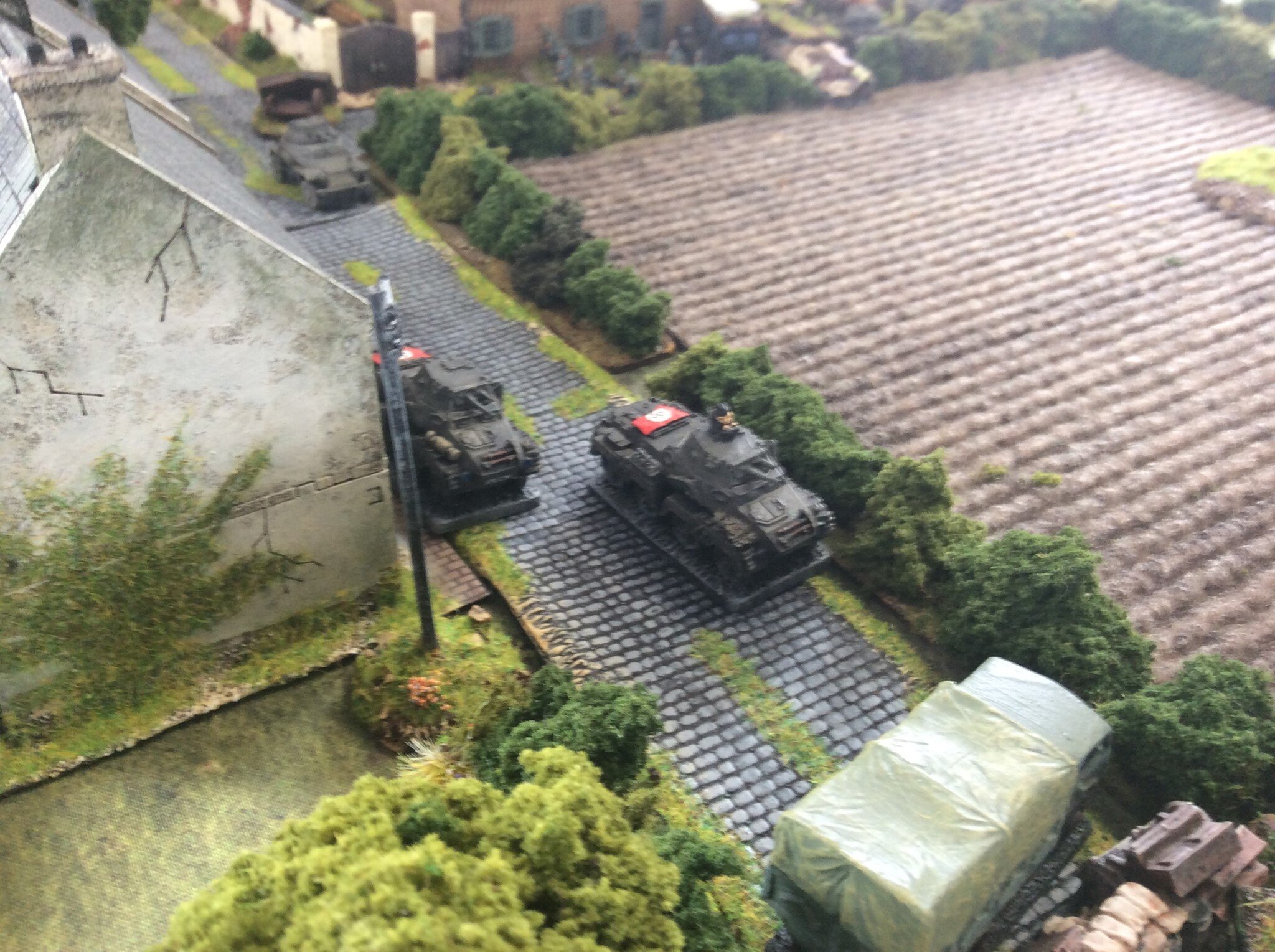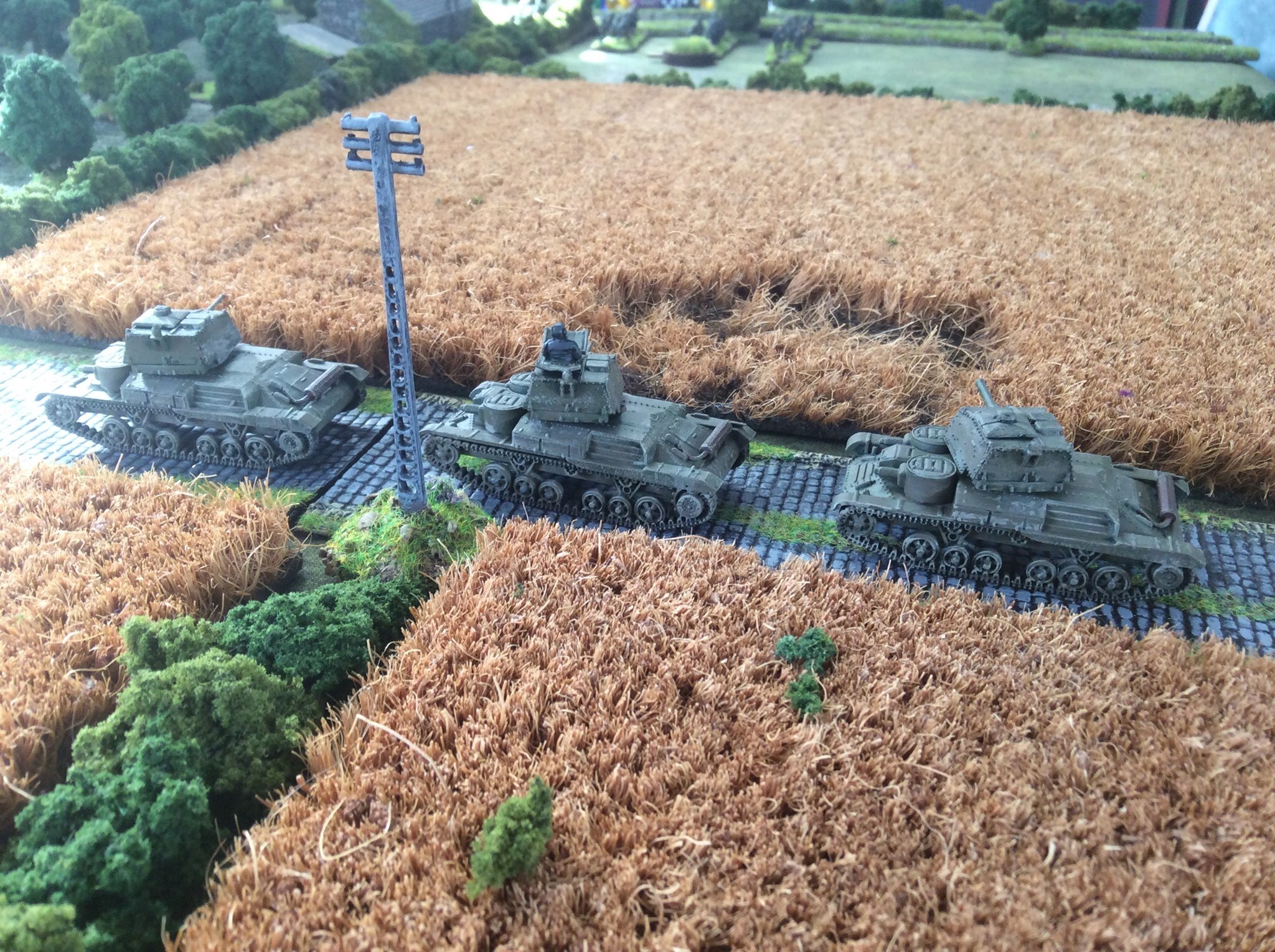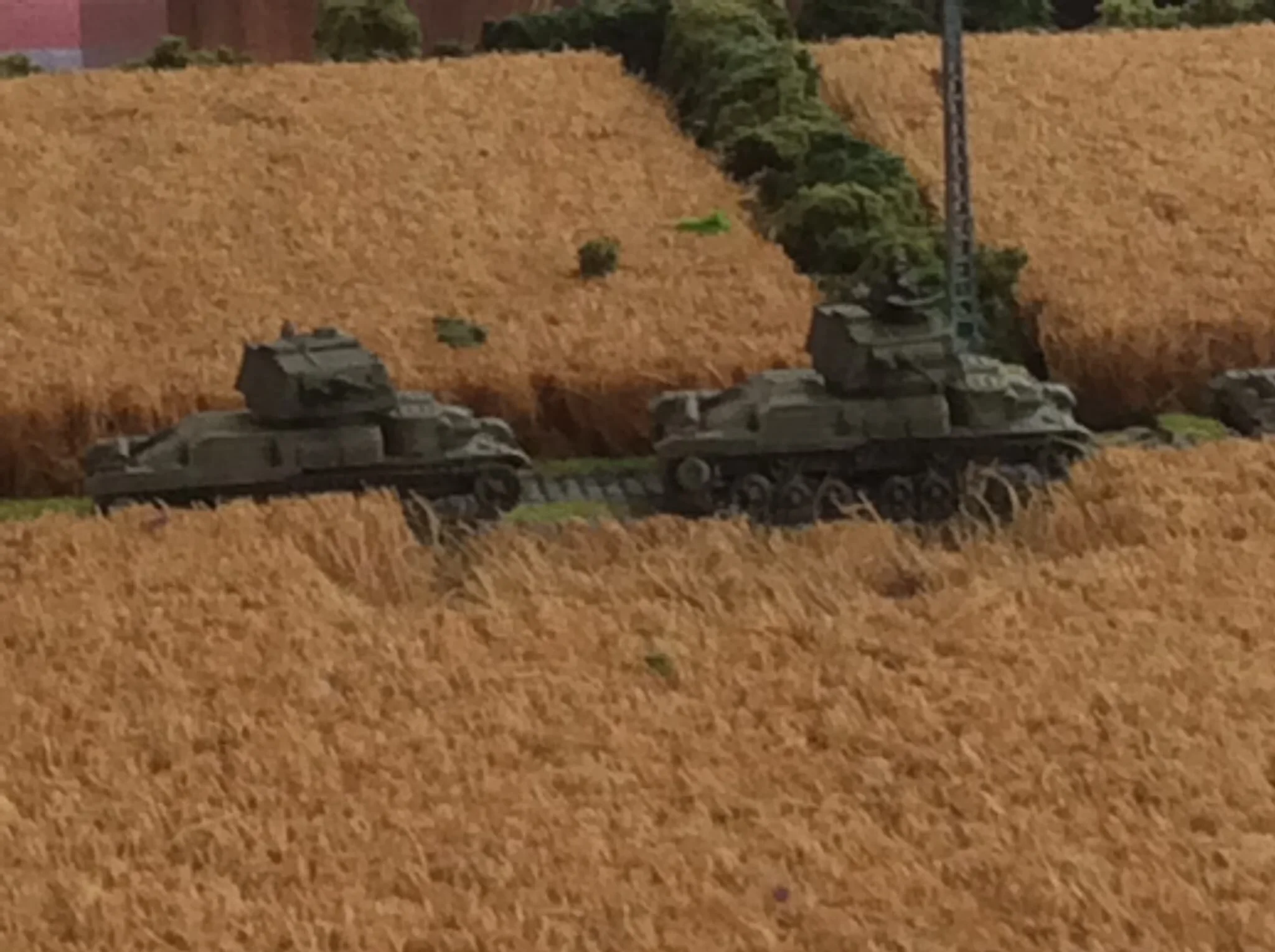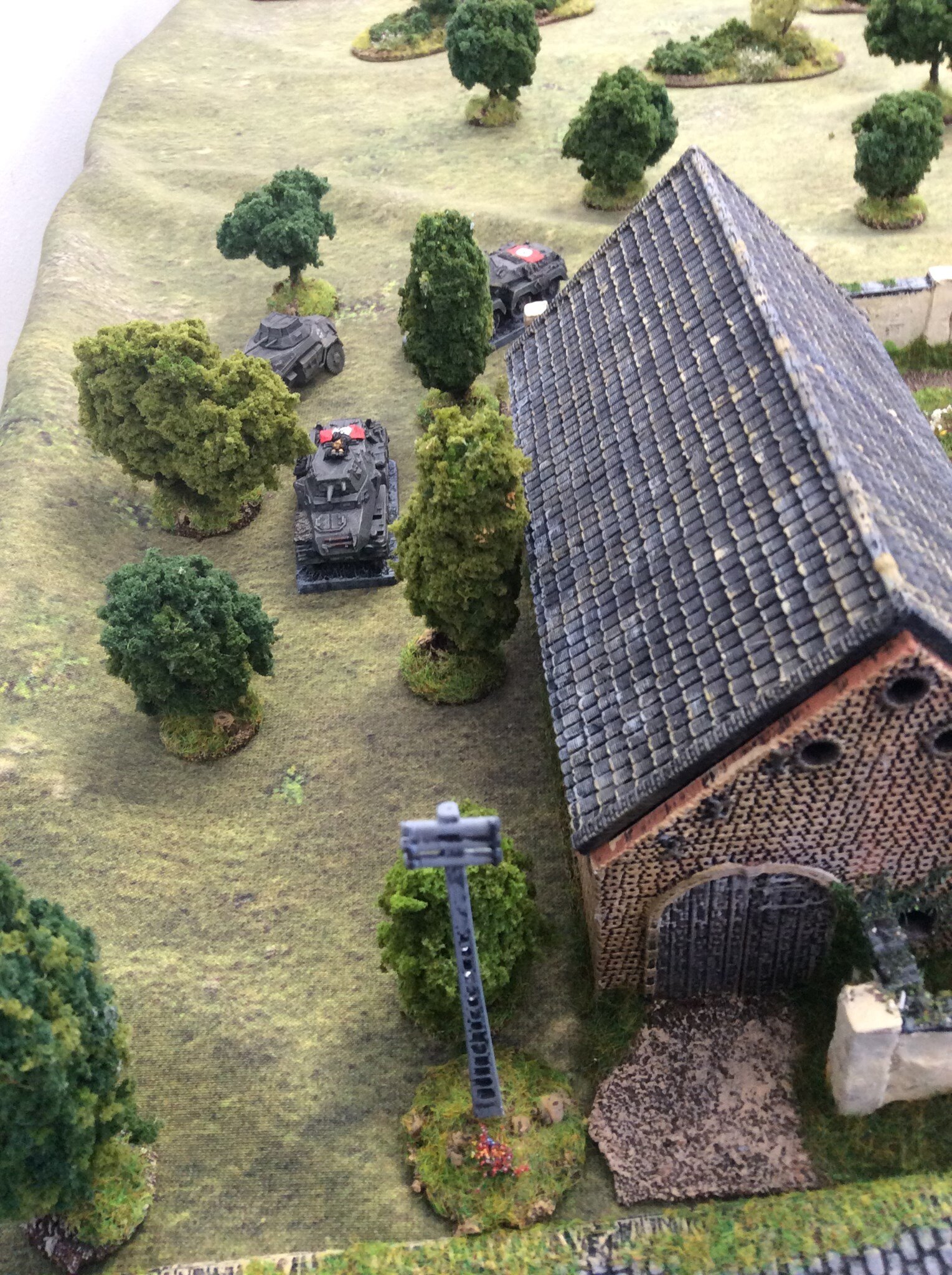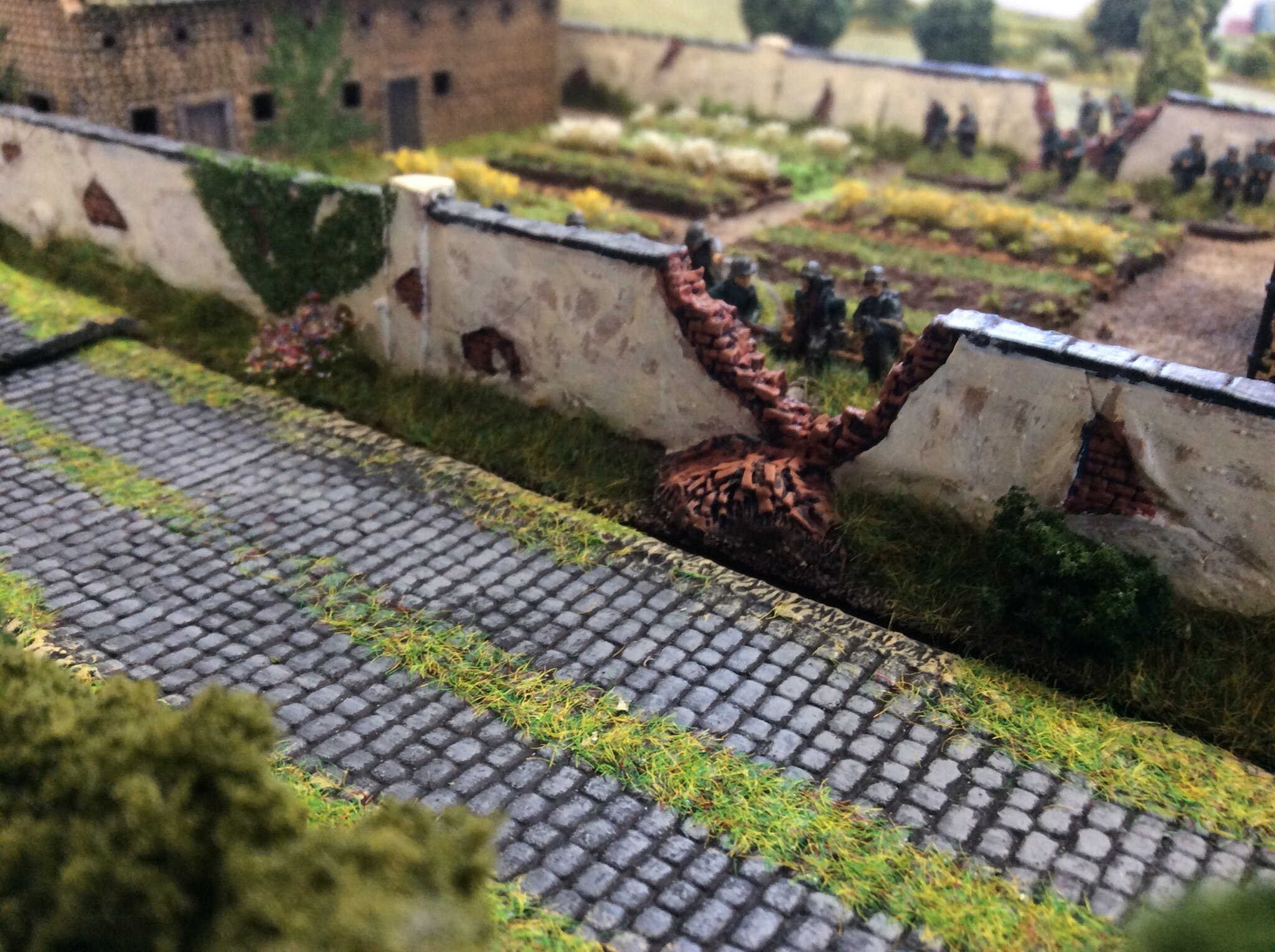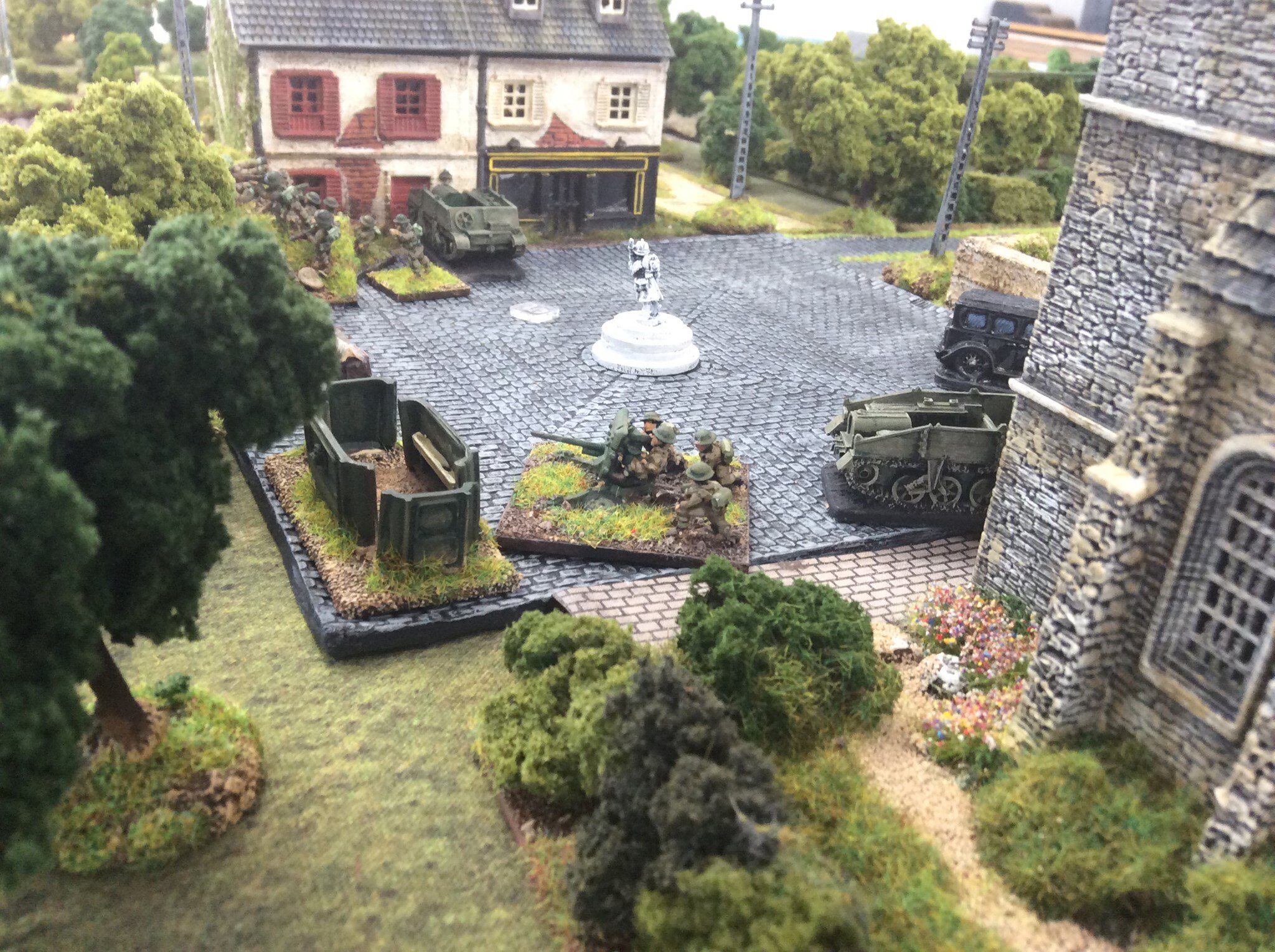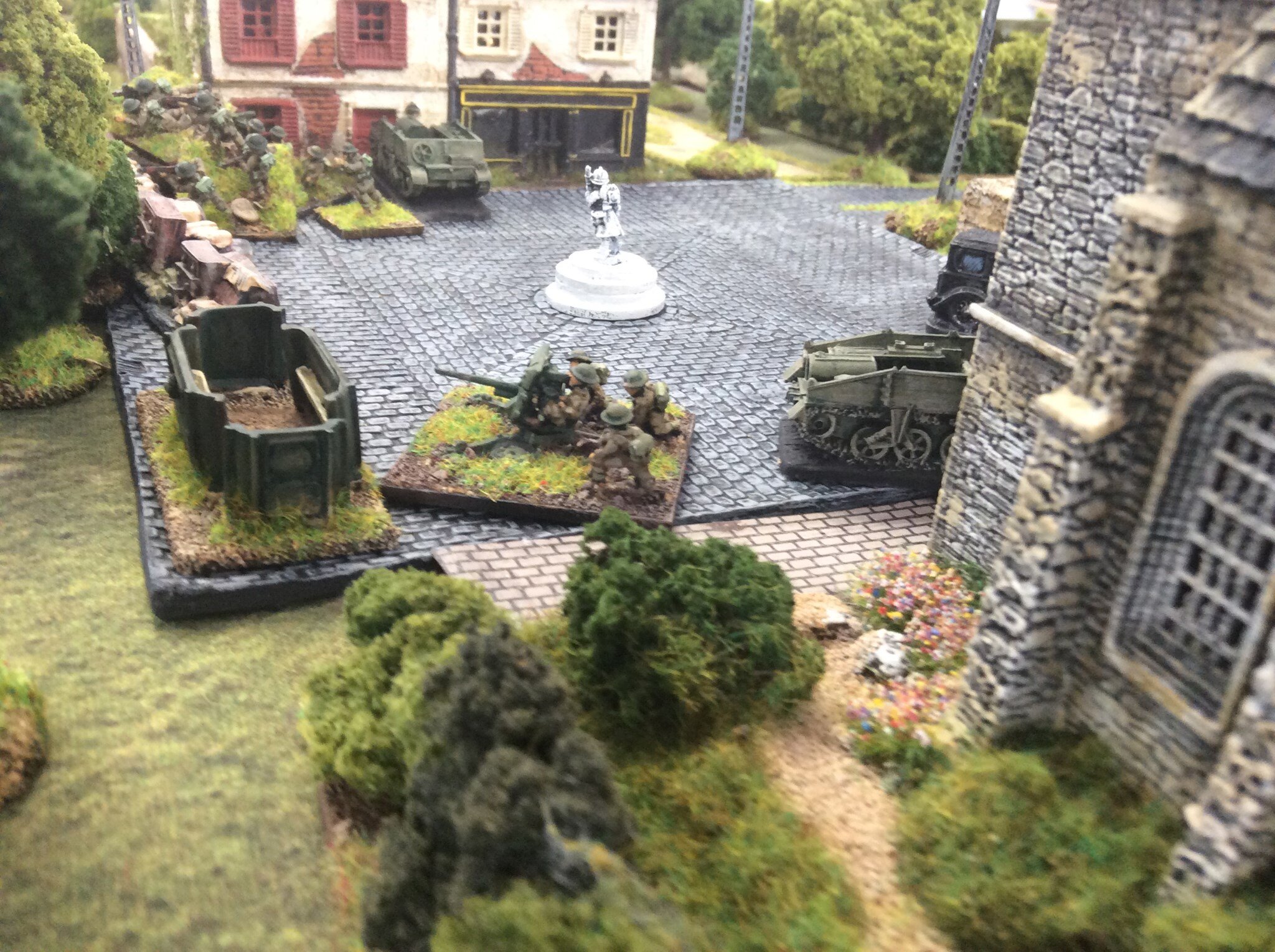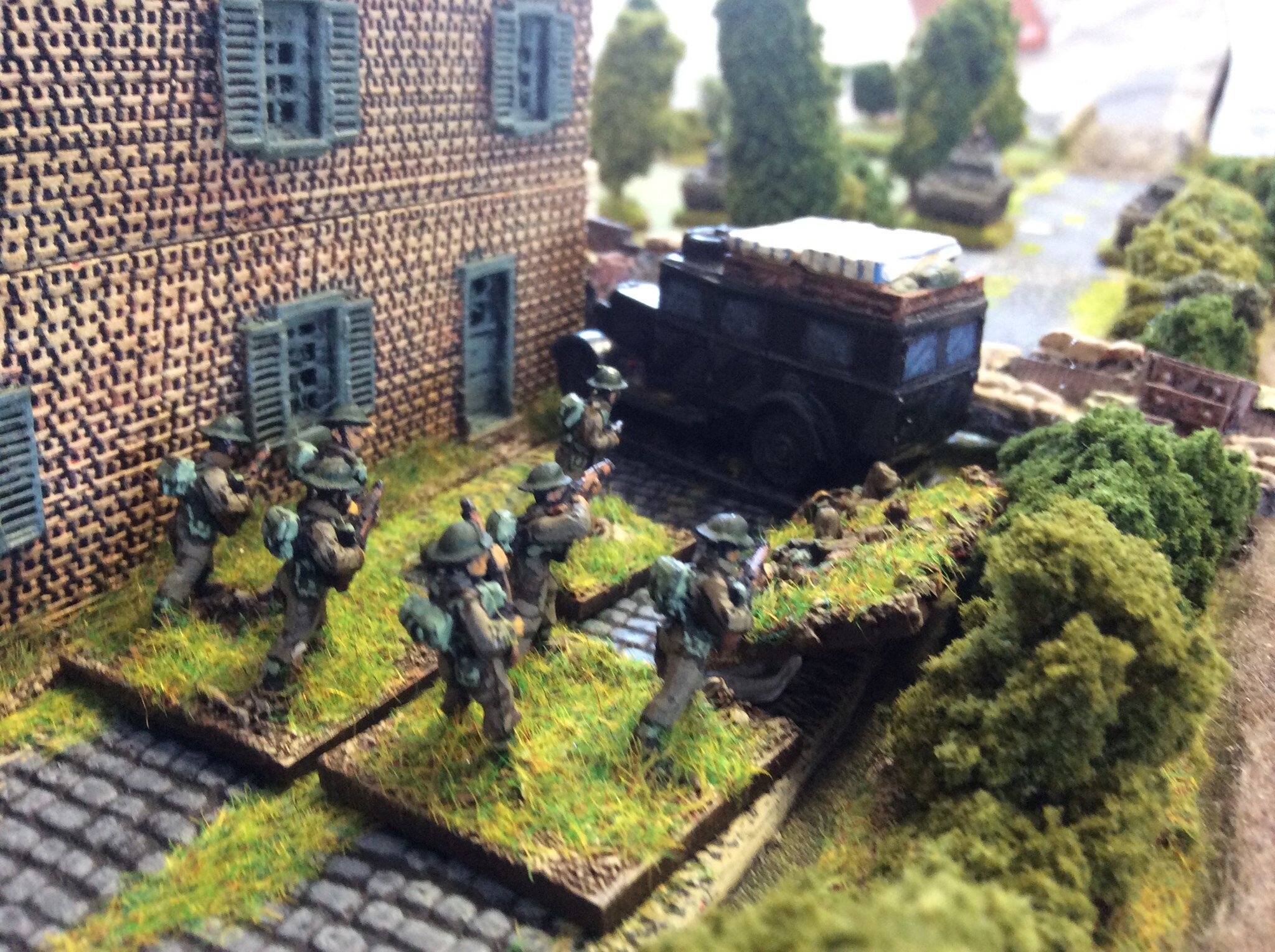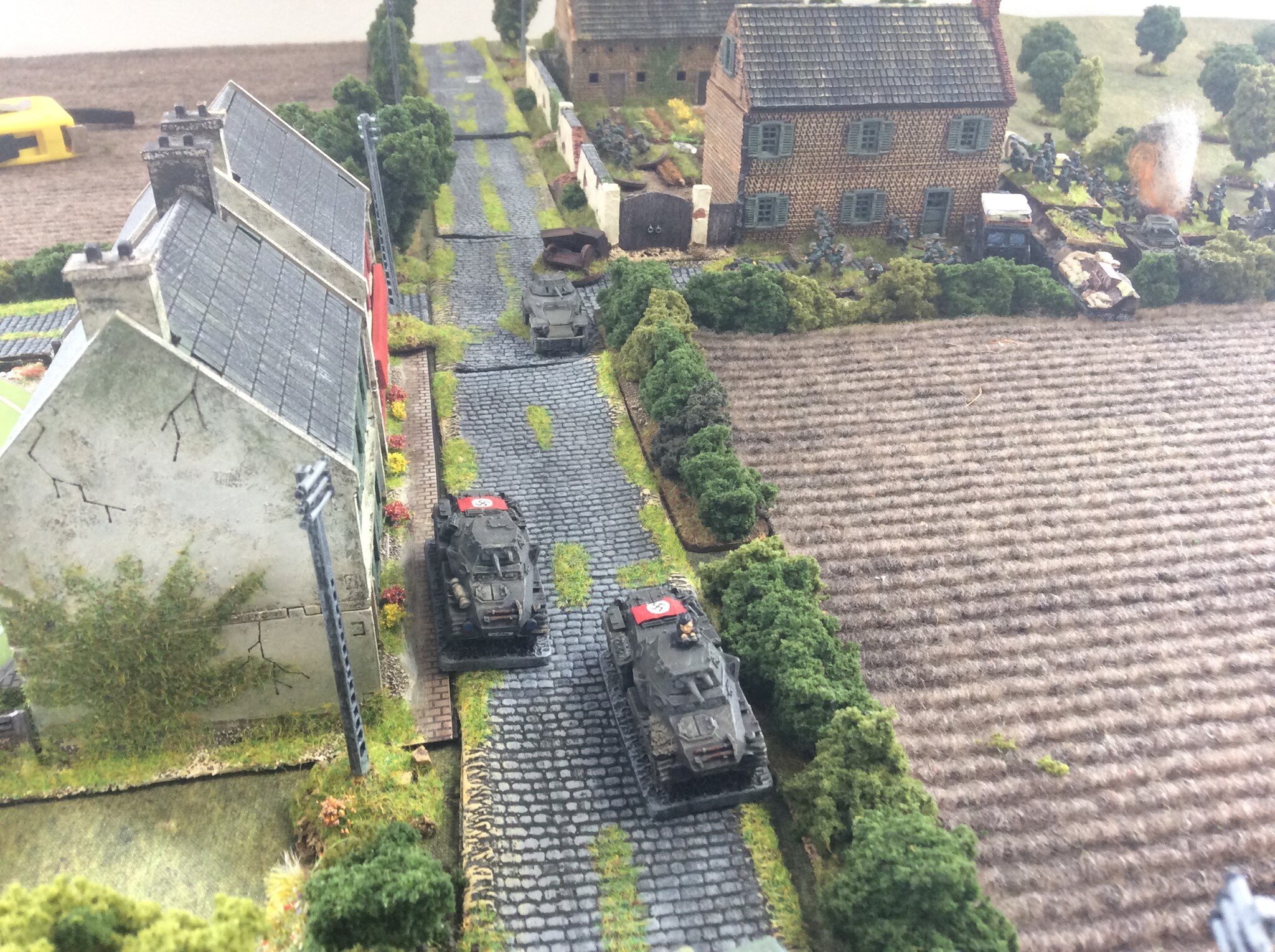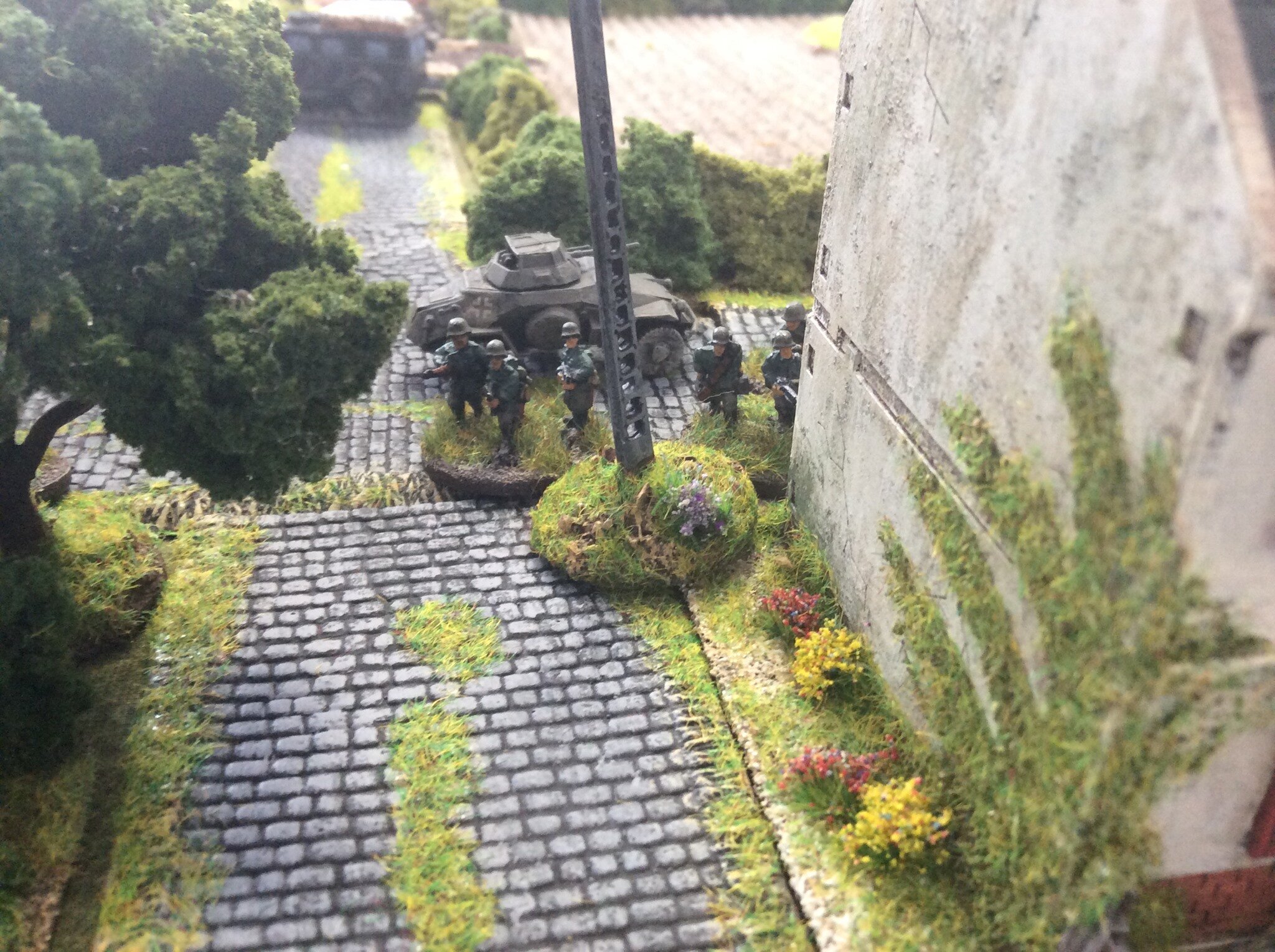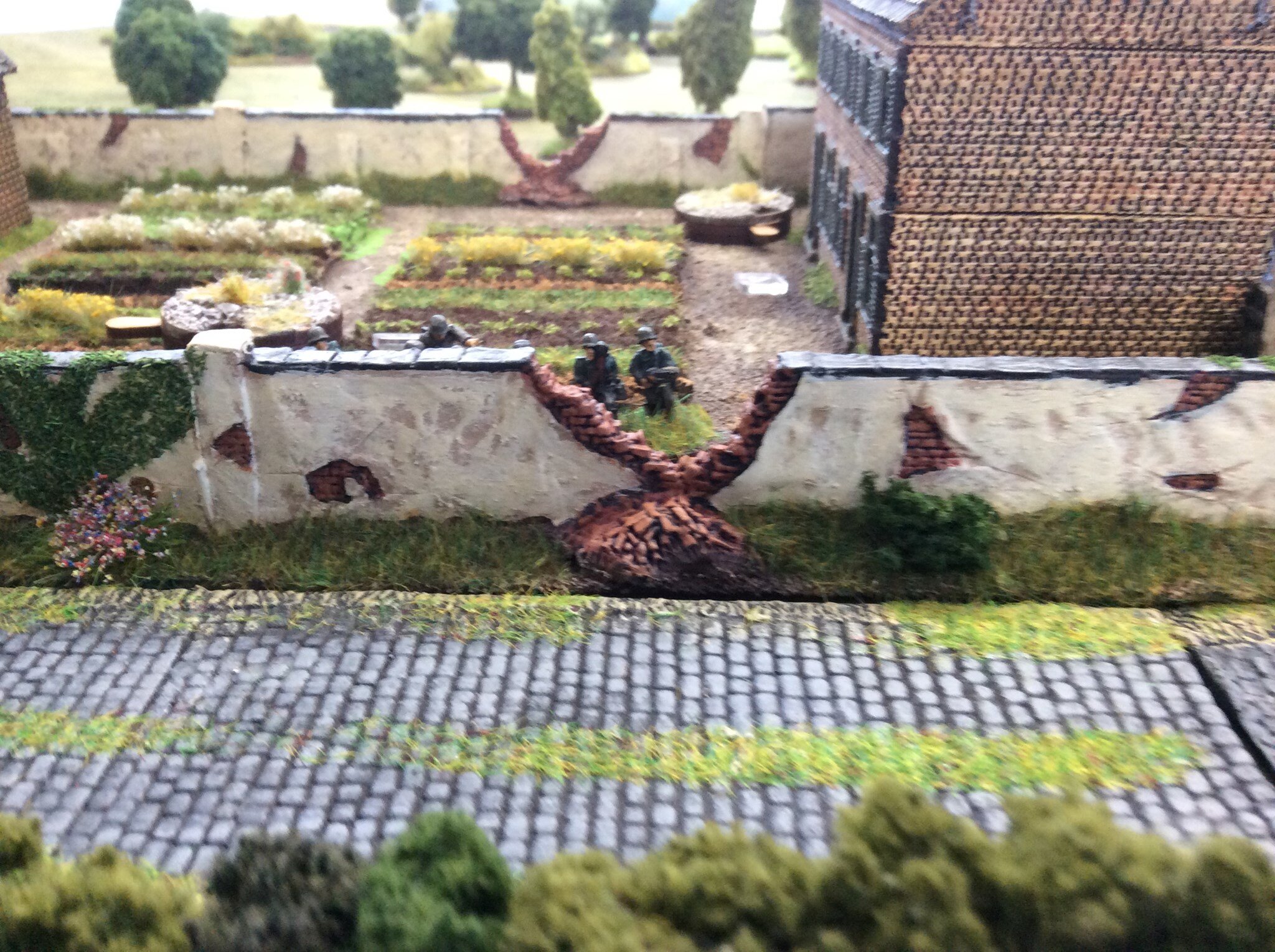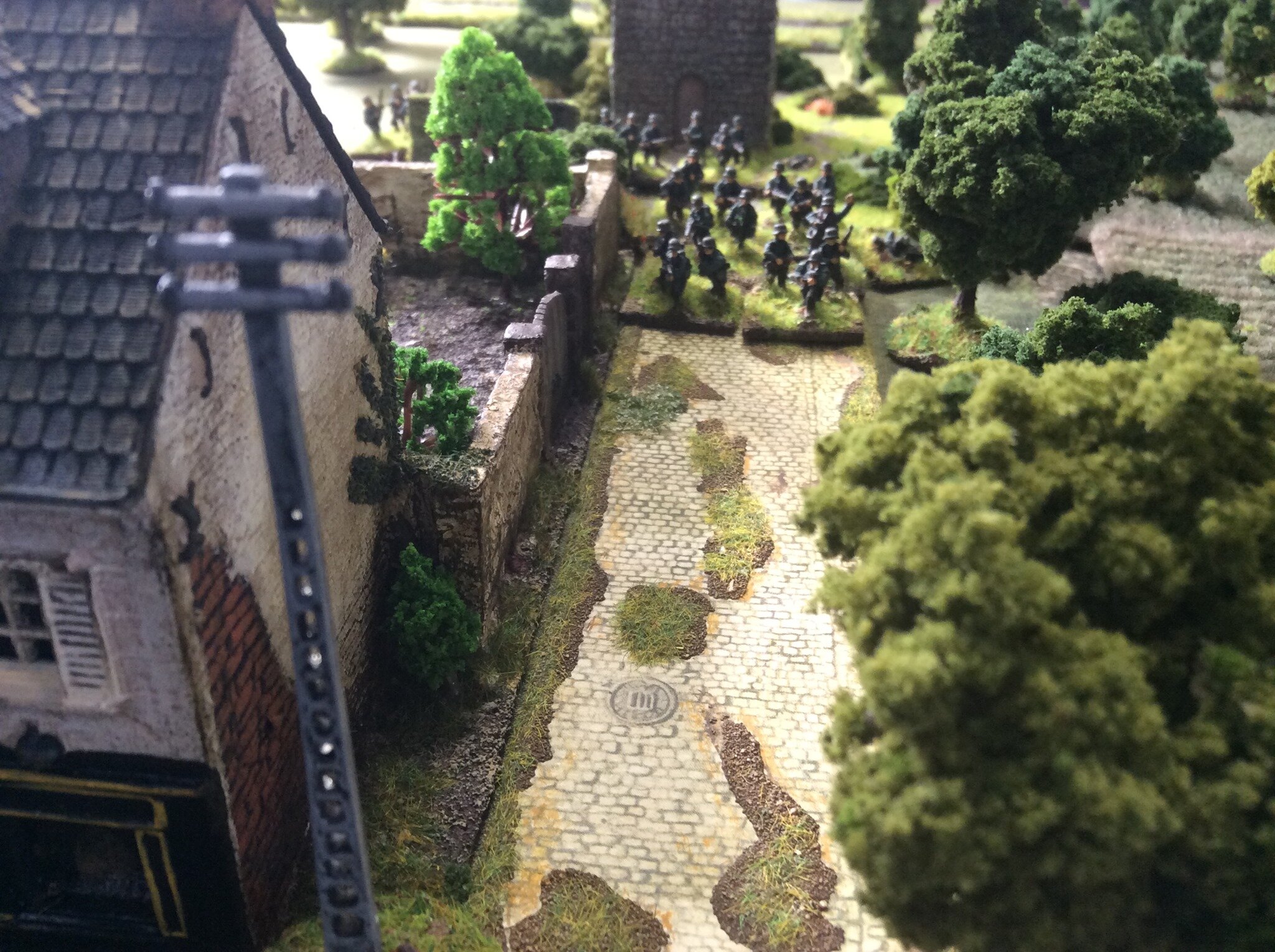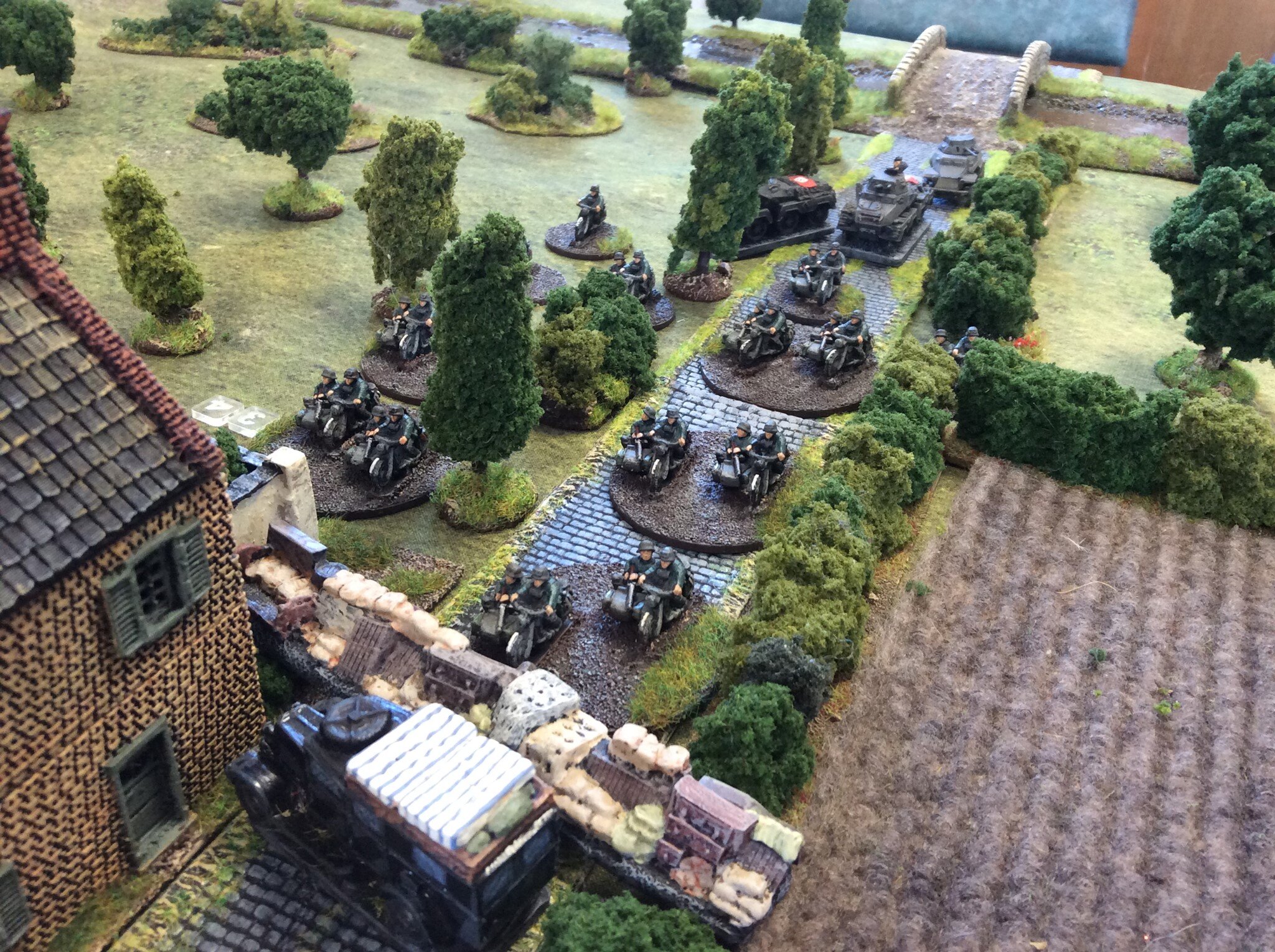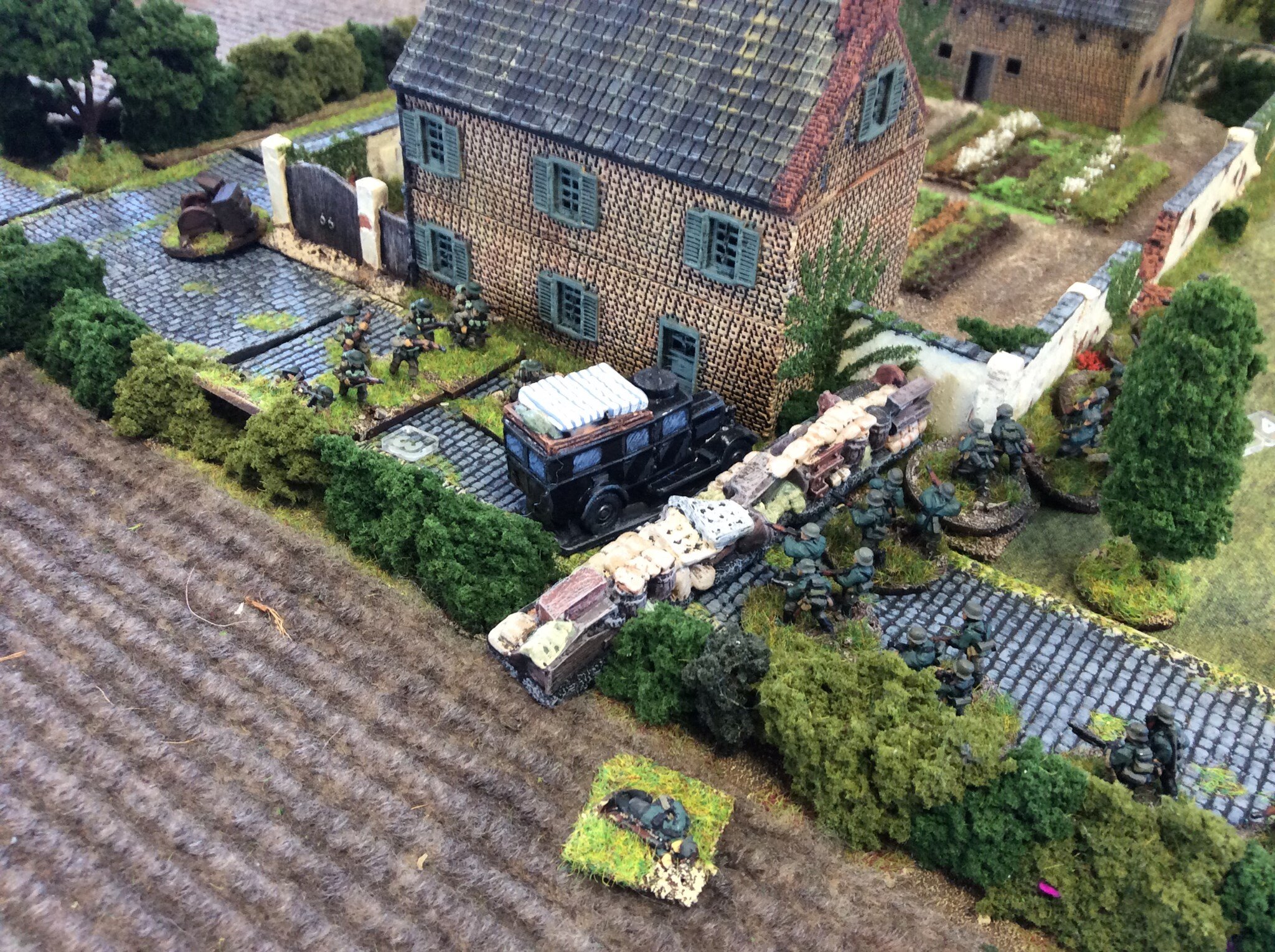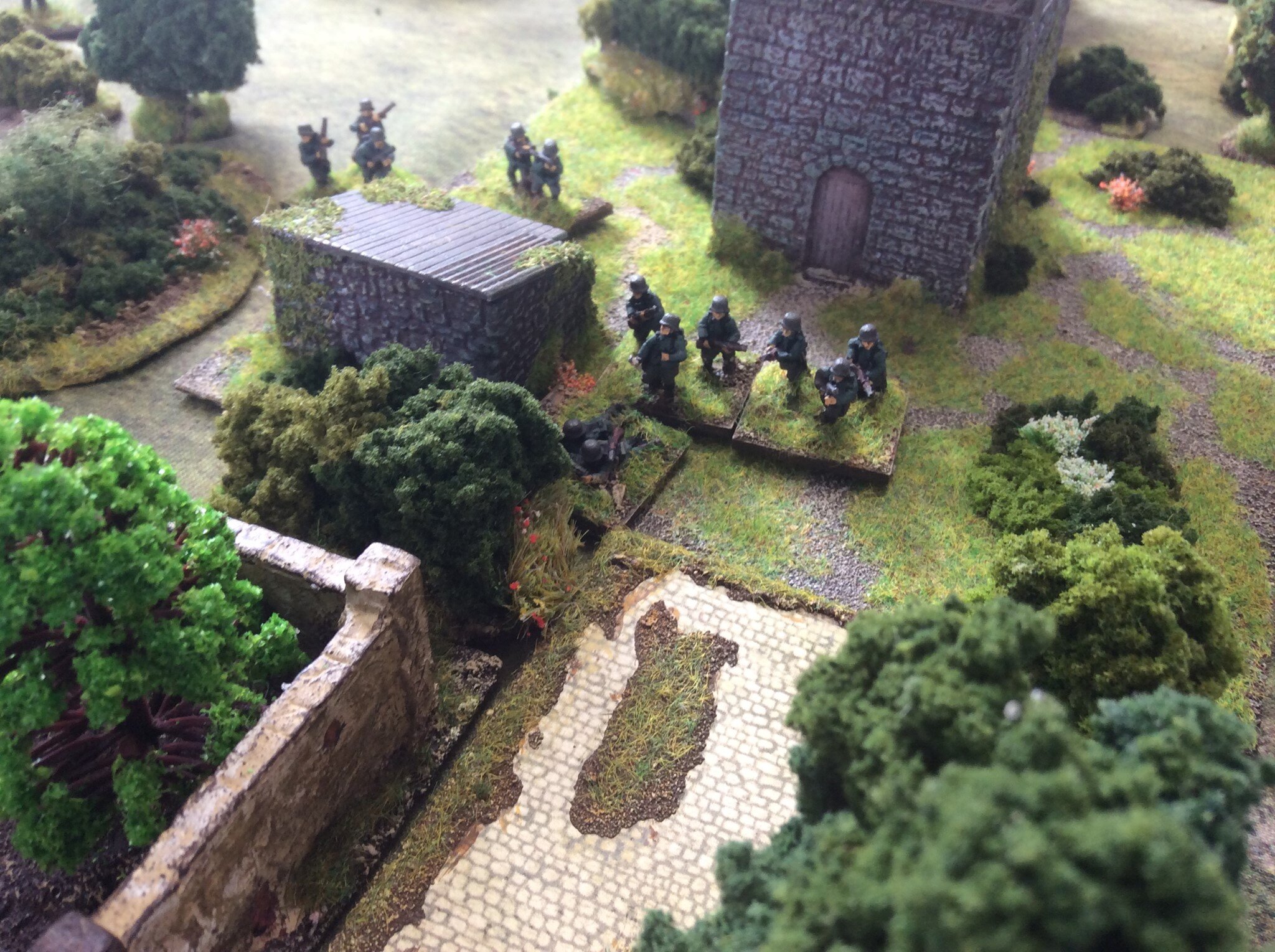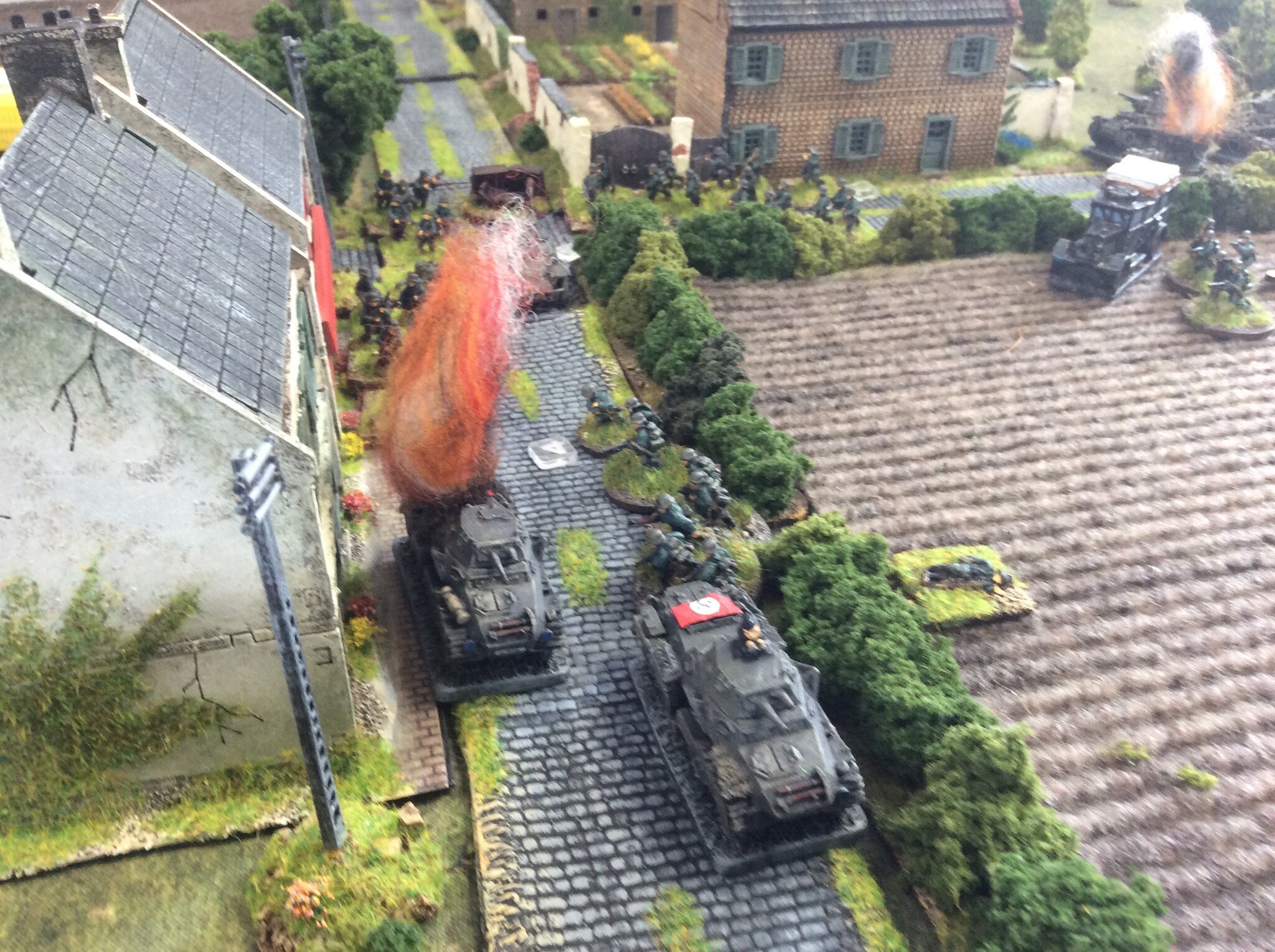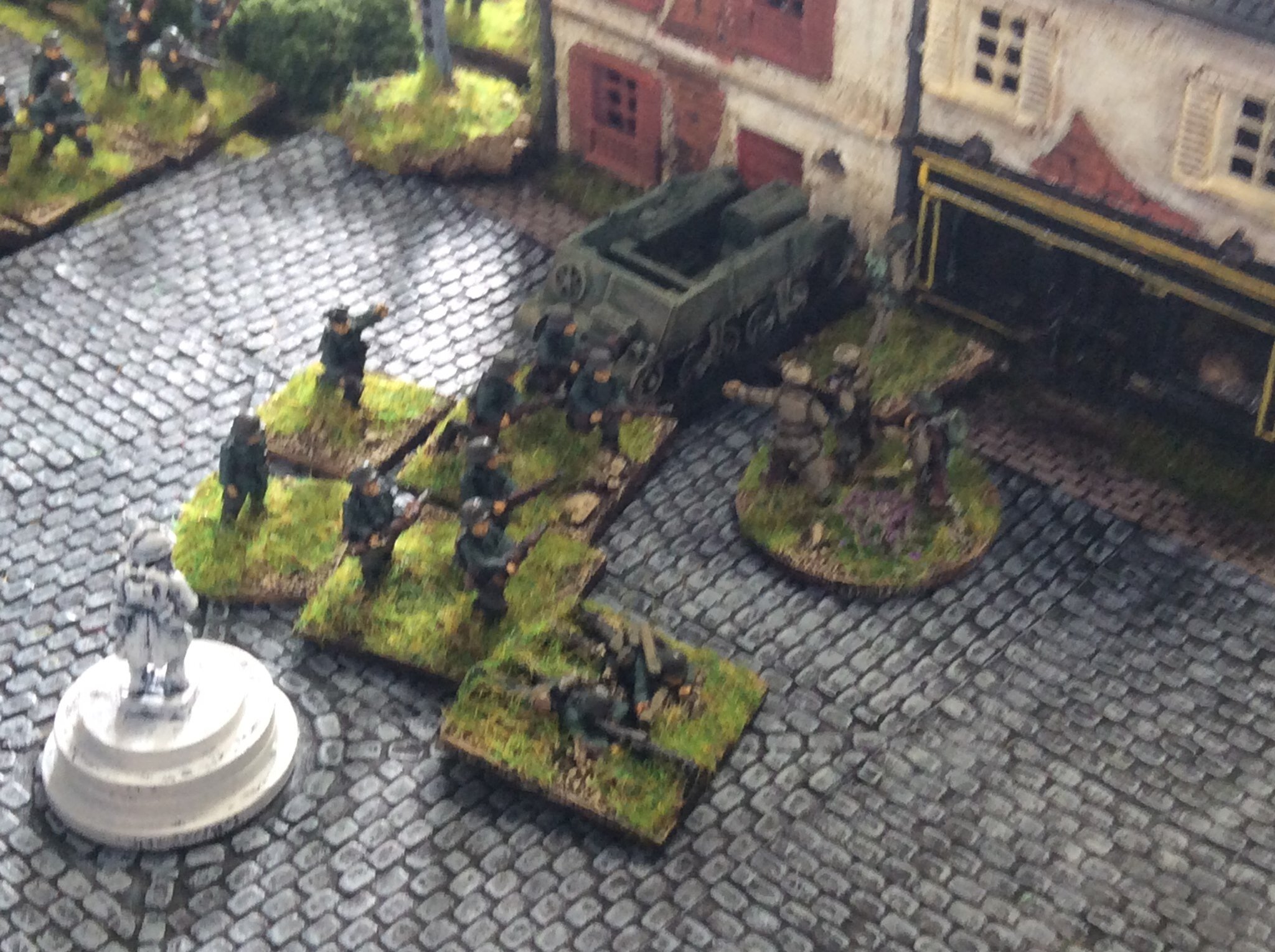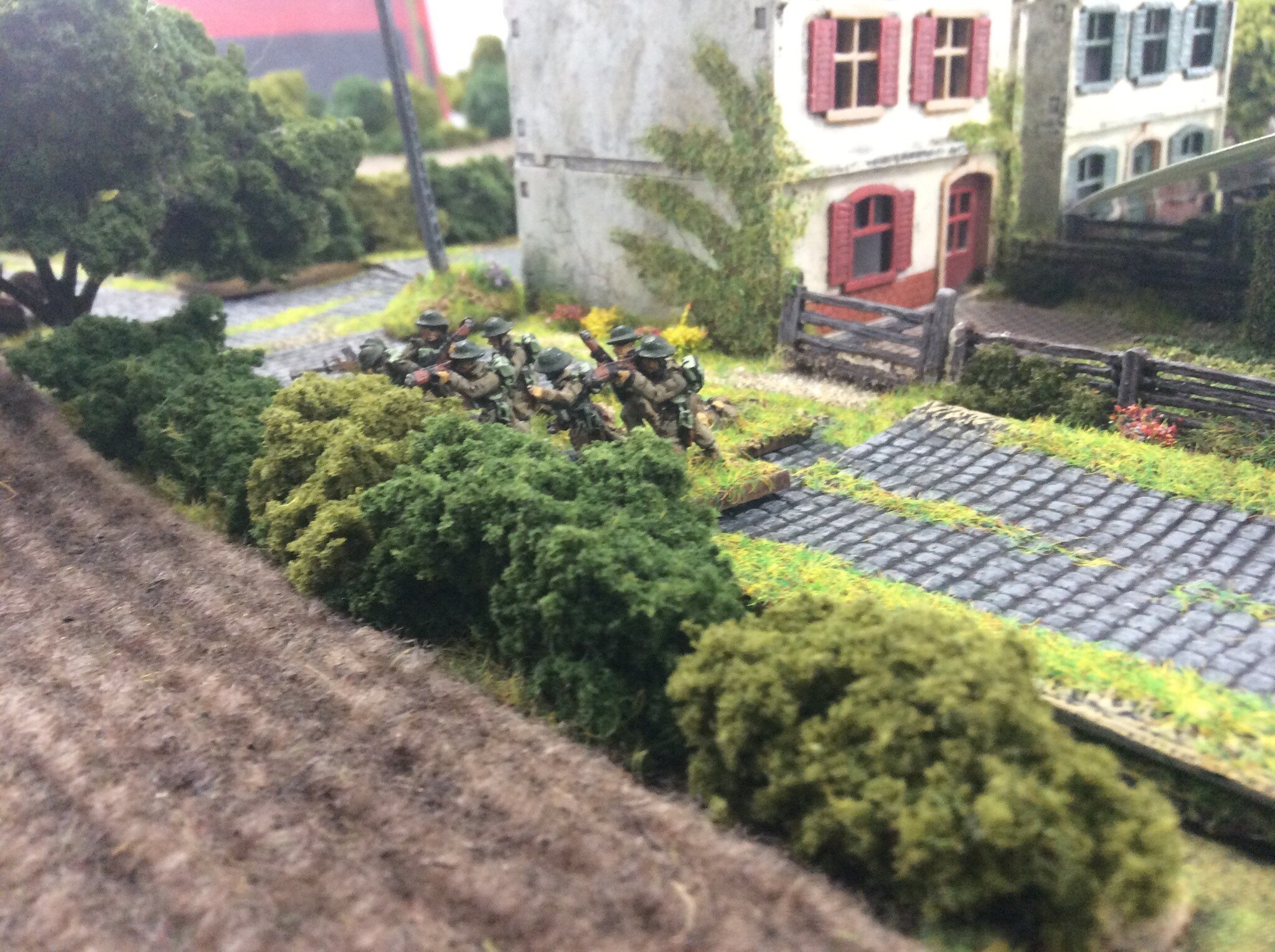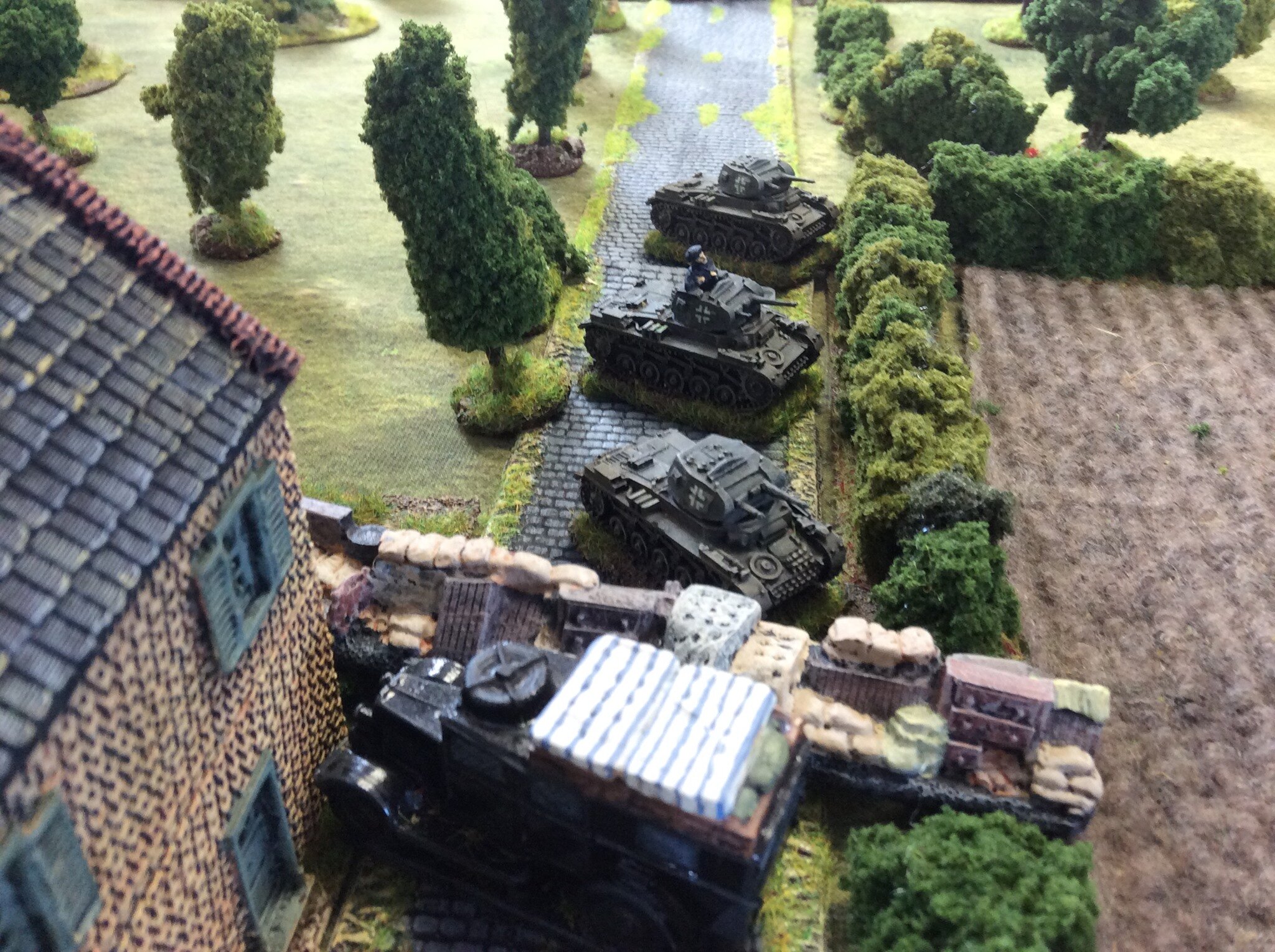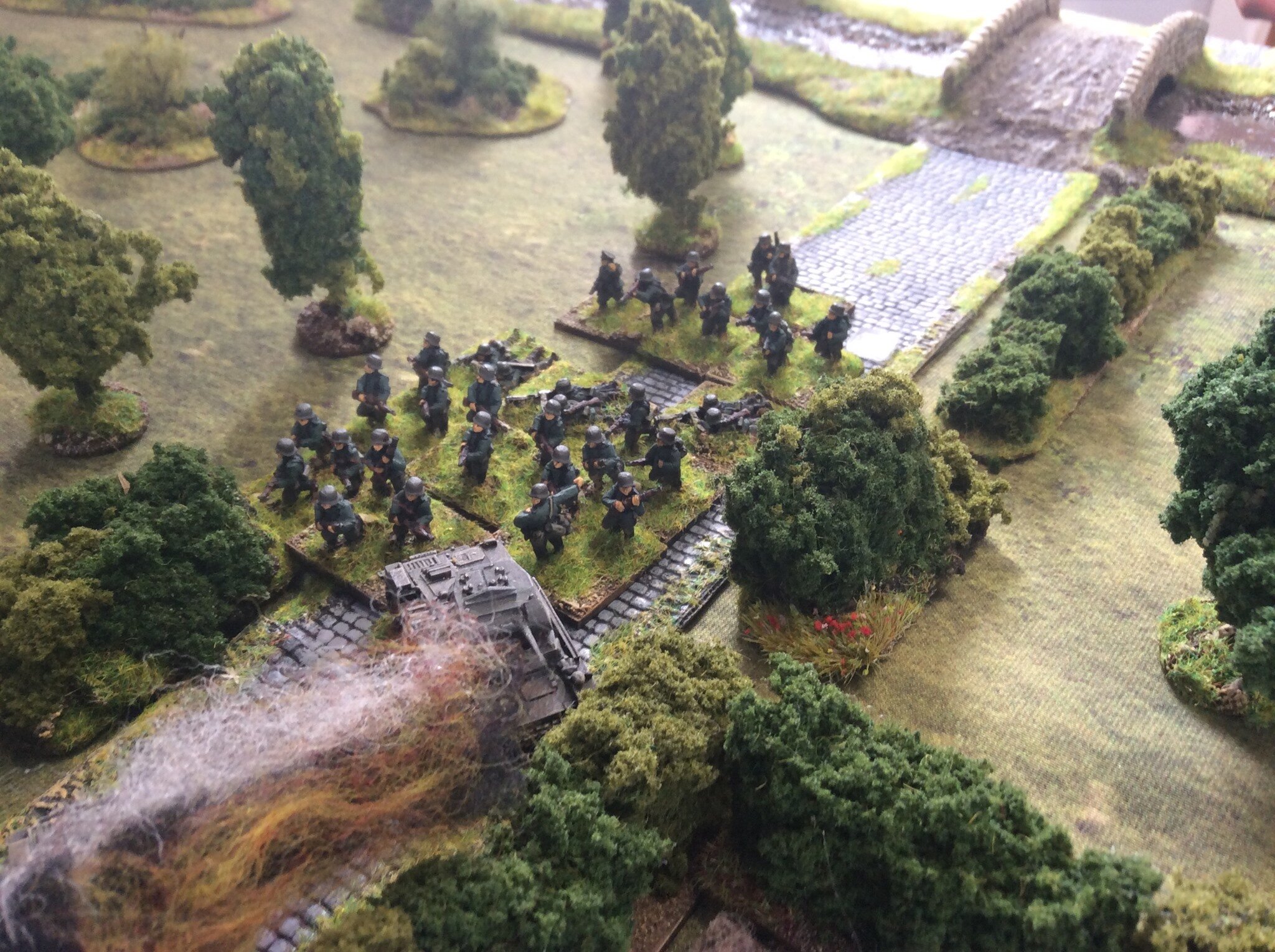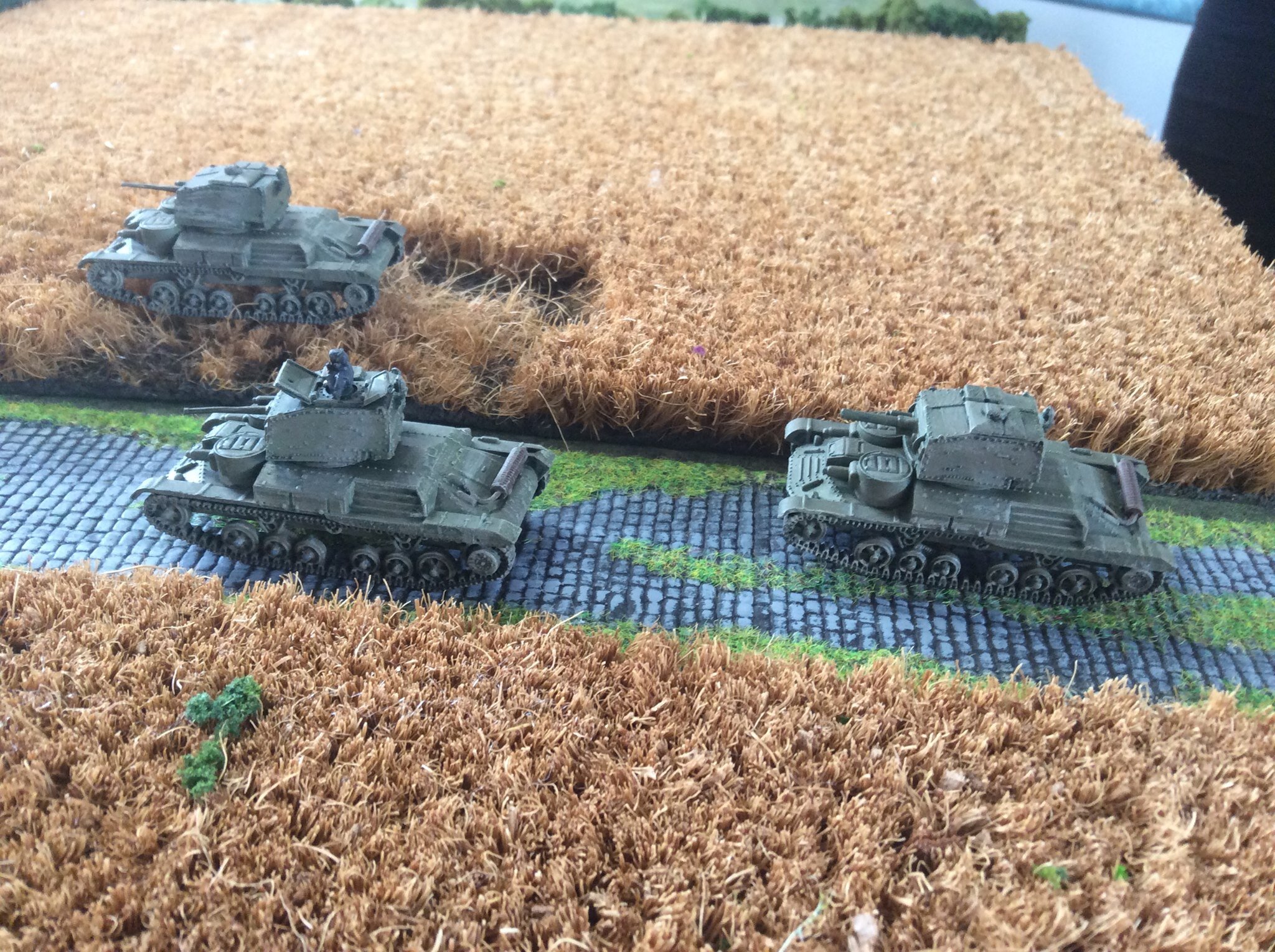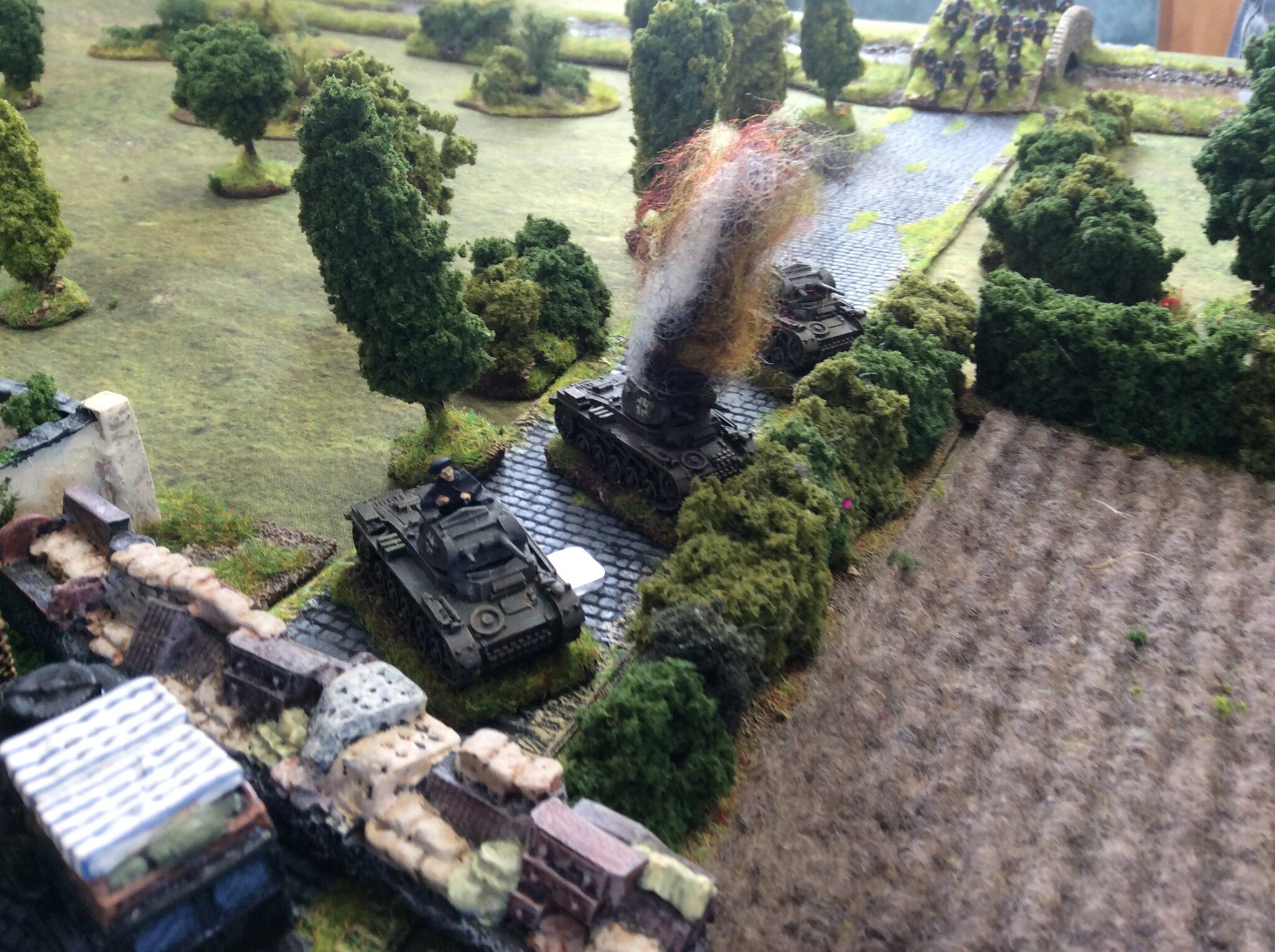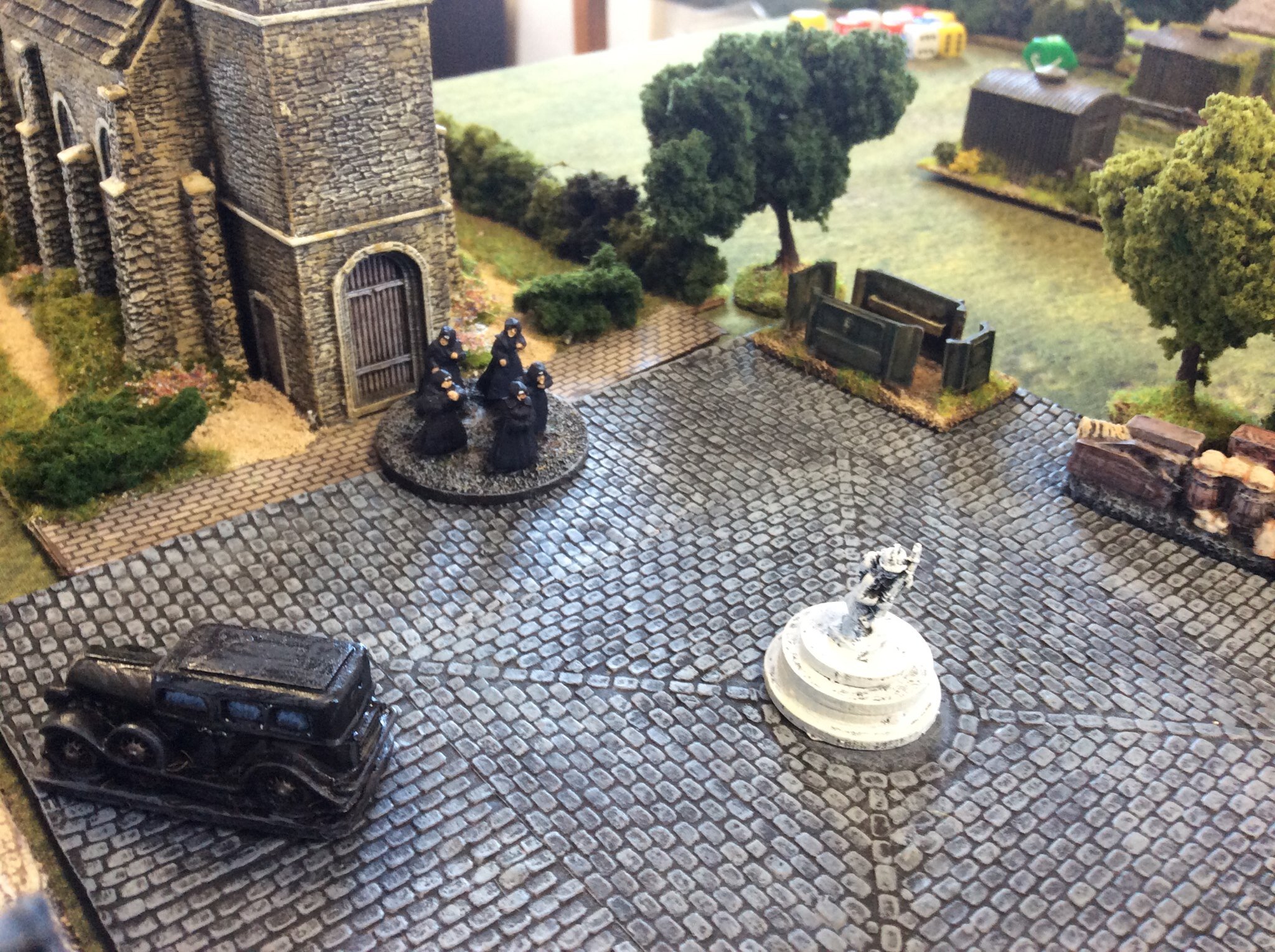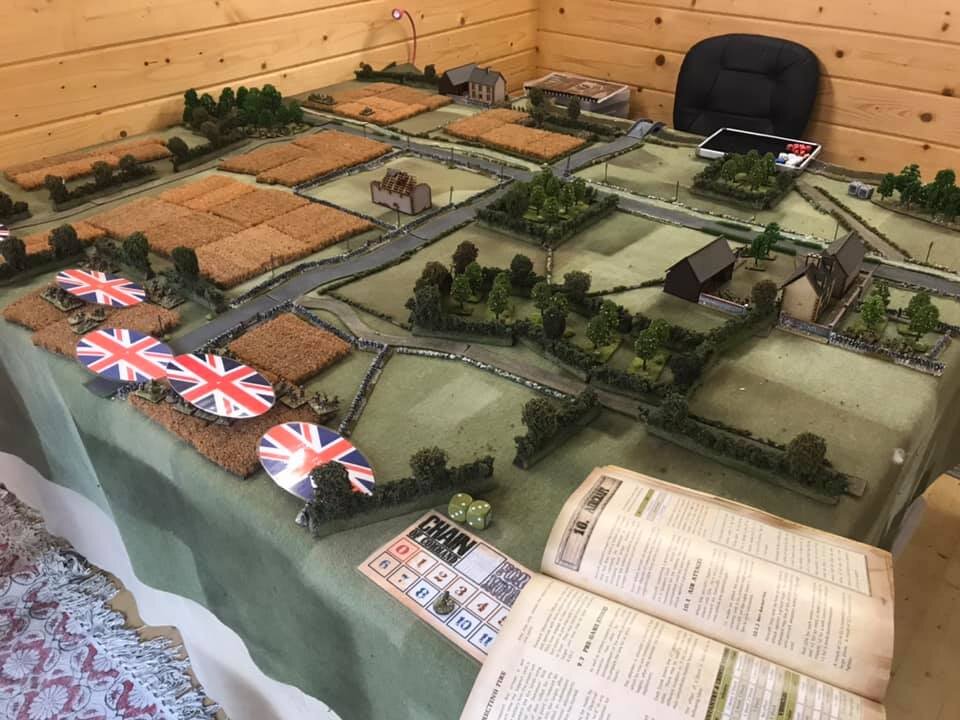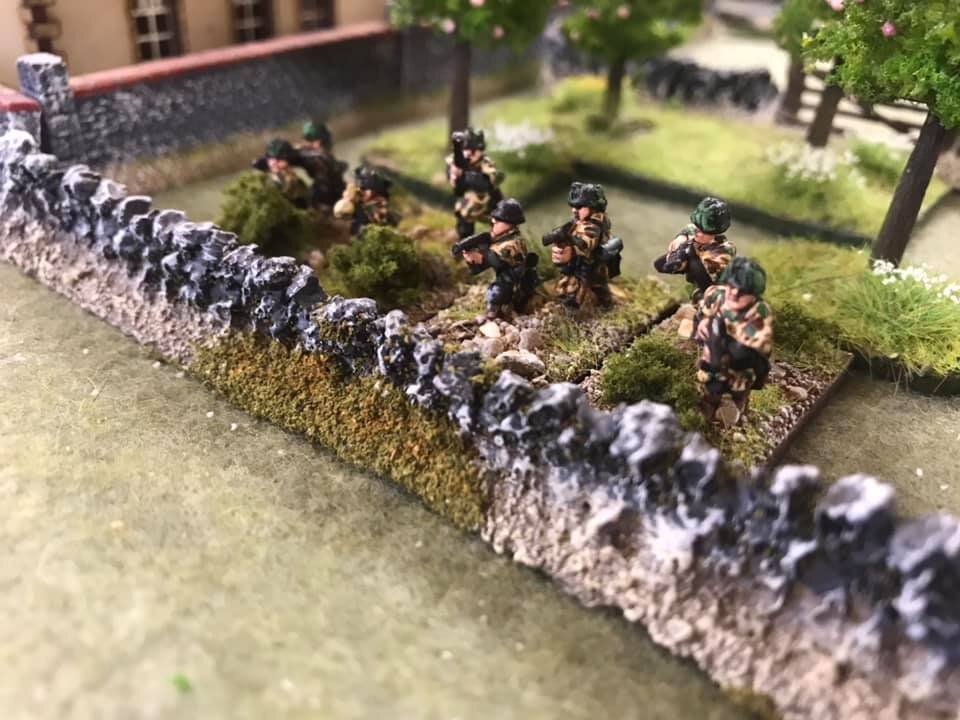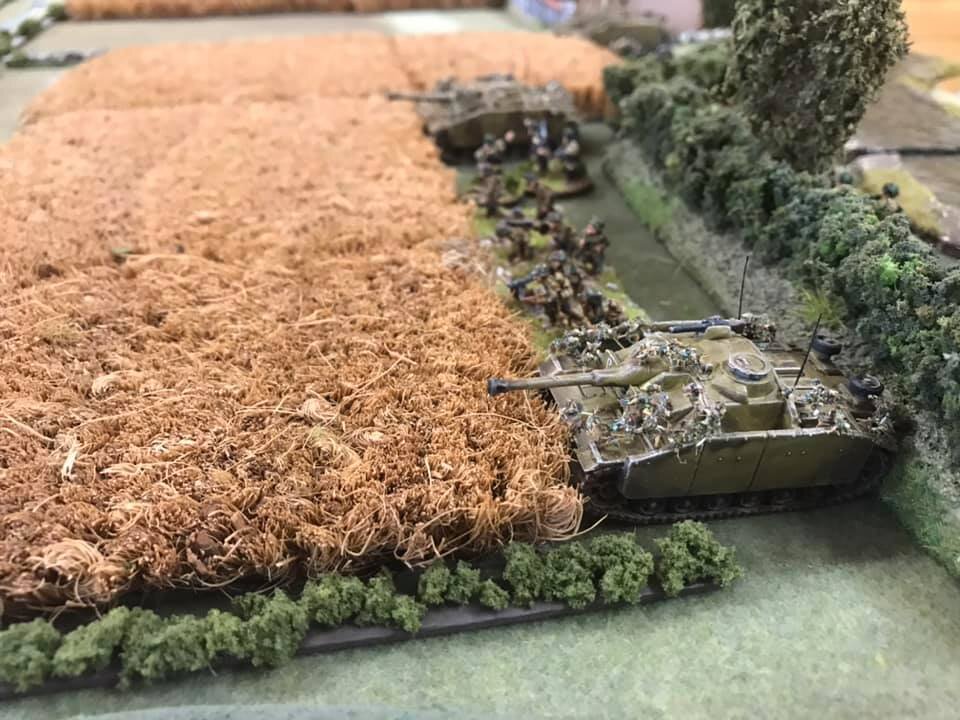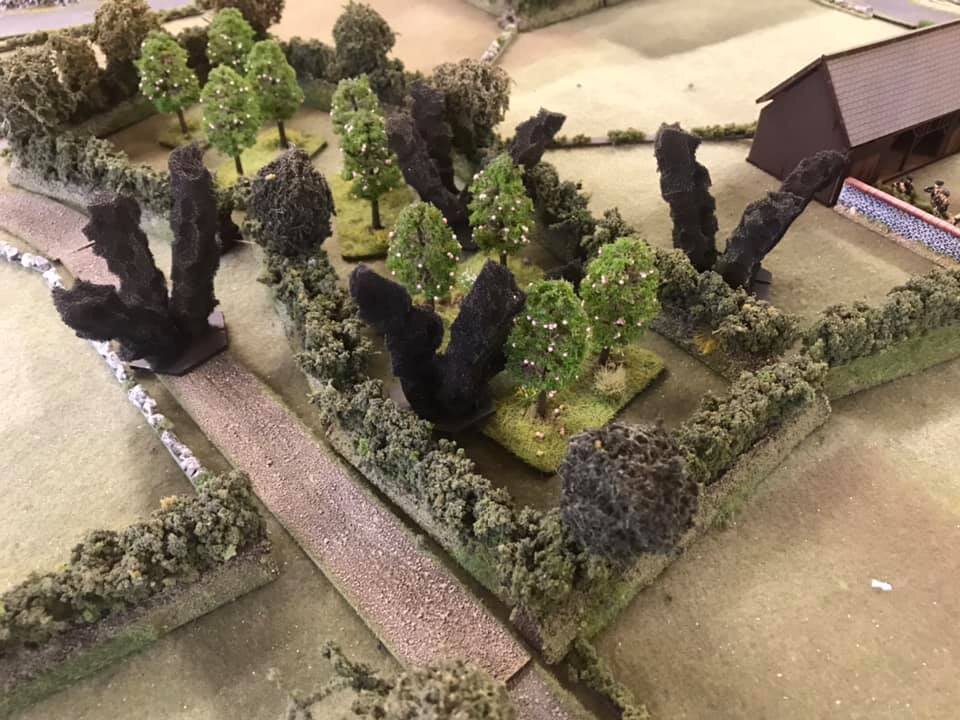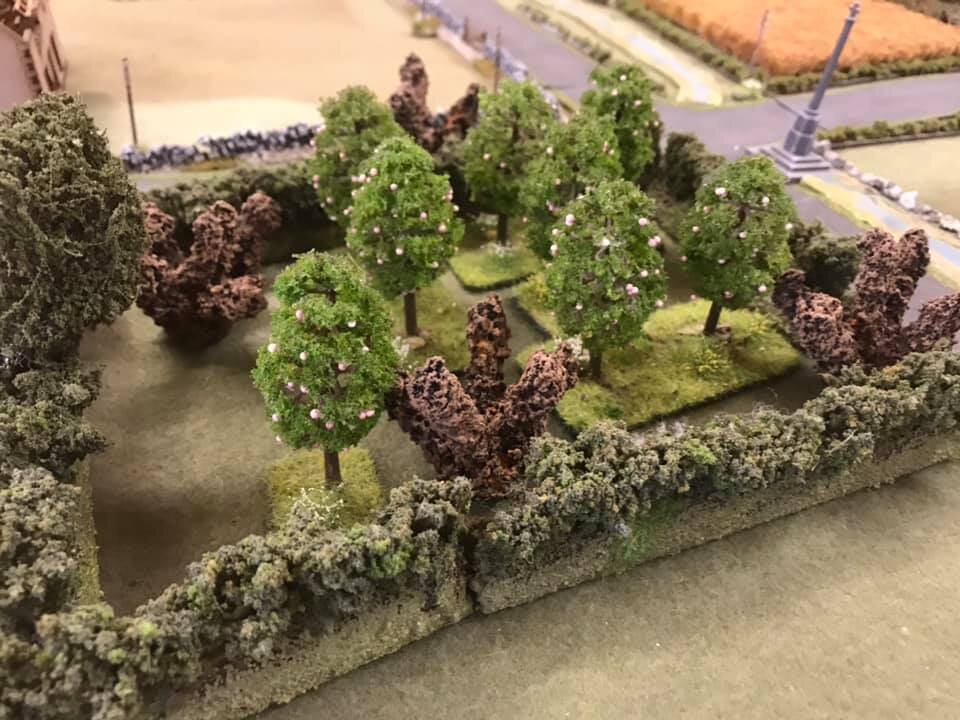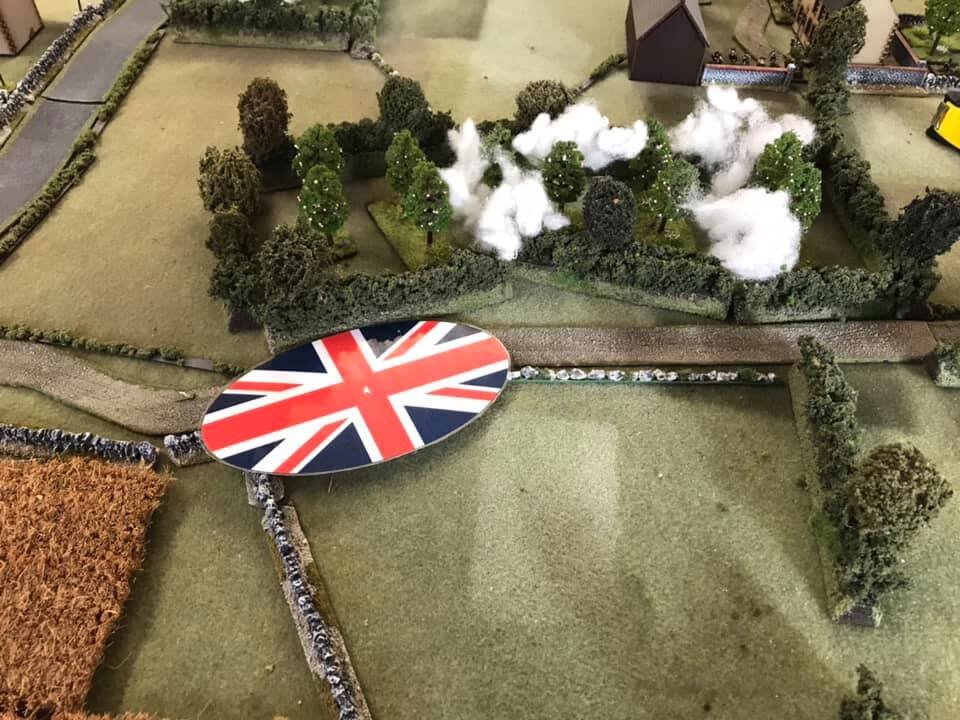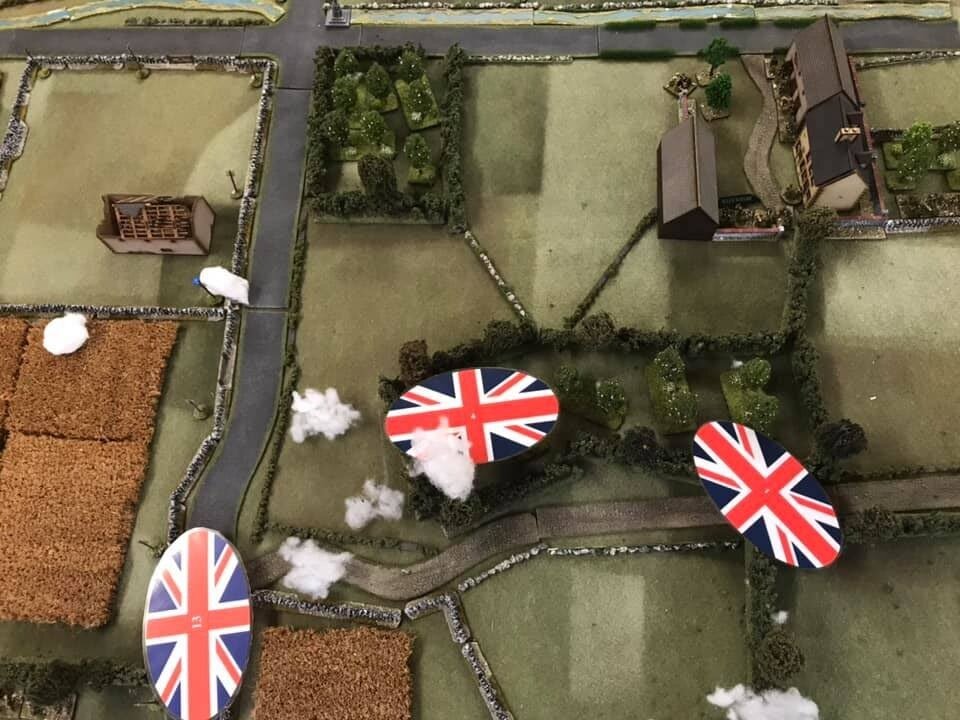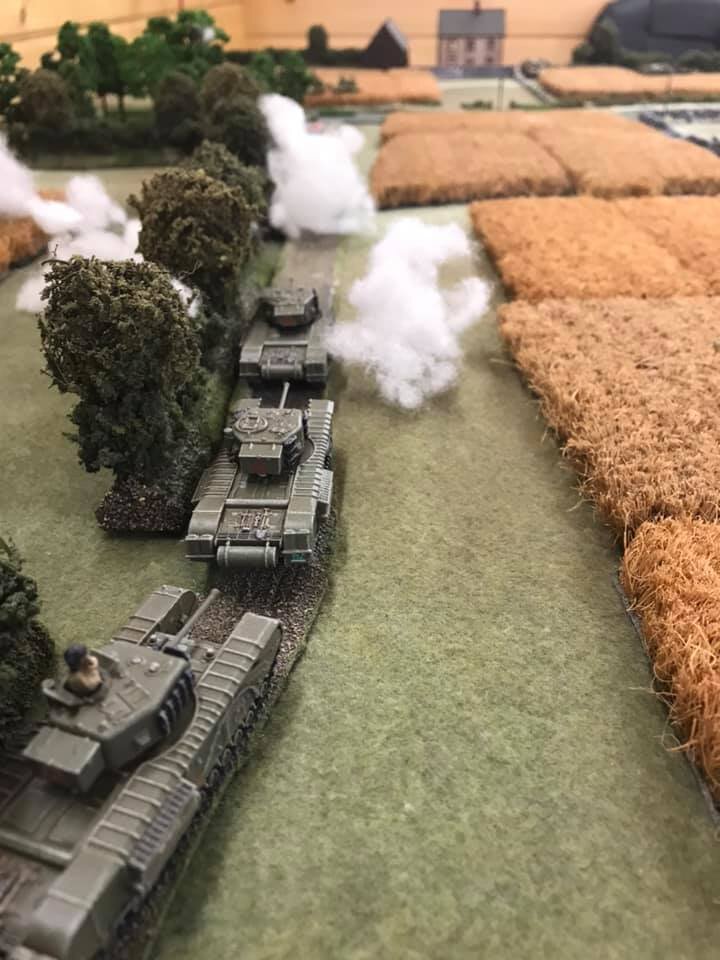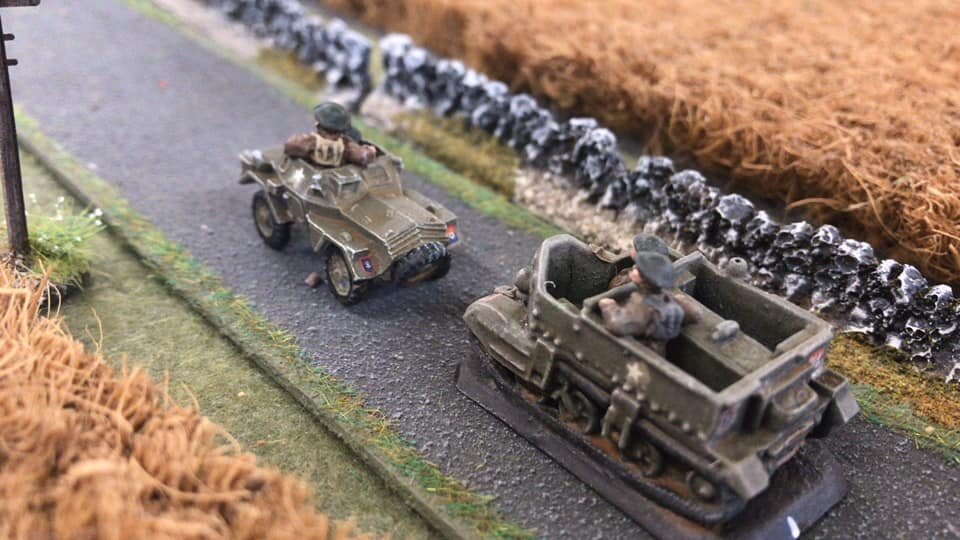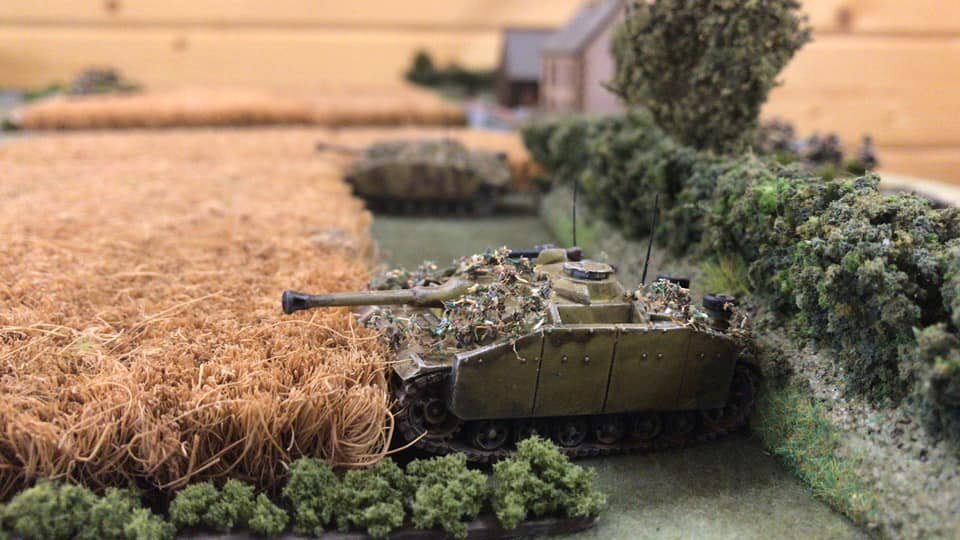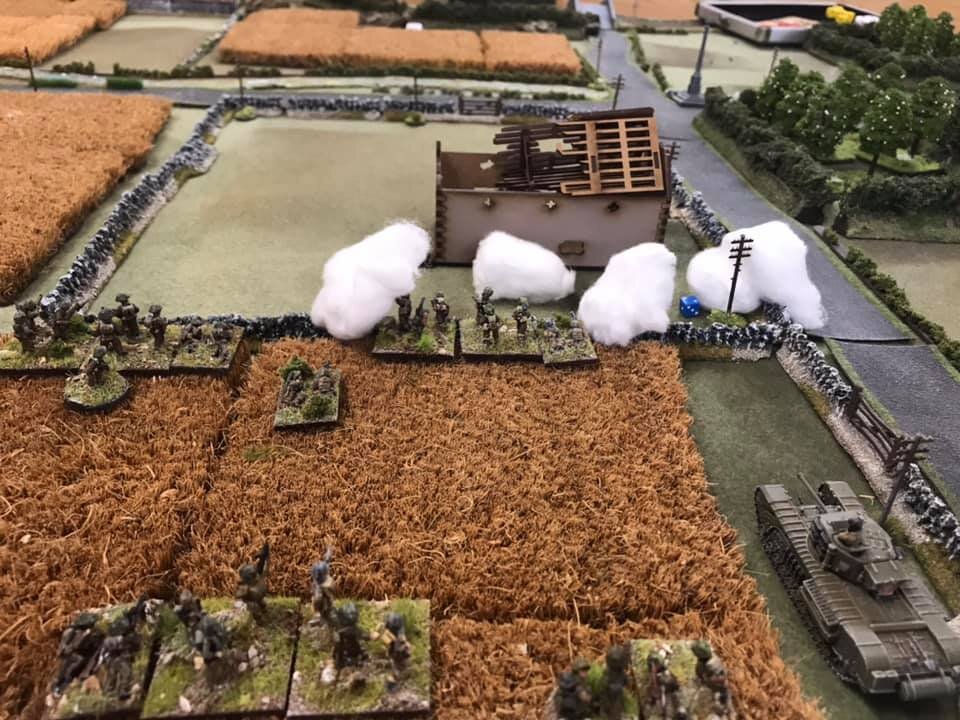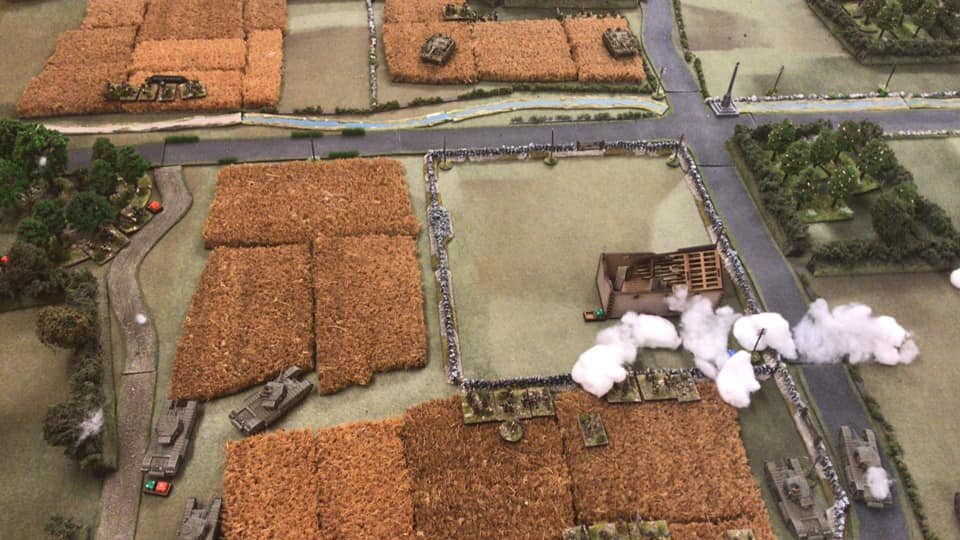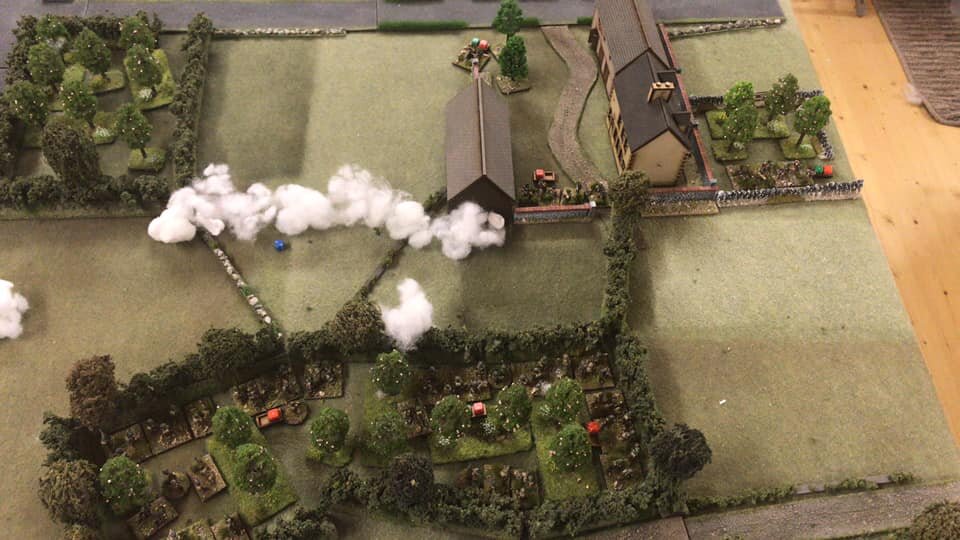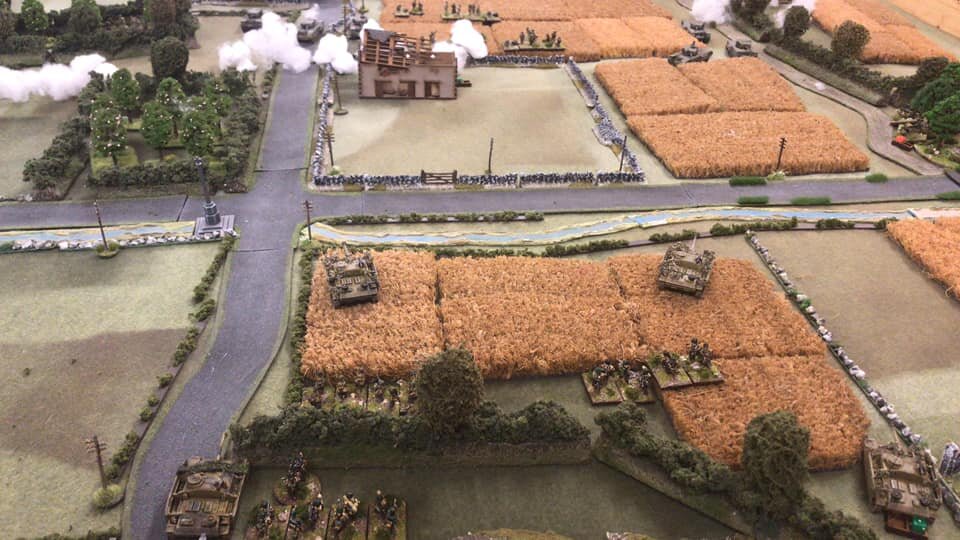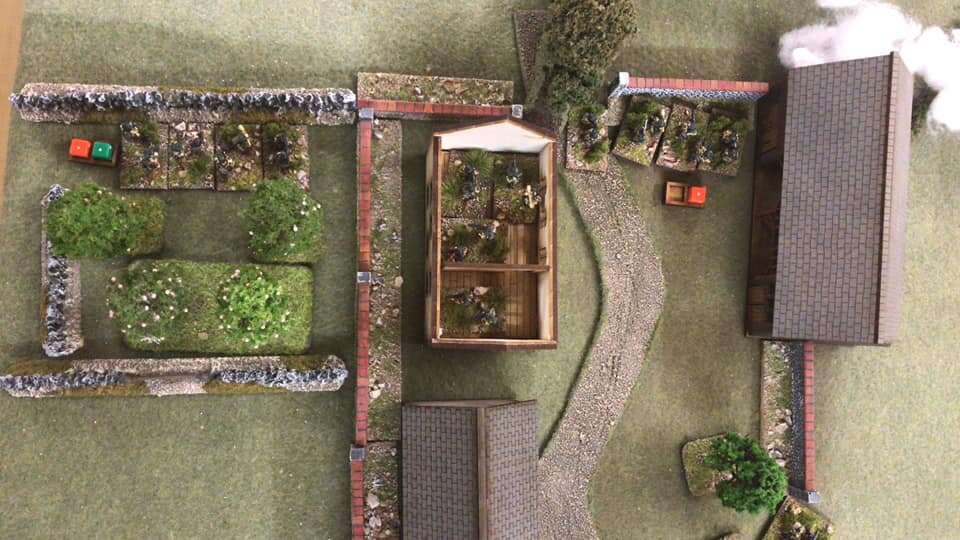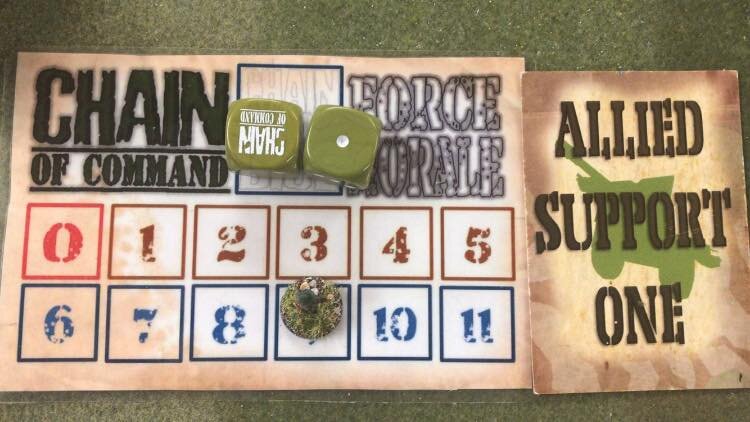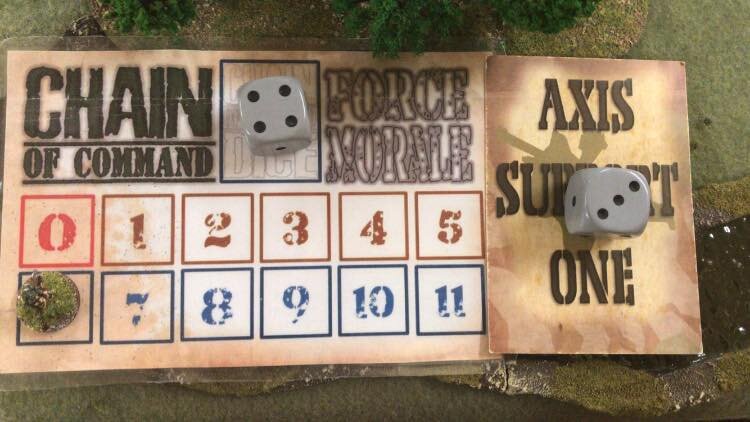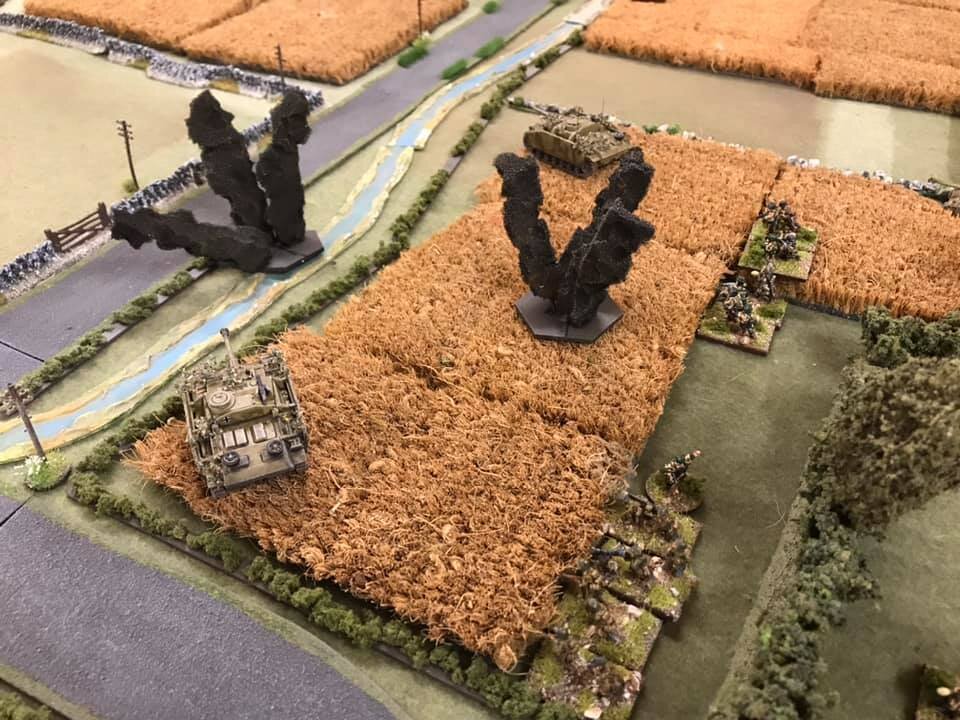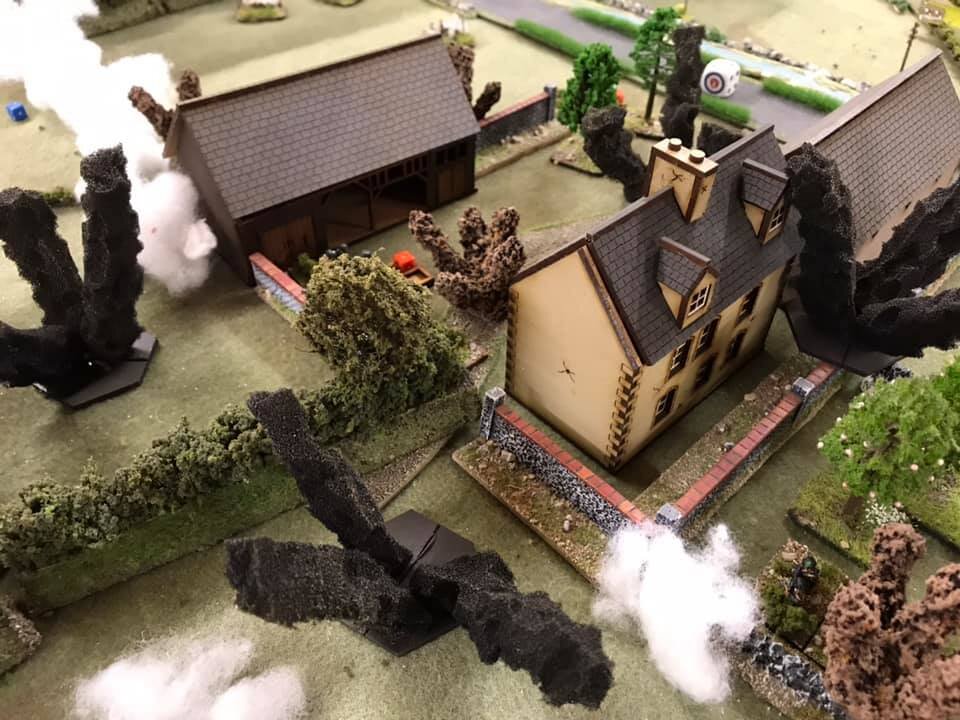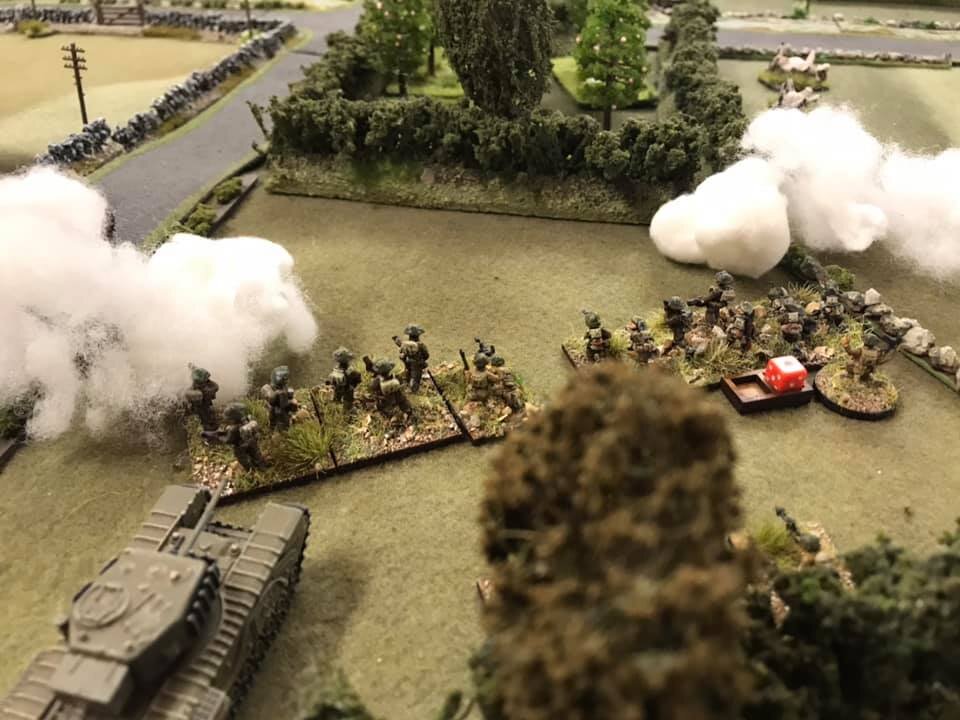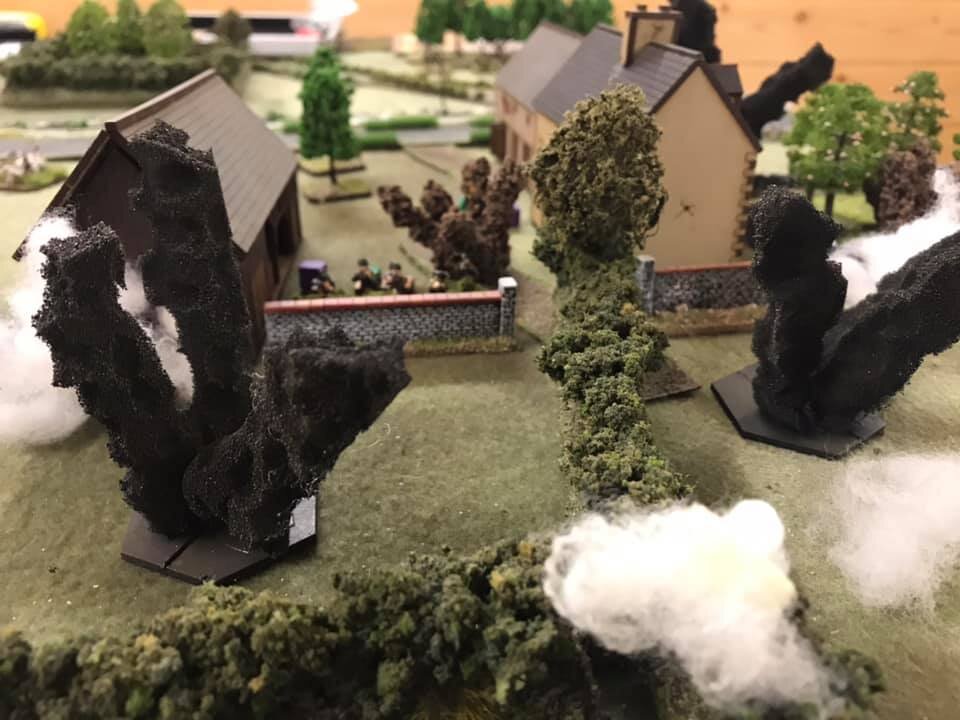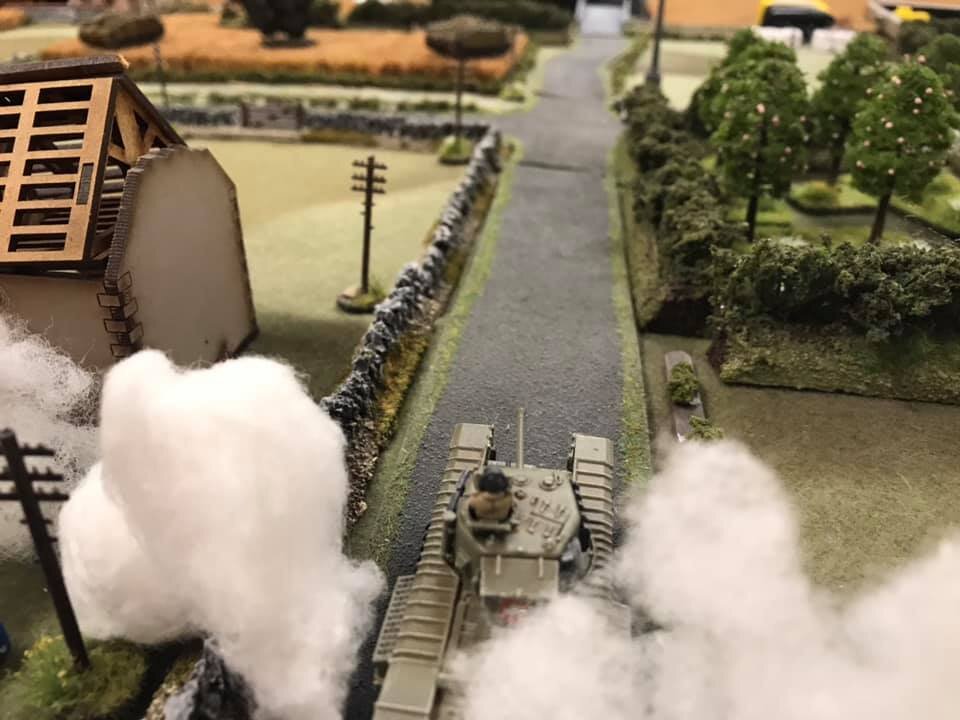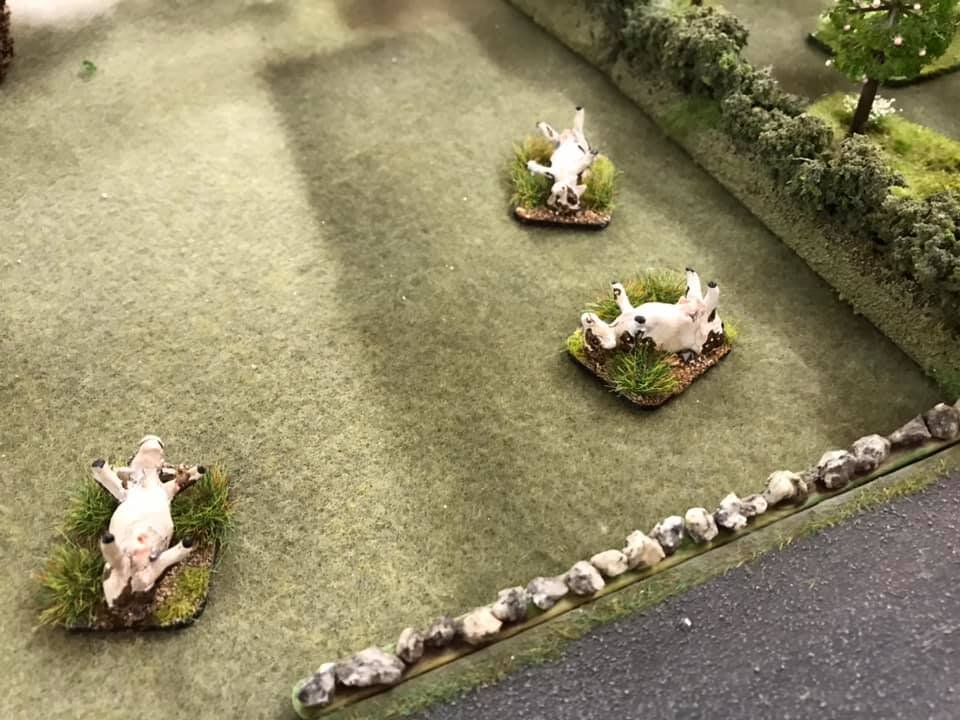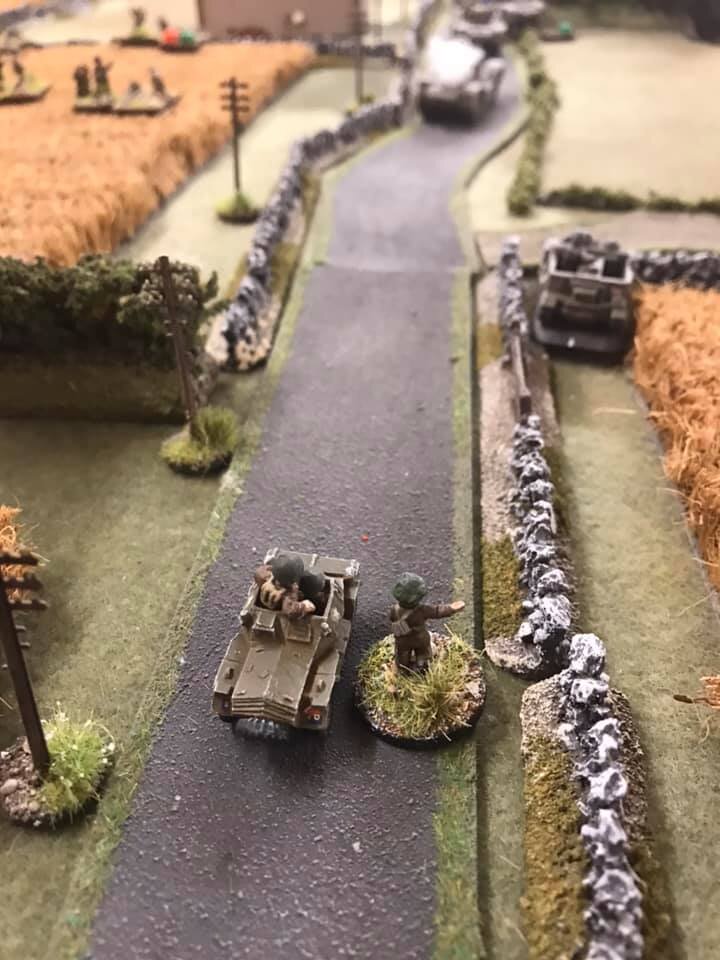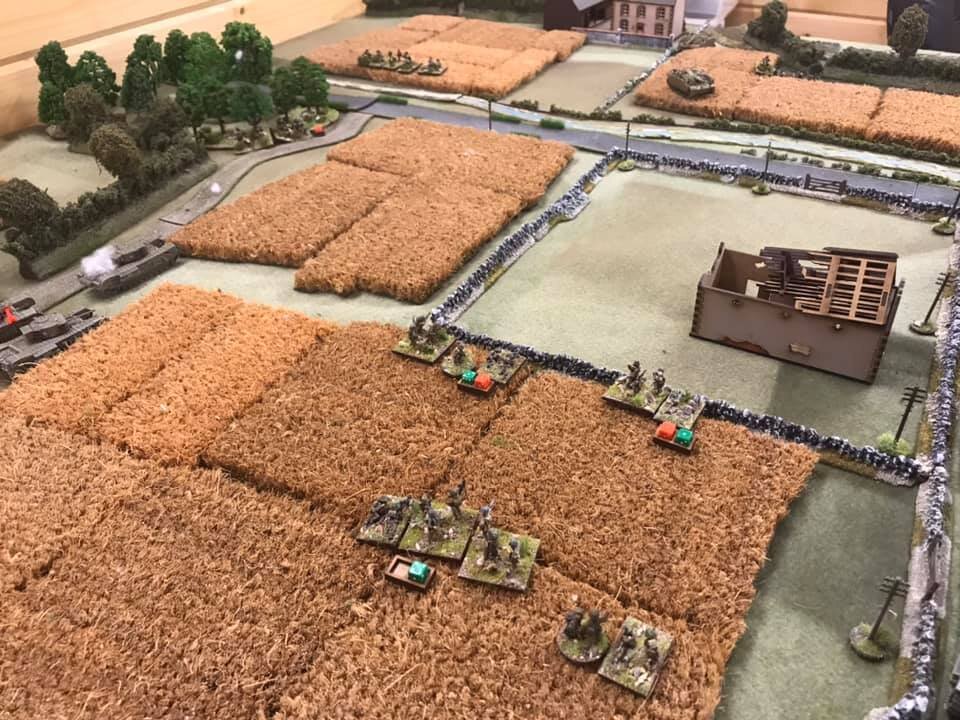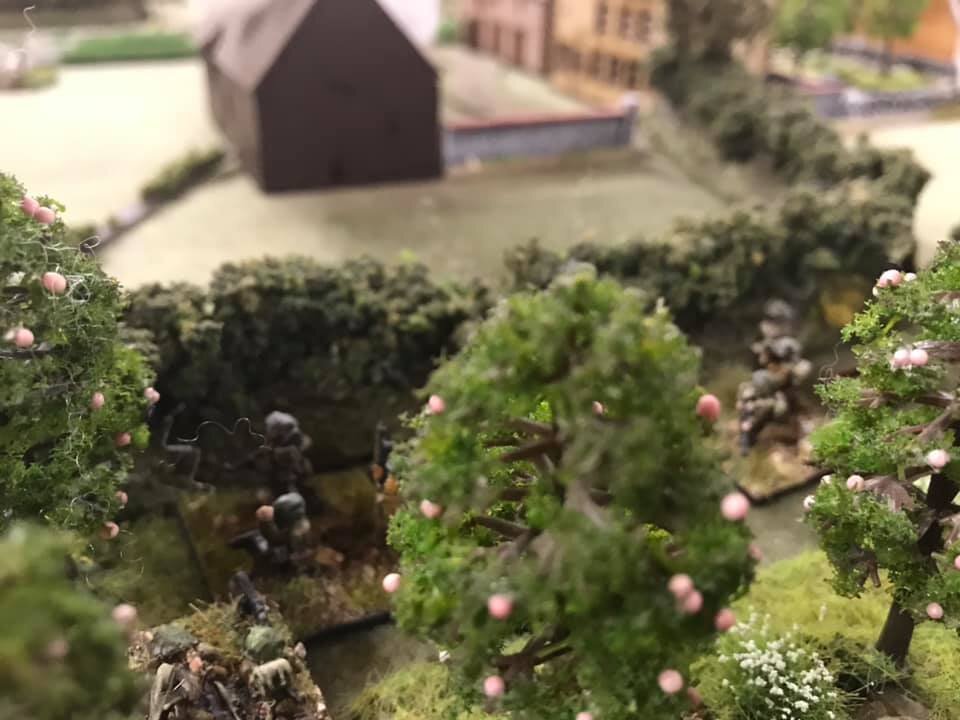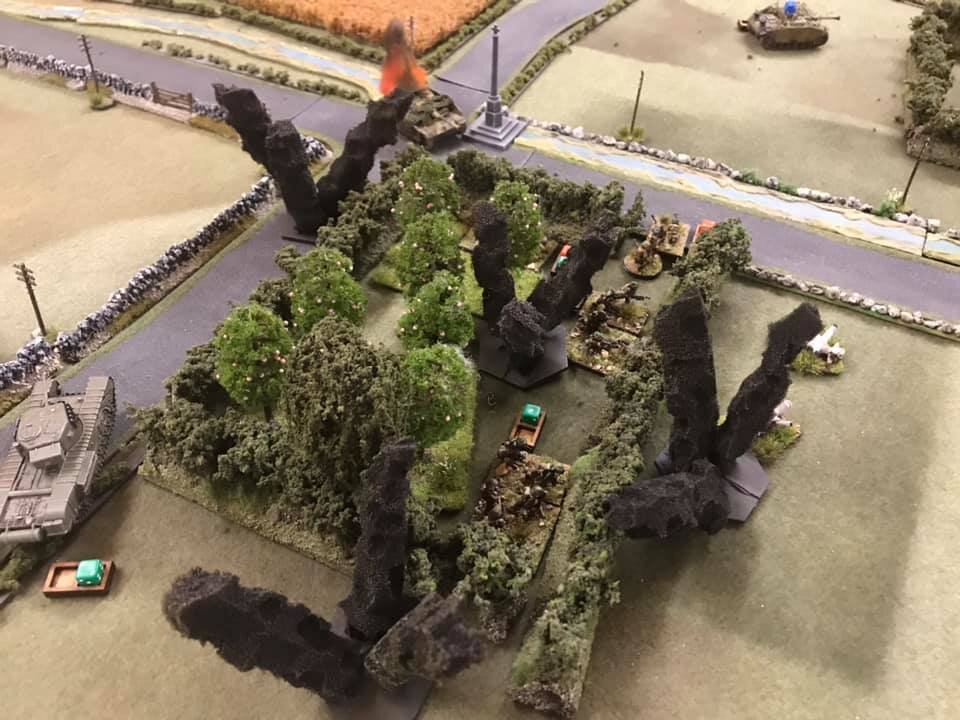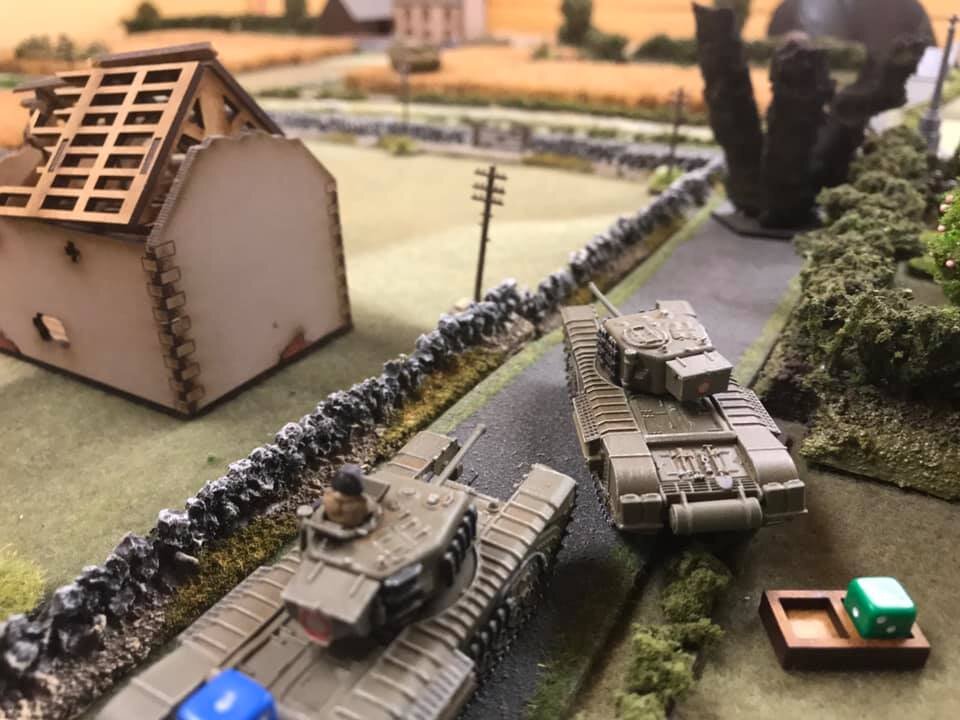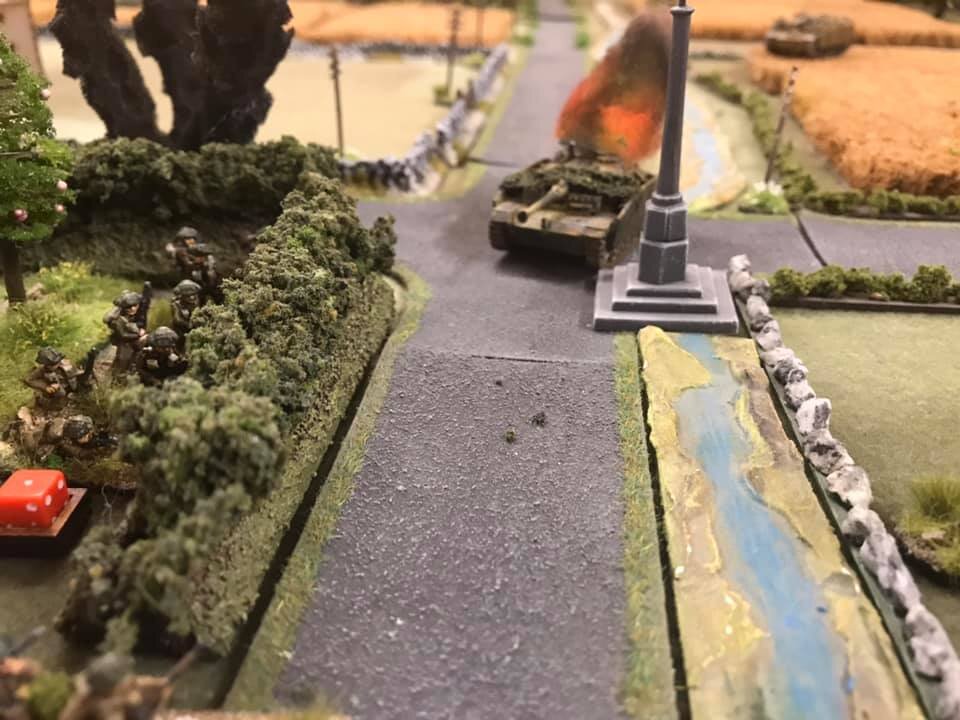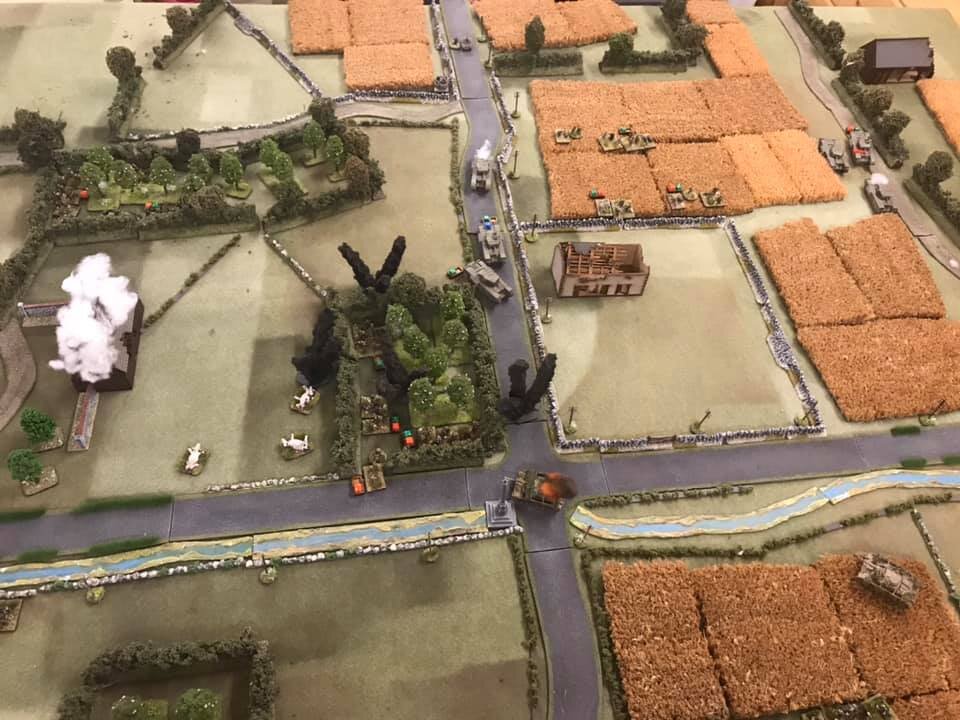I have been desperate to play a game of IABSM V3 since their recent release, but have been busy putting a Napoleonic collection together. Yesterday at the club gave me an opportunity to see the rules in action, and I thought they were great. Five of us played the game with two of us having played a couple of games previously, so it was a bit of a "hand holding" session as we all got to grips with the basics.
I selected the scenario Neuville au Plain from the All American scenario book, by Dave Parker, which covers the Normandy battles of the 82nd Airborne Division. This particular scenario has all arms represented so gave us a chance to see the full mechanics in action.
MAP OF THE BATTLEFIELD, GERMANS ENTER ON THE ROAD FROM THE NORTH (BOTTOM)
The historical battle on June 6th had 3rd Platoon, Dog Company, 505th Parachute Regiment, commanded by Lt.Turnbull, holding the village of Neuville, with a forward section placed in the farm (table centre). They had a bazooka team, a 57mm AT gun and a liberal sprinkling of machine guns to assist them in their defence. Their objective was to prevent enemy forces proceeding south down the road to St Mere Eglise.
VIEW FROM THE WEST WITH THE FARM CENTRE TABLE AND NEUVILLE TOP RIGHT
The American defenders were able to call on support from an additional platoon from Easy Company 505th.
The German forces in the area were the 1058th Grenadier Regiment from the 91st Luftlande Division and they had a full company supported by three assault guns and some medium mortars.
TABLE FROM THE EAST WITH NEUVILLE IN THE FOREGROUND AND THE ROOF OF THE CHATEAU CENTRE BOTTOM
The Paras in our game took up fairly historical positions holding the orchards in front of Neuville and blocking the north/south road with the section in the farm, backed up by the 57mm ATG on the crossroads in the village to their rear. The Germans entered the table on blinds on the road from the north and being quickly spotted by the US troops proceeded to break out into the fields with two sections supported by two assault guns going to the east flank whilst one platoon supported by the StuG probed the road and the farm complex.
THE NORTH/SOUTH ROAD SEEN FROM THE GERMAN PERSPECTIVE. THE FARM ON THE RIGHT SAW A BITTER BATTLE.
The use of blinds really adds flavour to the game with that feeling of uncertainty as both sides started to feel out each other's position. The Americans being deployed in cover and hidden only deployed dummy blinds, which greatly improved their spotting efforts but left the Germans very uncertain as to what they might "bump" as they approached buildings and orchards desperately trying to spot the enemy troops.
The battle kicked off when the platoon approaching the farm in the centre bumped the airborne defenders, promptly losing a section in the initial firefight. The Germans fell back to nearby hedgerows and called in their mortars and StuG for support in suppressing the defenders. The section commanded by Sgt Mitchum kept up a fierce fusillade throughout the game and his presence held the defenders firm.
The 57mm ATG took its opportunity to support the farm by shooting up the StuG on the road, causing damage to the vehicles gun sights and forcing it into cover.
ONE OF THE MARDER III ASSAULT GUNS SUPPORTING THE GRENADIERS APPROACHING NEAUVILLE ON "HUNT" ORDERS
With the furious battle going on in the centre the main German effort focused on penetrating the US defences via the orchards in front of the village. The first section entering the trees with the MMG section in support was immediately engaged by a Para section under 2nd Lt Fonda who during the ensuing battle was killed, not before his force had pushed the German troops back to the hedge row bordering the plantation.
THE GERMAN COMPANY COMMANDER HAUPTMANN PFEFFERBEISSER AND ZUG 3 LEADER FELDWEBEL BRATWURST OBSERVE THE INITIAL STAGES OF THE BATTLE
With both flanks of their attack pinned down in an attritional firefight, the German commander went for the direct approach by sending his third platoon across the field in front of Neuville supported by the other Marder. This was met by a fusillade of fire from the Para mortar section armed with two 30cal machine guns having lost their mortars in the drop but finding the machine guns en route to the village. They also loosed of a couple of bazooka rounds that narrowly missed the Marder, and with the losses inflicted on the German infantry and the death of their Zug Commander, this force was also forced back into cover.
With the arrival of 1st Platoon Easy Company into the defences, that stabilised American losses, we called it a game.
The Germans had lost a platoon of infantry and the American defenders, one and half sections, but the defenders were holding firm in a very strong position with all the indirect fire support and anti tank assets still available.
We felt the game really captured the command and control difficulties that this kind of battle generated. Unlike other WWII games I have played, you can't make "swooping" moves across open terrain in front of enemy troops without getting badly shot up. You actually have to adopt the tactics of the day by attempting to pin with part of your force whist manoeuvring with the other and keeping your leaders close and in touch to keep events under control. It was also notable that as the game went on commanders started to sacrifice some of their fire to save an action to take cover making their troops a harder target to the inevitable return fire.
The play of the game is greatly enhanced by the Fire Table that IABSM uses. This chart not only resolves fire combat but sorts out the morale results all in one go, "brilliant"!! This means reduced die rolling, less checking and more gaming. In addition any potential casualties are resolved simply using a d6 (1,2 = no hit, 3,4 = shock, 5,6 = dead) which means you can learn to resolve combats really quickly. I am looking at other rules I use far more critically now as I am starting to feel life is too short to be wasted on numerous checks and lists of factors.
The game really roles along and even though you are using cards to determine activity we squeezed in 12 moves of play in an afternoon of gaming, and most of us hadn't played the rules before.
Congratulations to Too Fat Lardies for a great update to their original rules, I think I will be playing a lot of IABSM in future.
Thanks to Ian, Steve M., Jason and Nathan for a fun game
Carojon
















